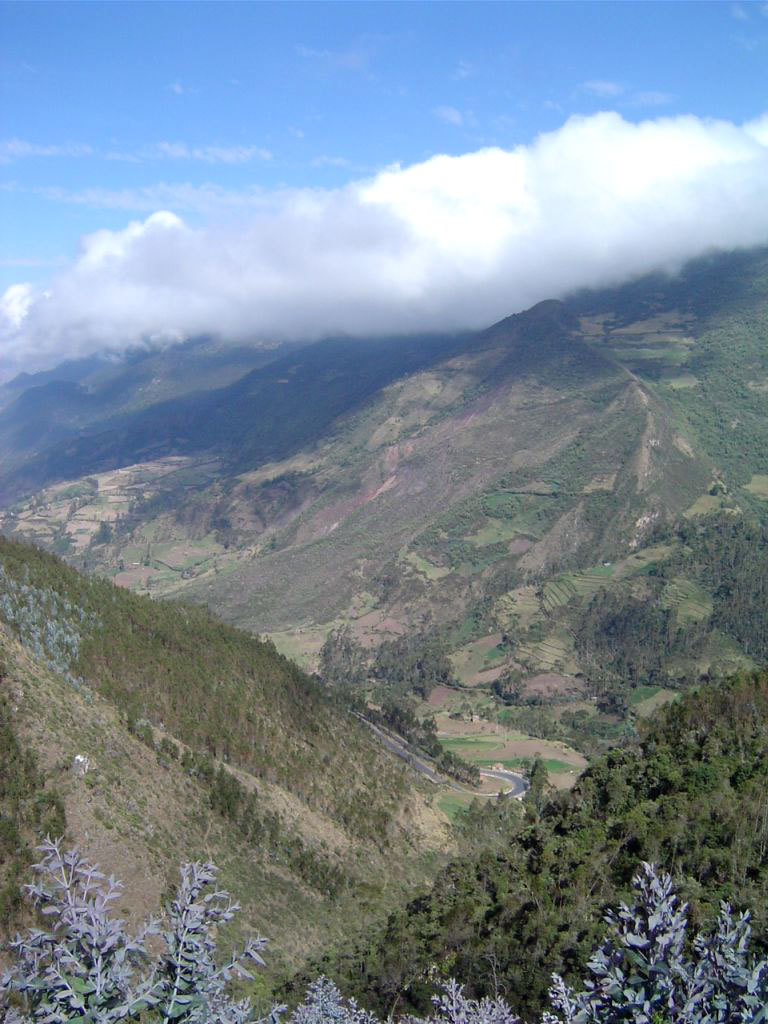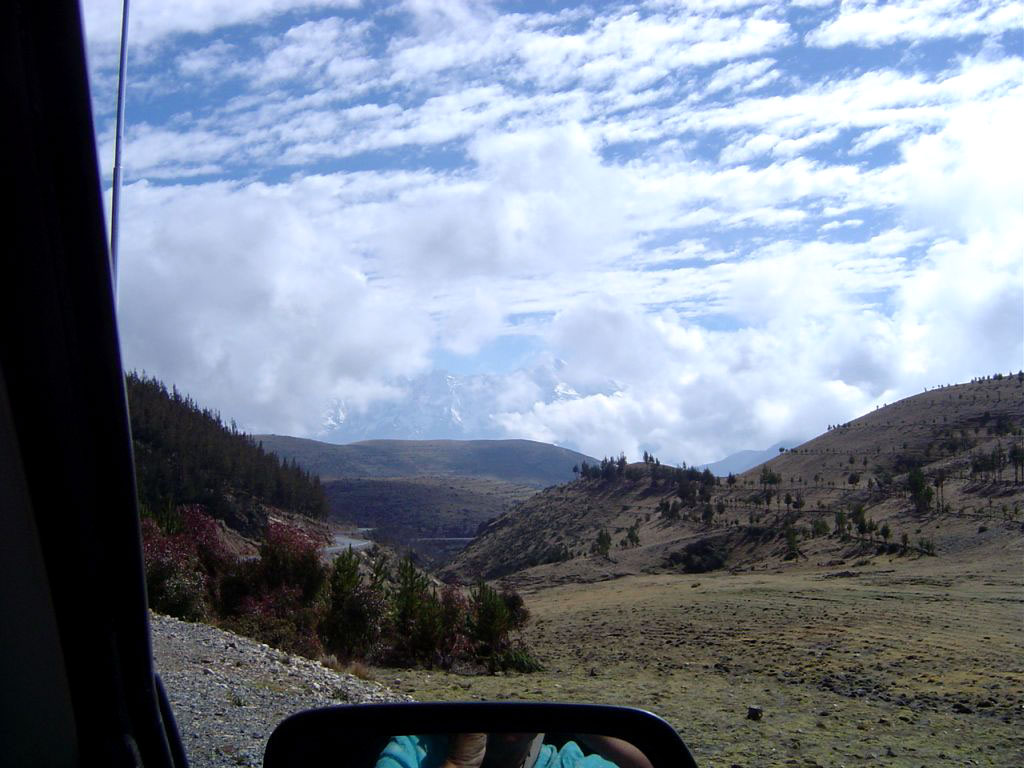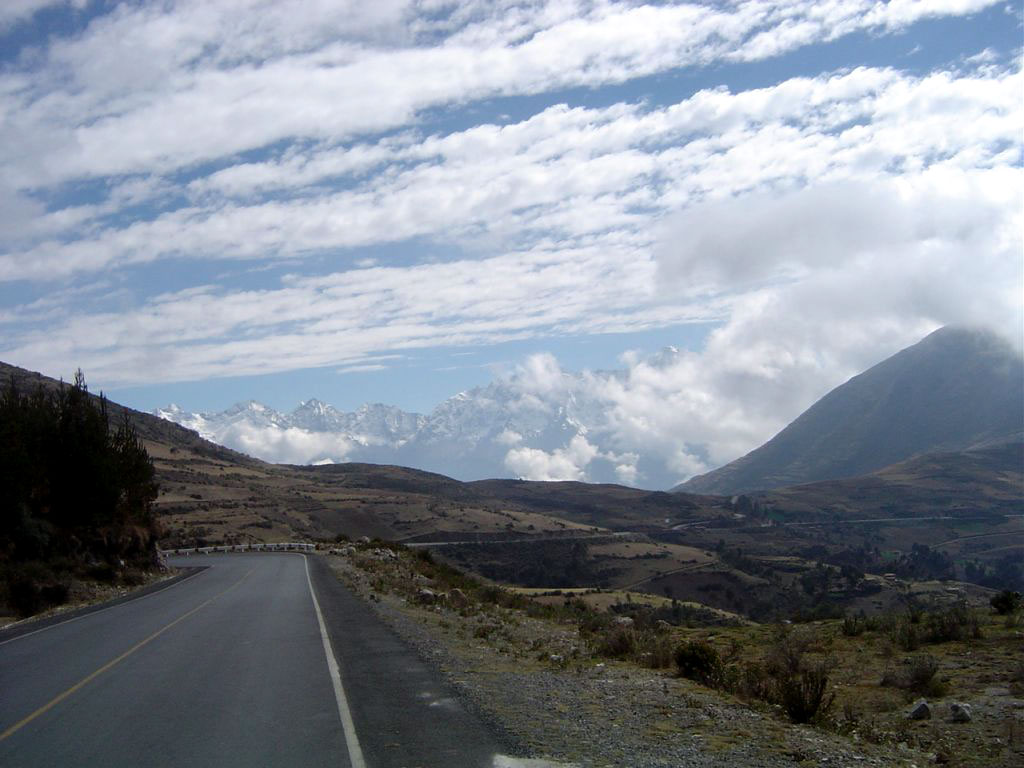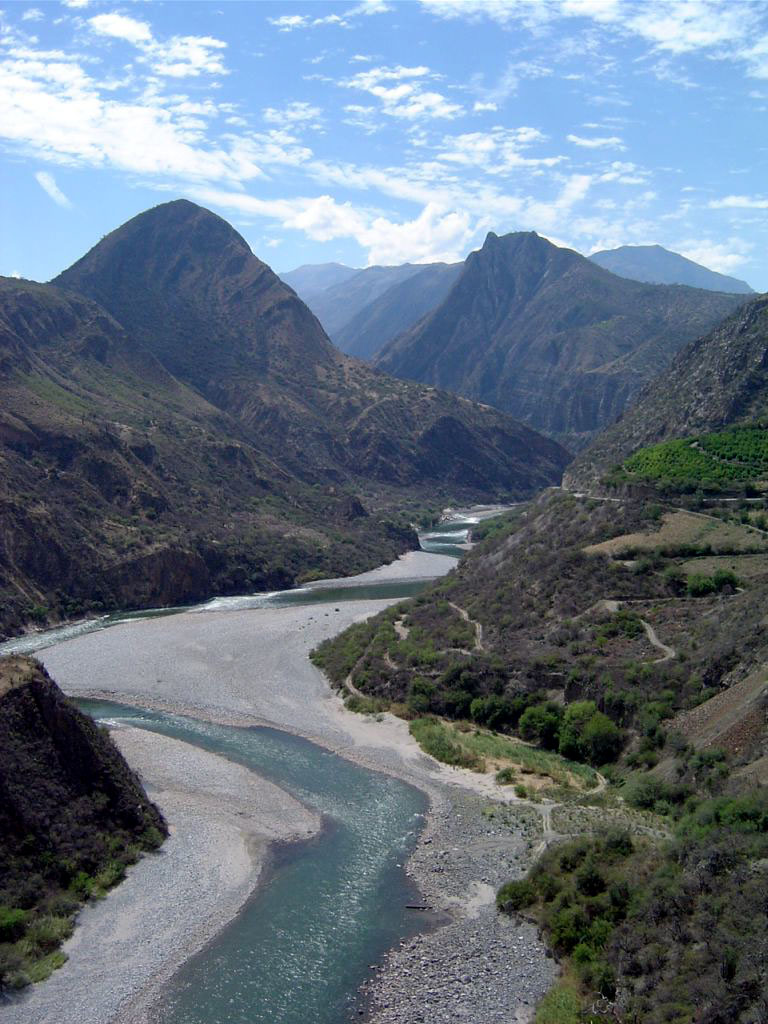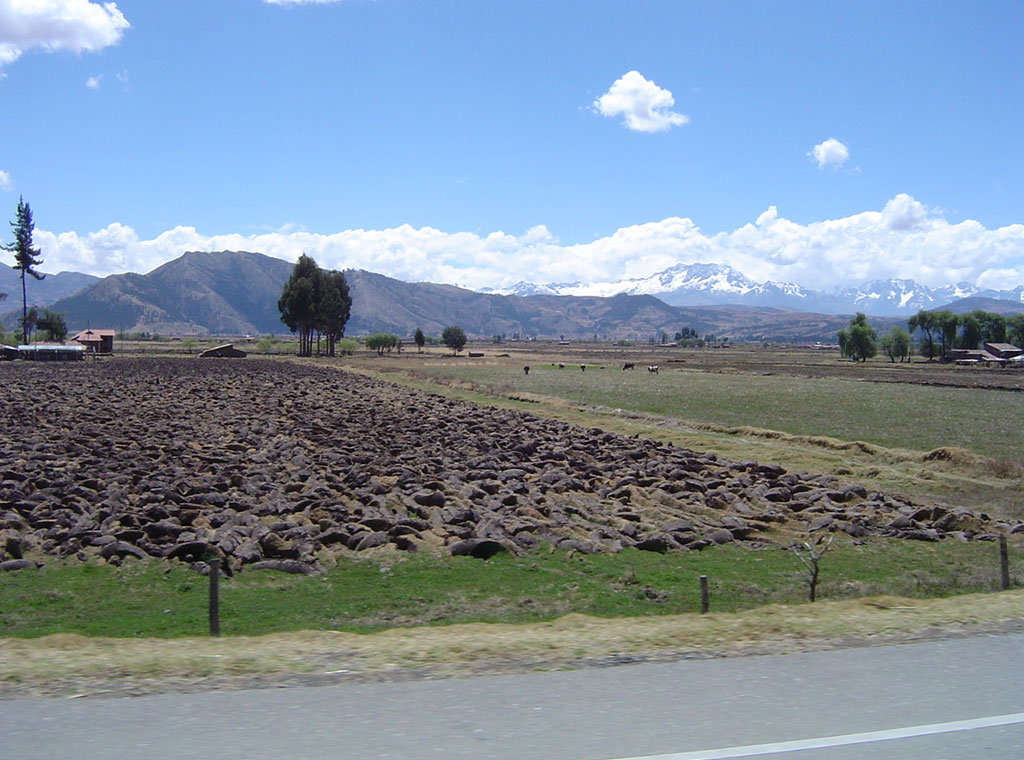Peru
August, 2004
August 22nd
The only way to get to Iquitos is to fly from Lima or take a boat up the Amazon; the city is not connected to the rest of the world by a road. Lan Peru flies a shiny new A320 Airbus to Iquitos every day, so we signed up for an hour and a half ride. Rio Maranon and Rio Ucayali join to form the Amazon about 200 km from Iquitos, a sight easily spotted from the air.
Jackets required in Lima seemed out of place as we stepped off the plane in the jungle. No matter how you dressed, you were certain to be ill-prepared for one end or the other. The temperature jumped from 12C/53F to 30C/90F. Two dead DC-8 aircraft, long outmoded by more fuel-efficient models, decorated the area near the terminal.
The Doral Inn organized a "real" taxi to pick us up at the airport for the half-hour ride into town. We passed hundreds of moto-taxis along the way.
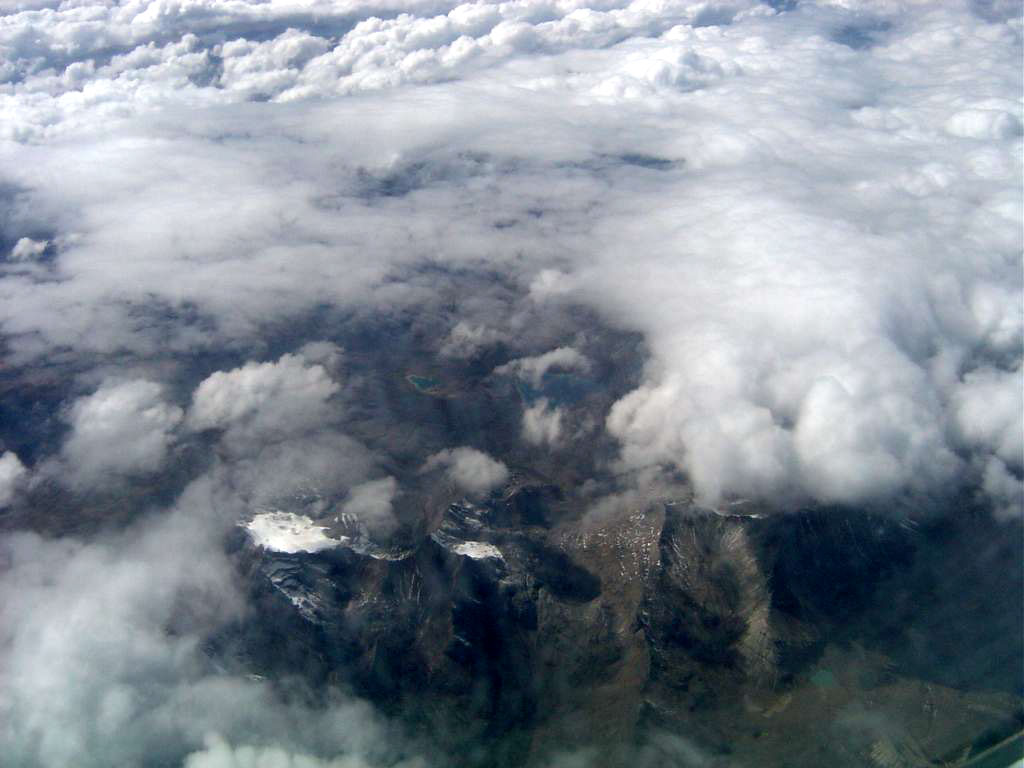
Crossing the Andes from Lima to Iquitos
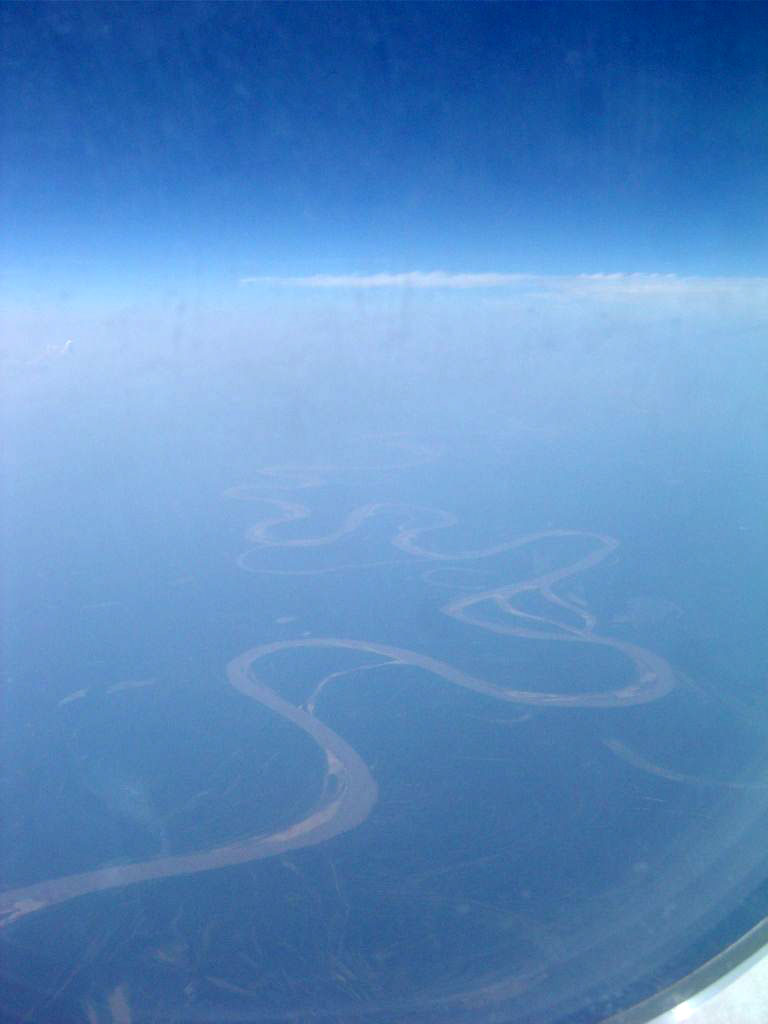
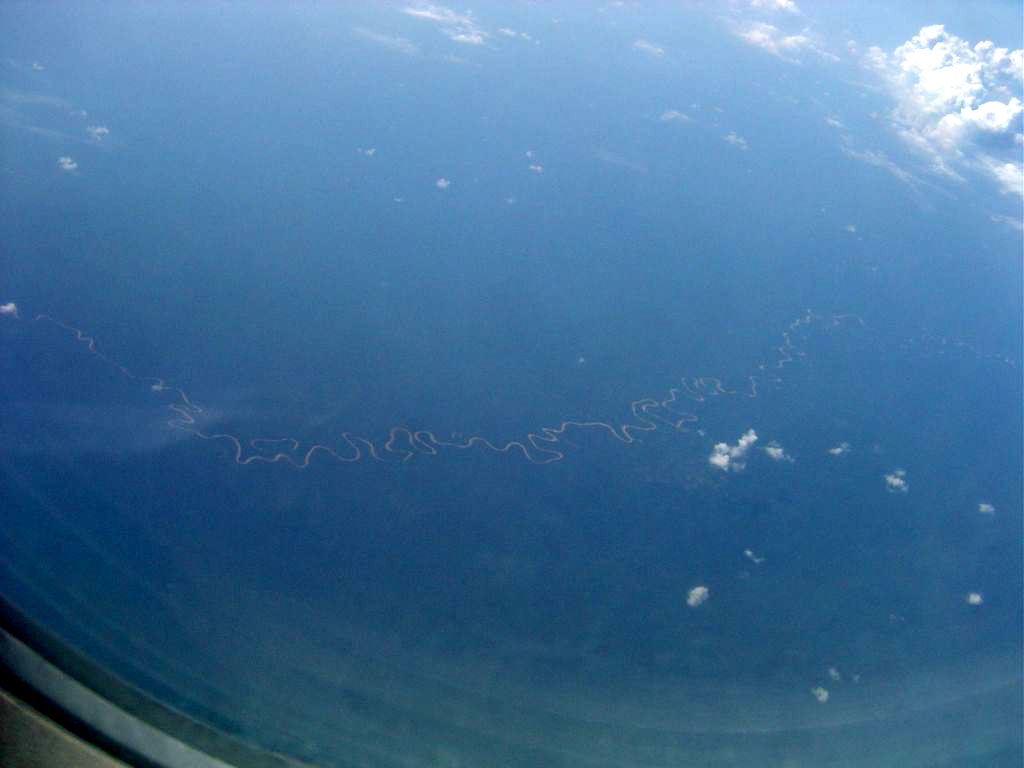
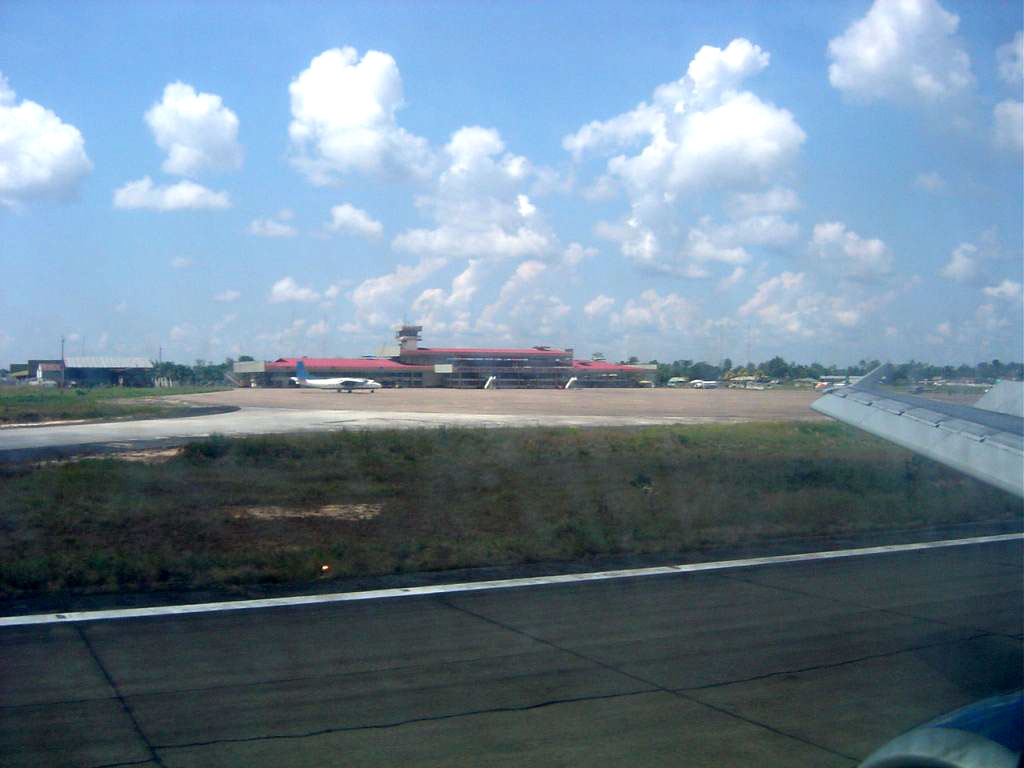
Arriving in Iquitos
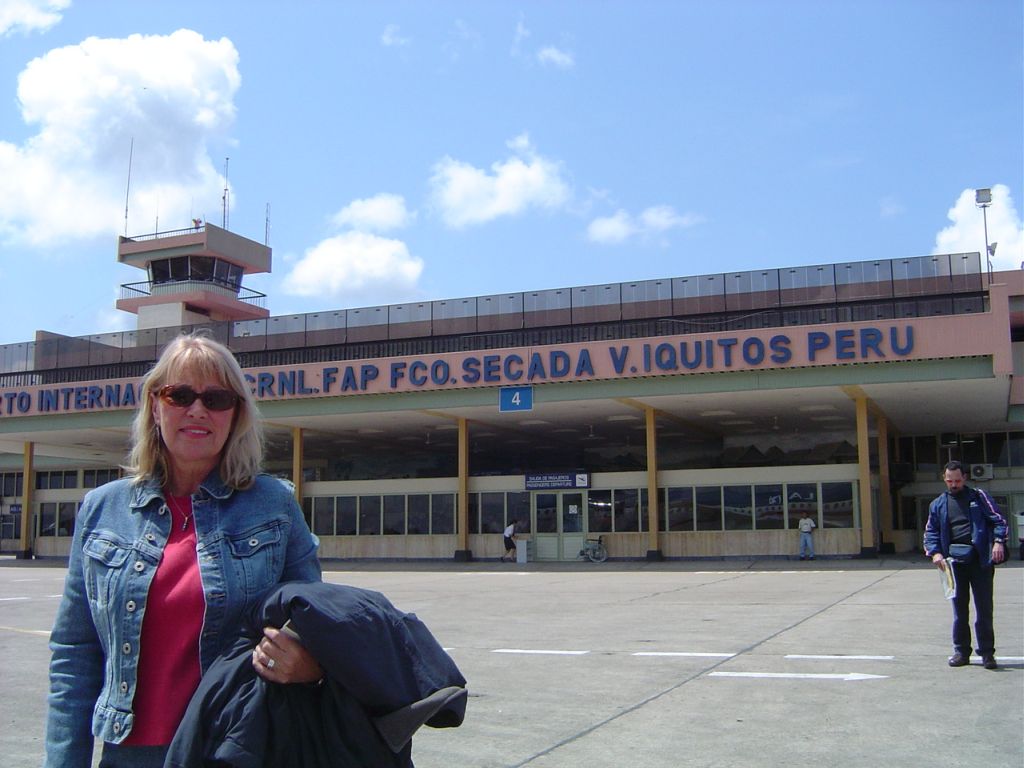
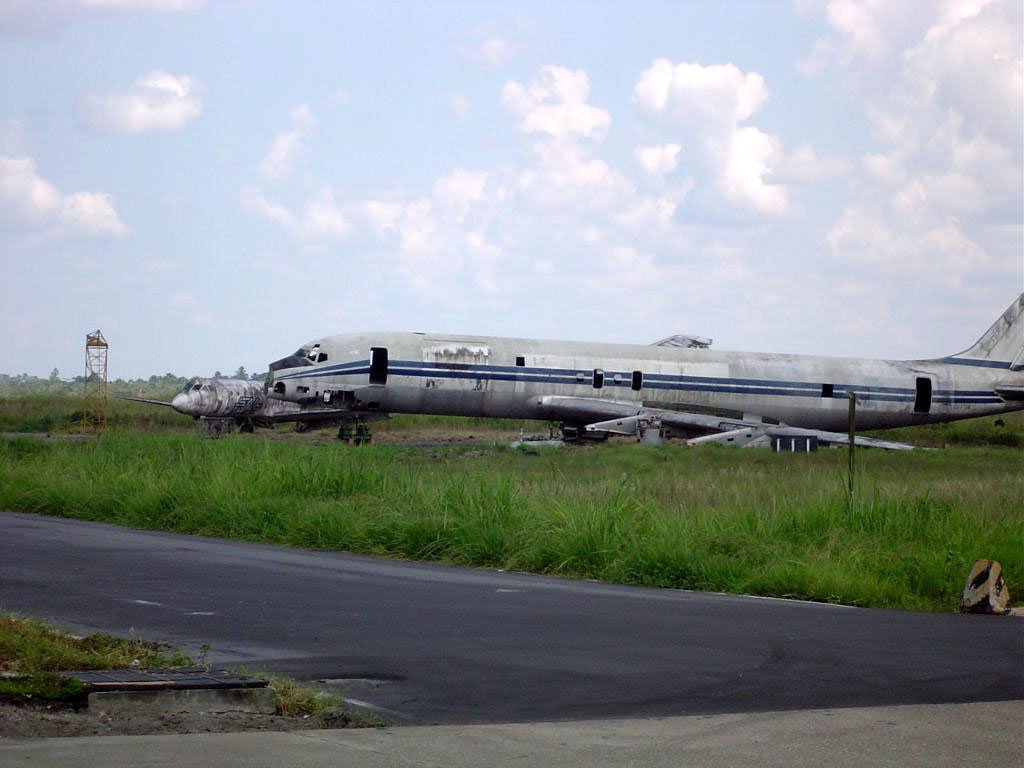
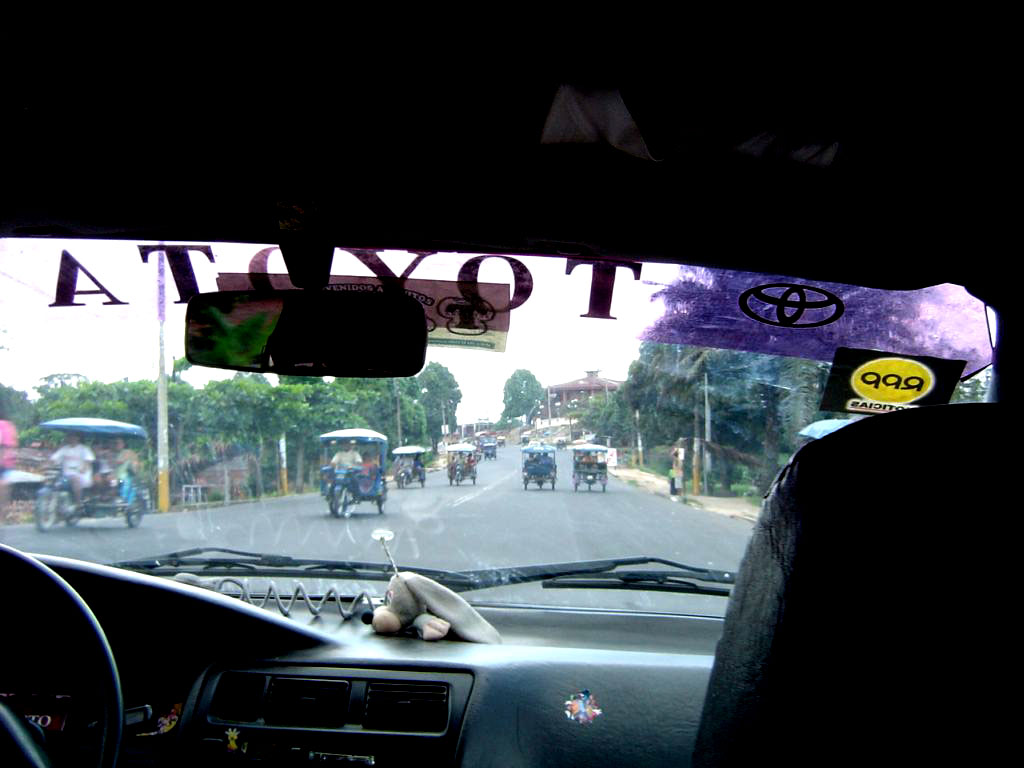
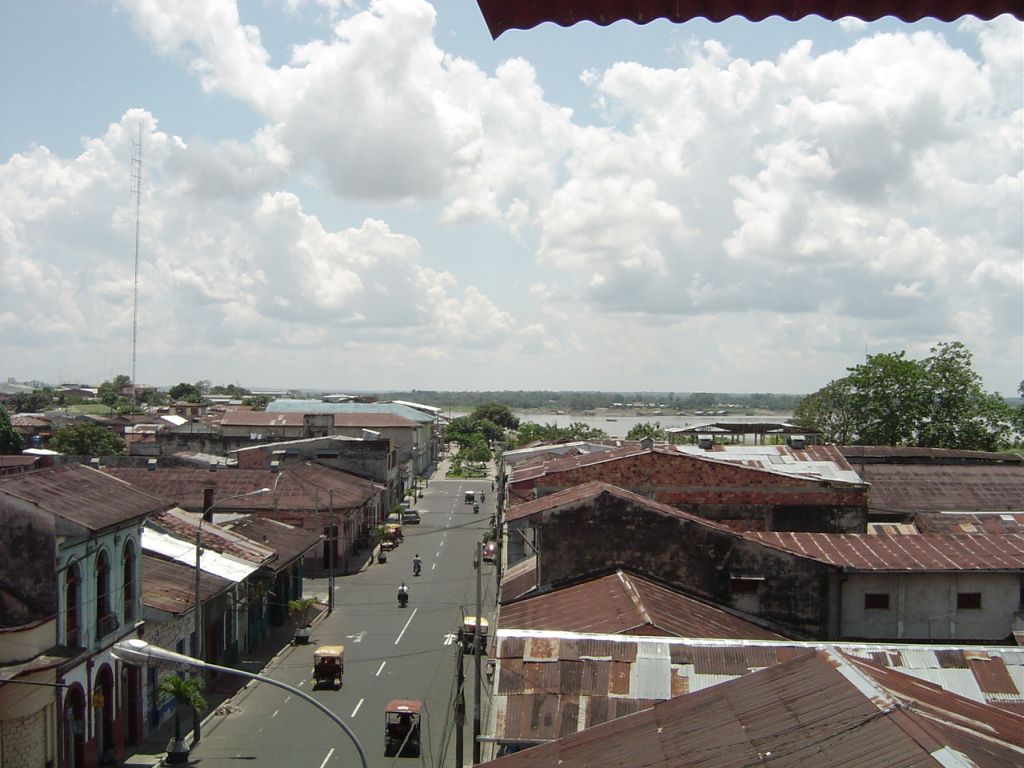
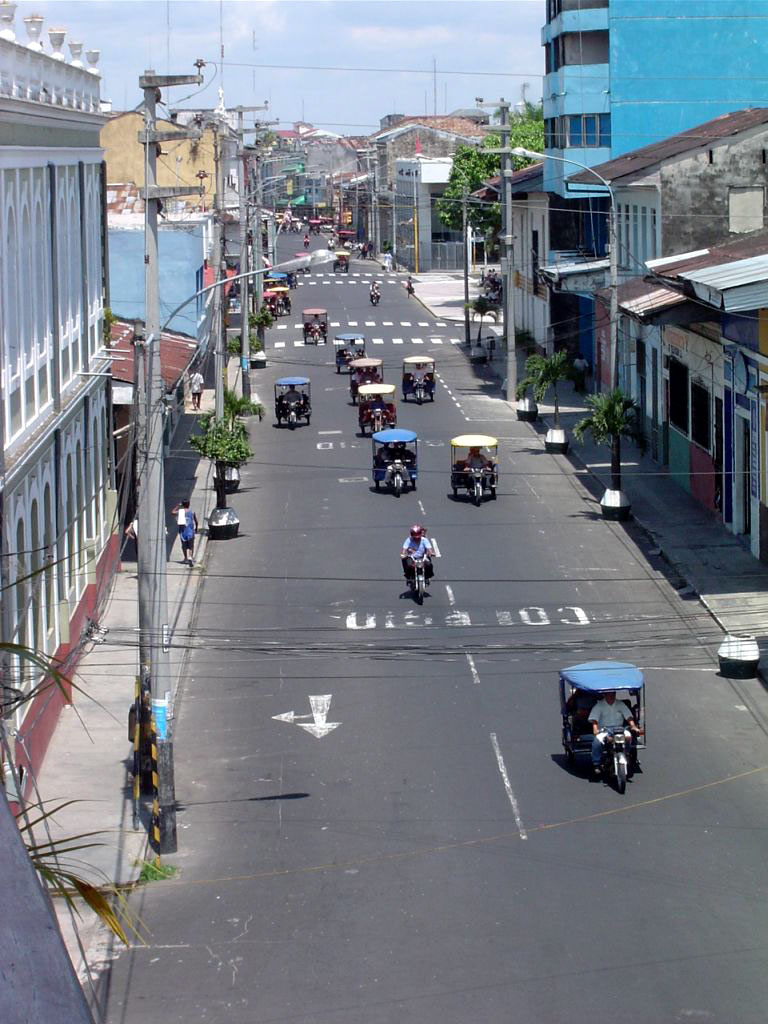
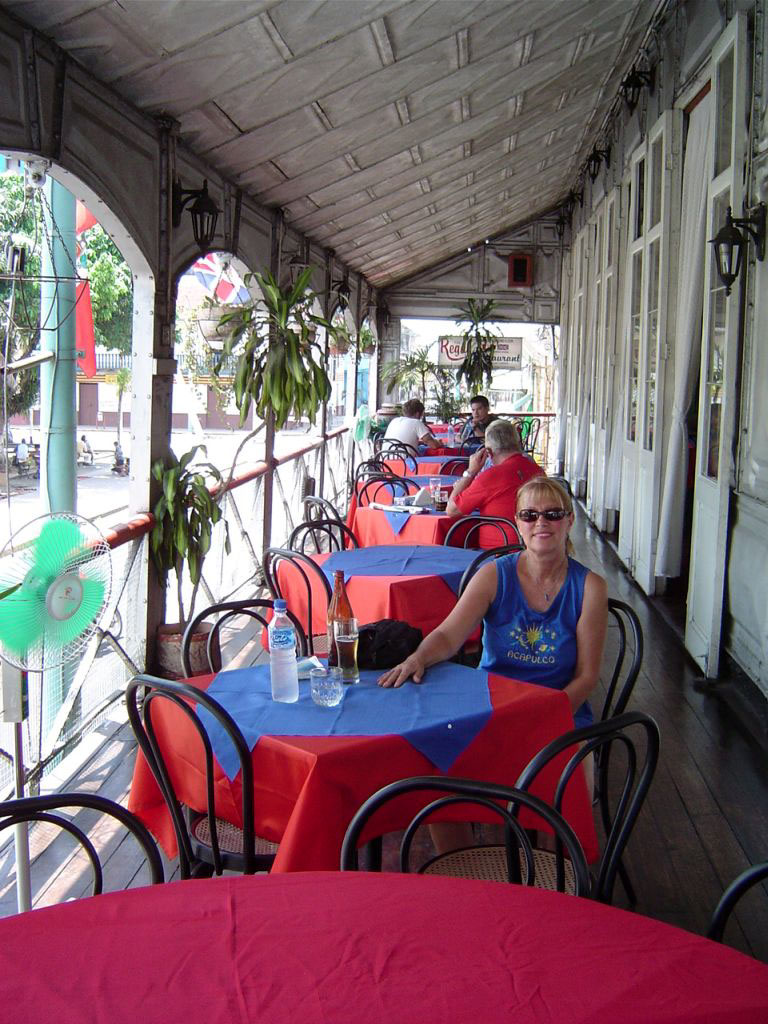
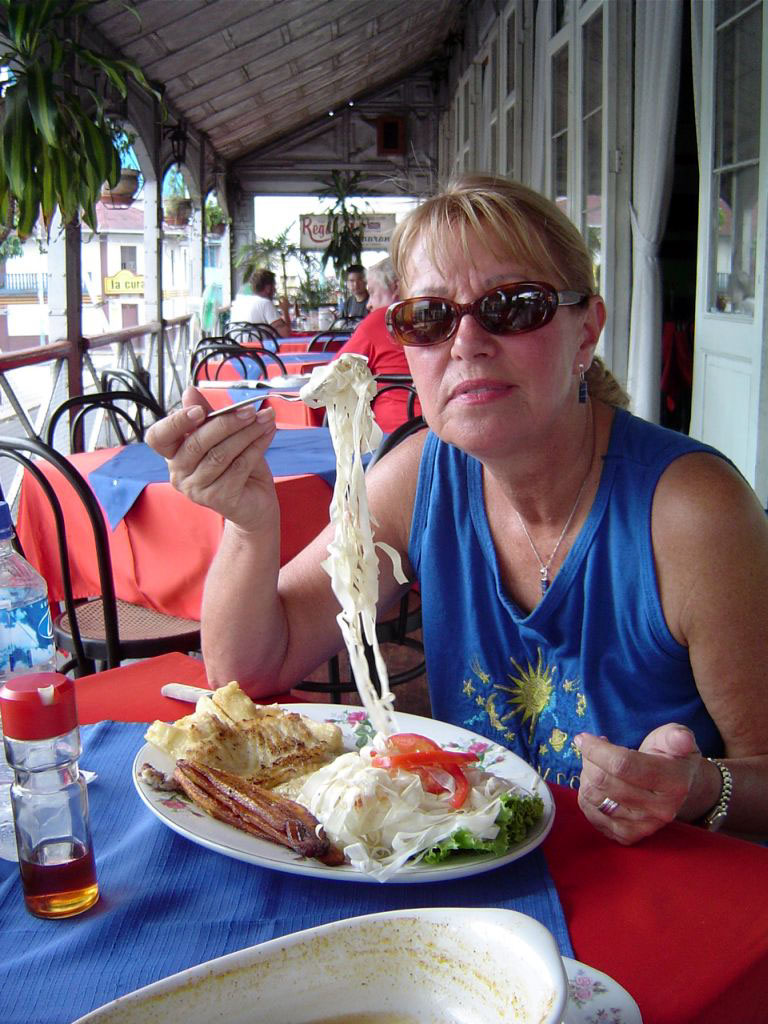
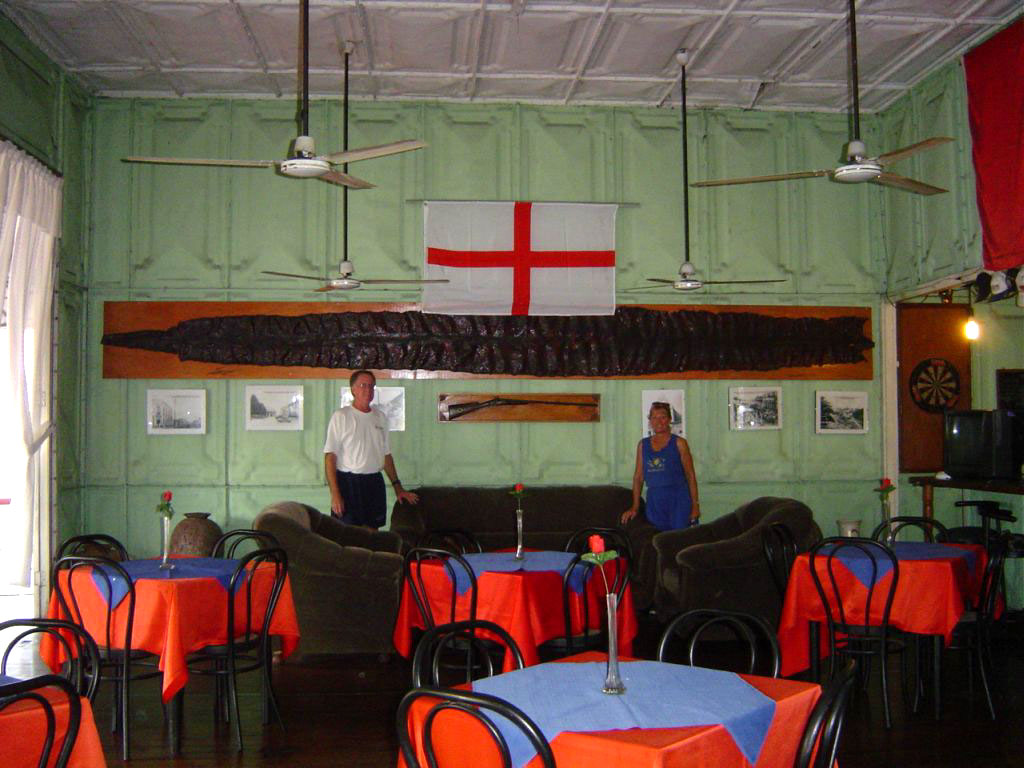
That's a giant snake skin on the wall above our heads
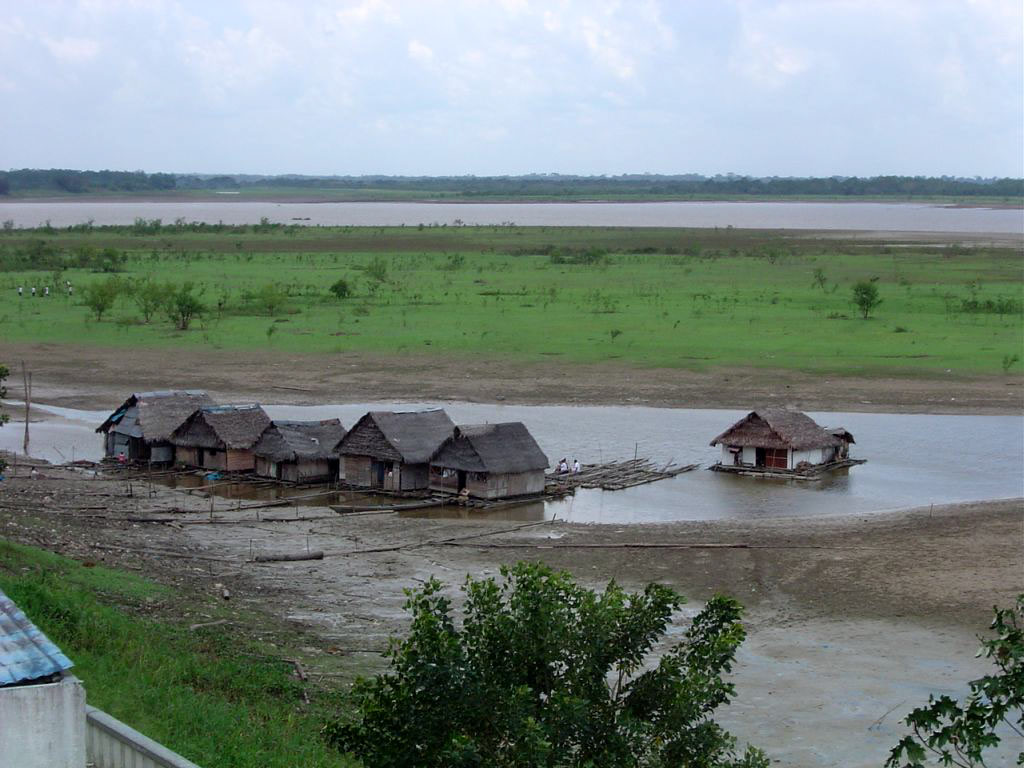
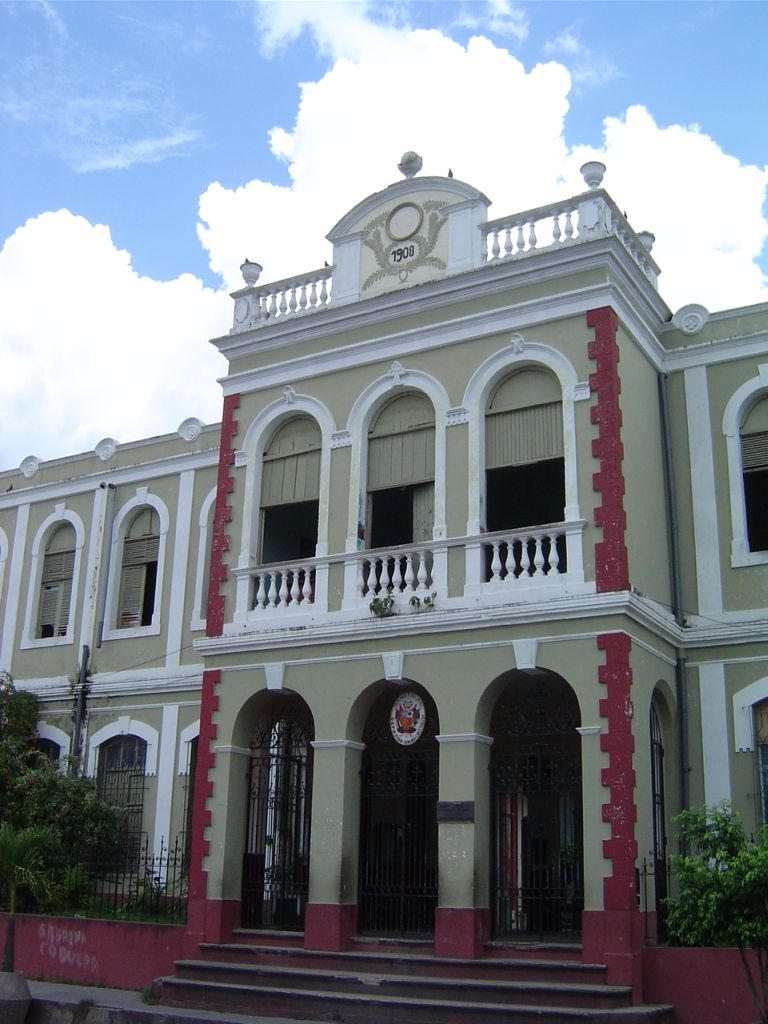
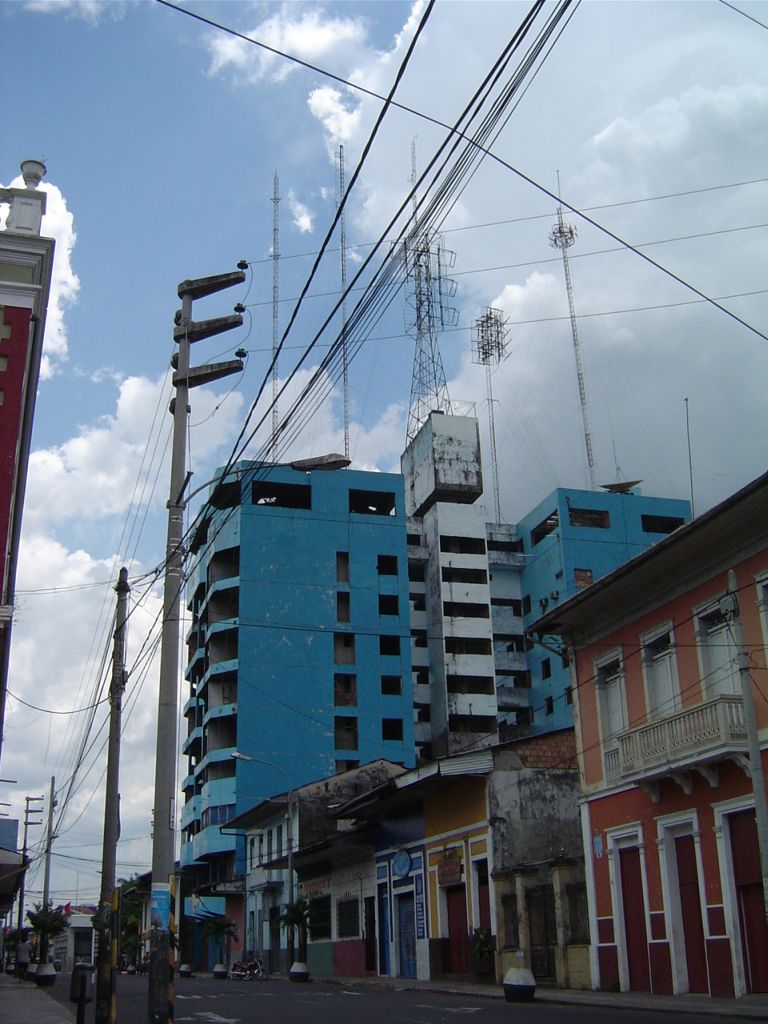
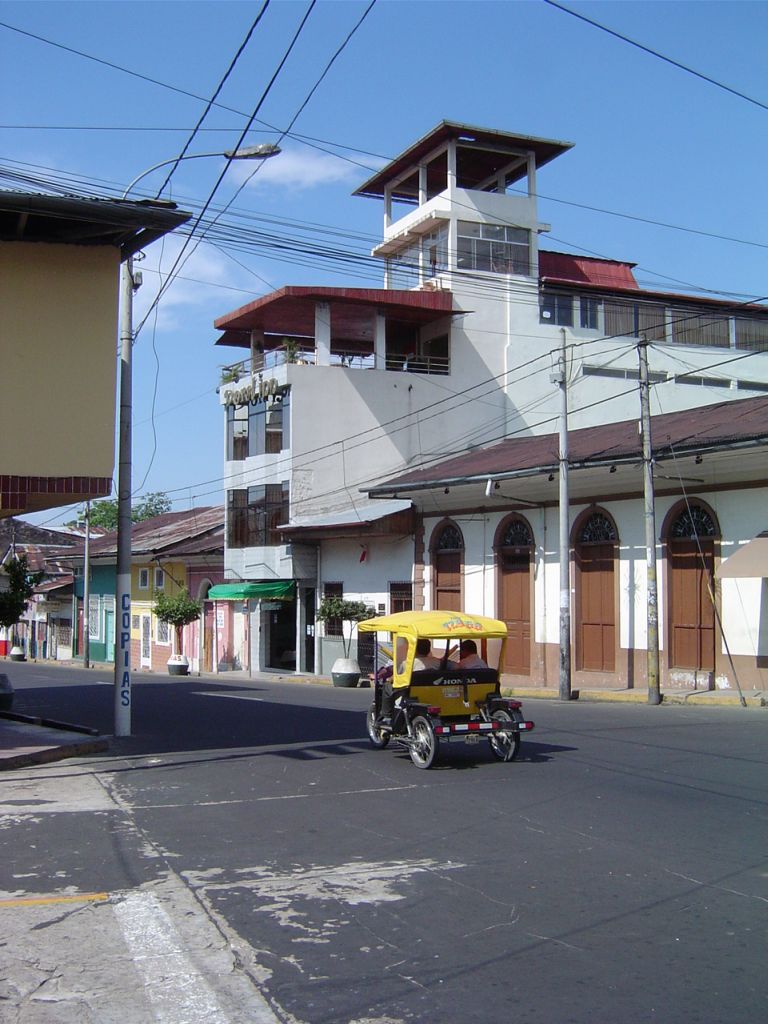
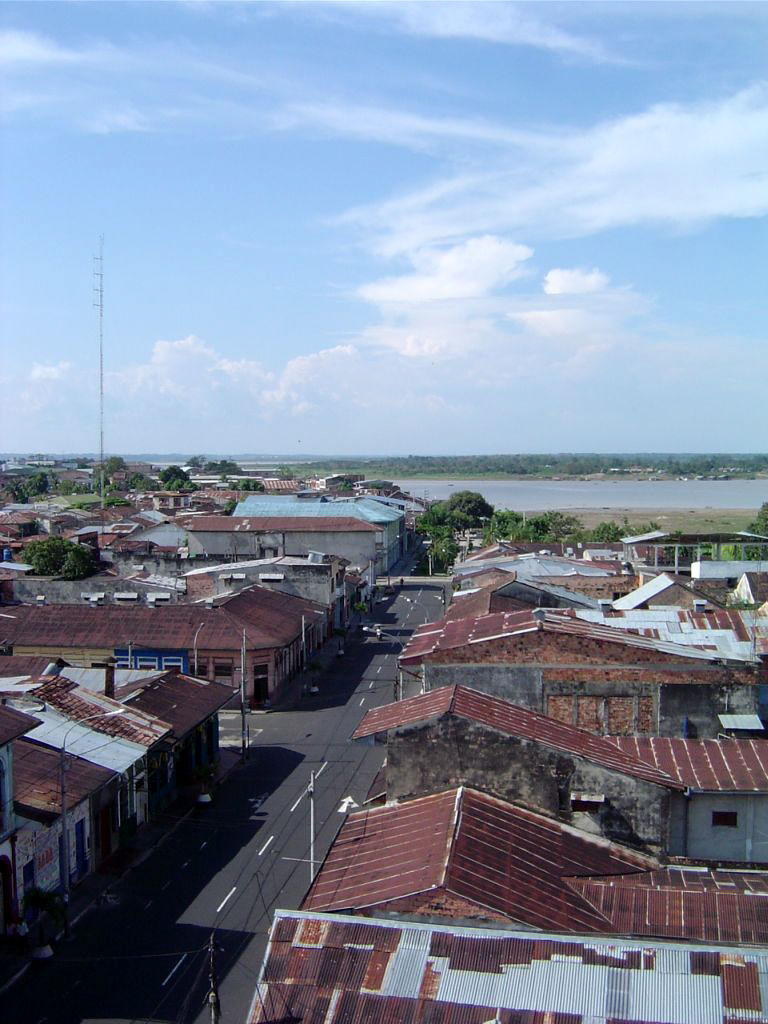
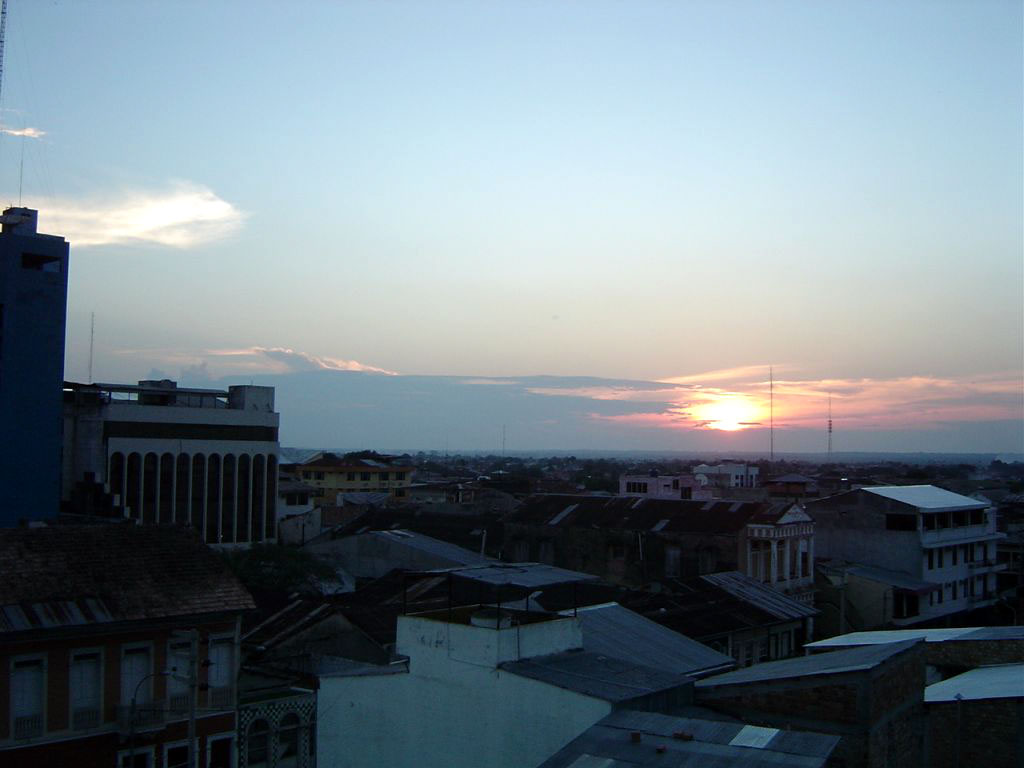
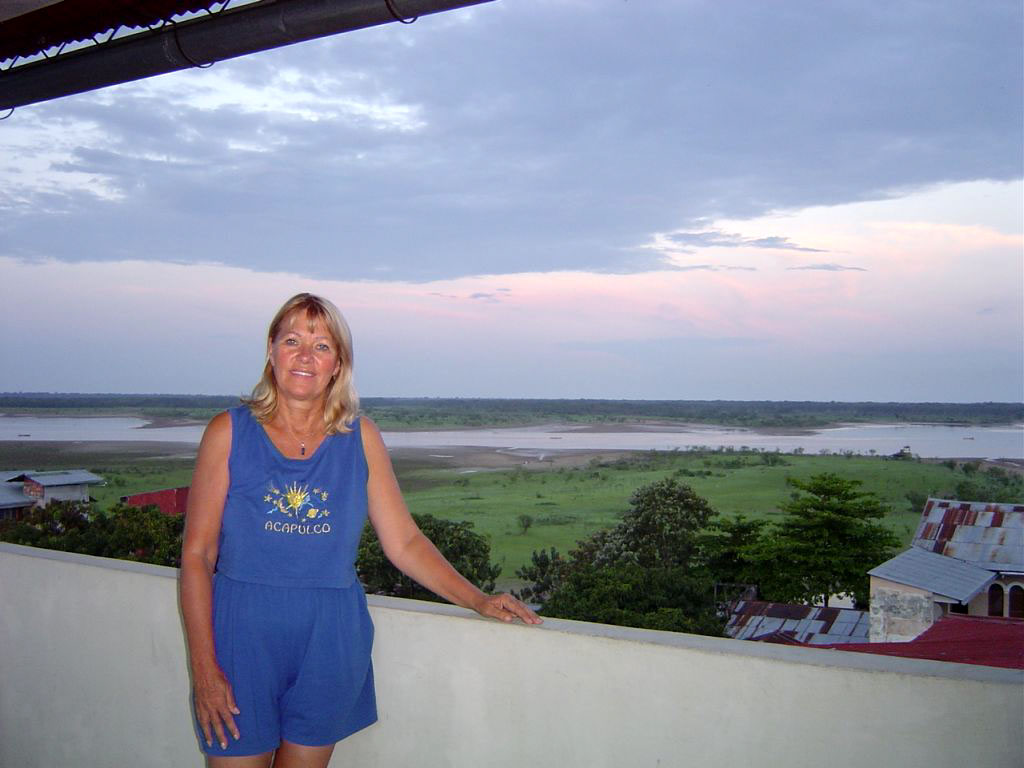
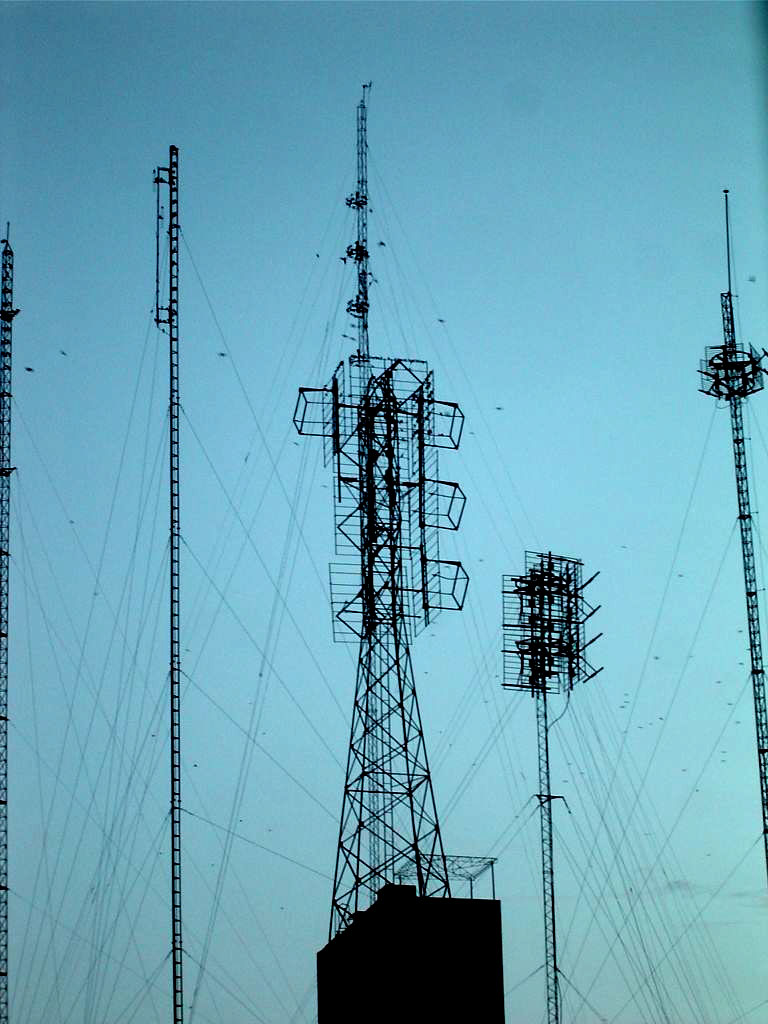
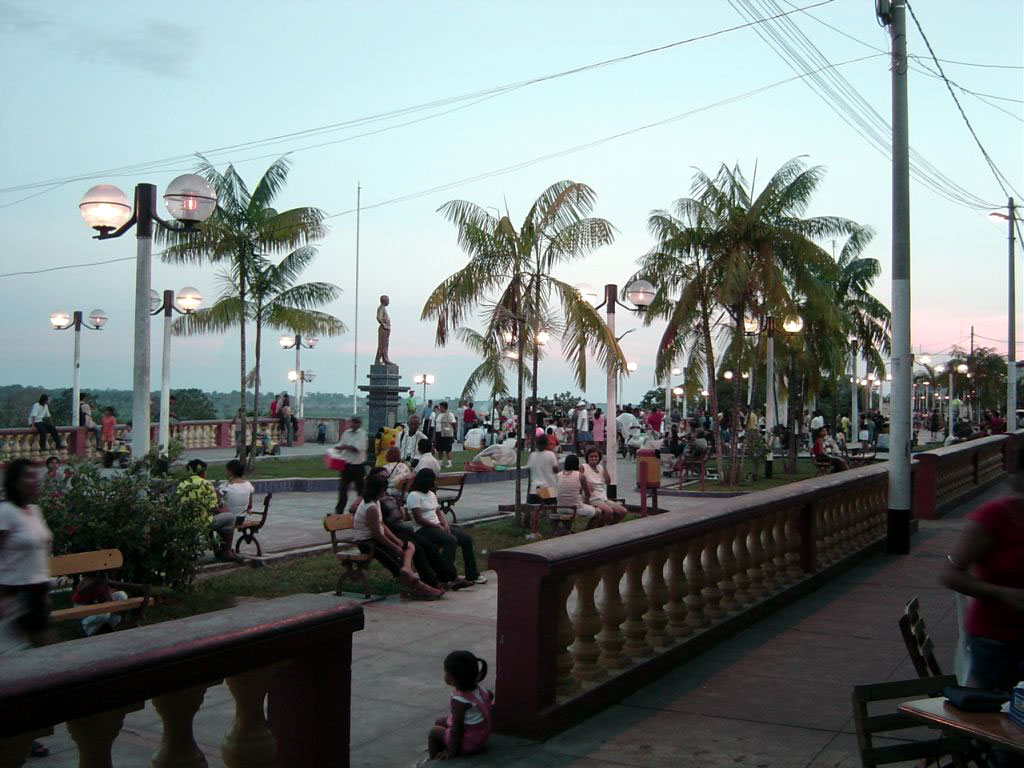
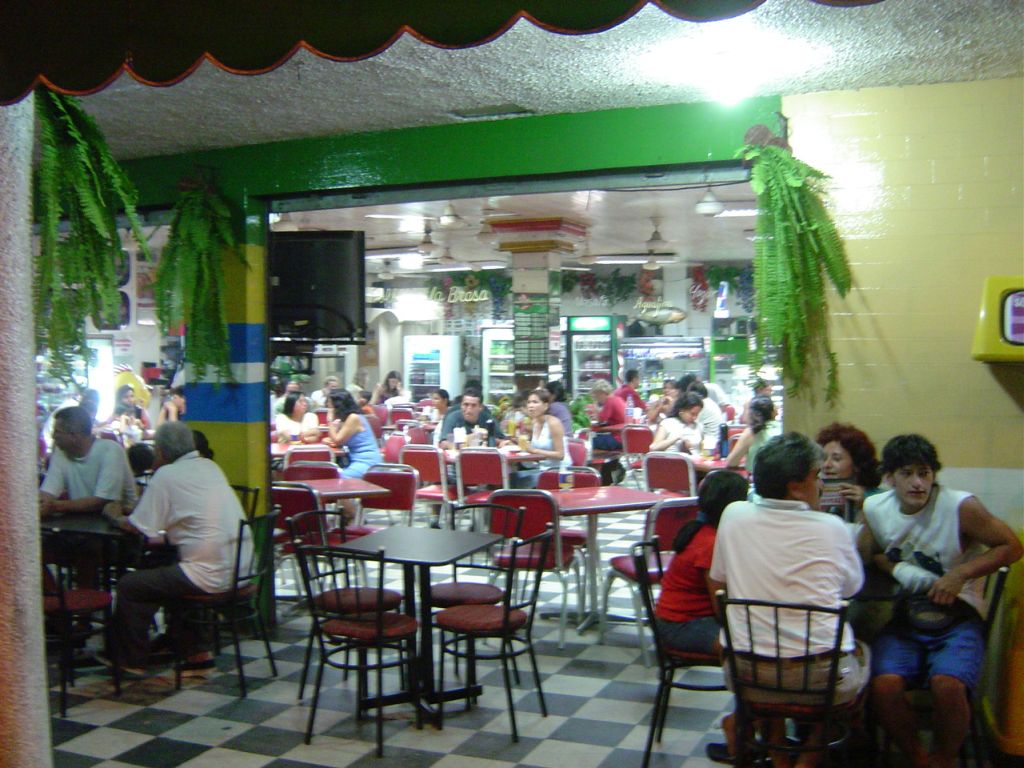
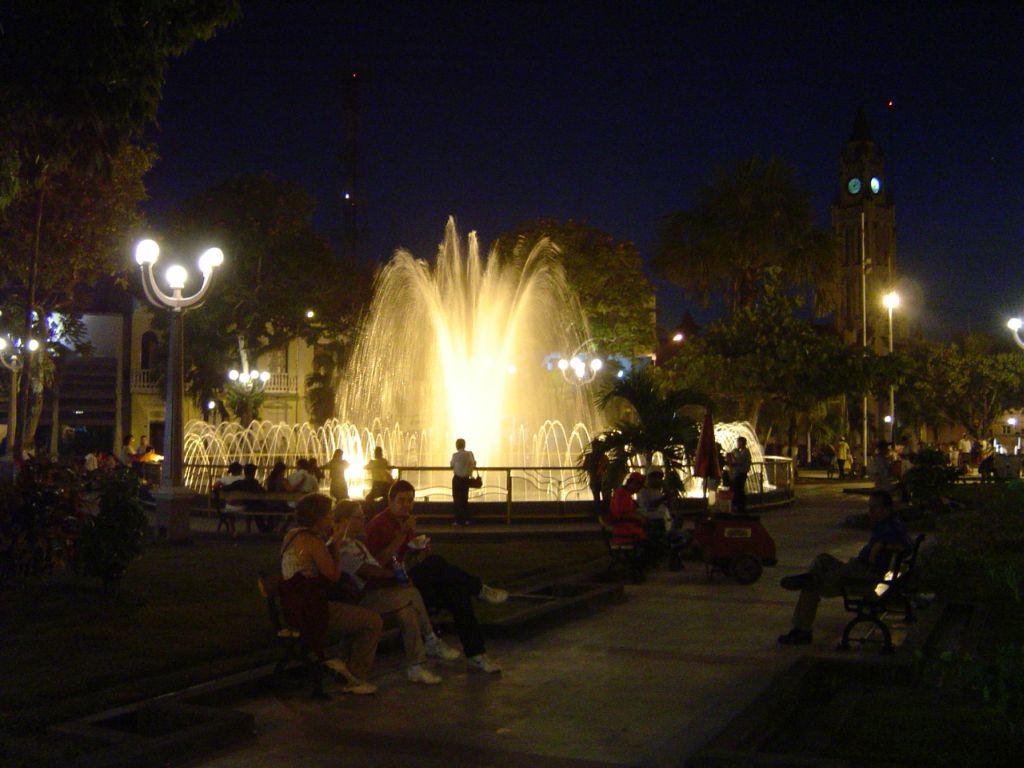
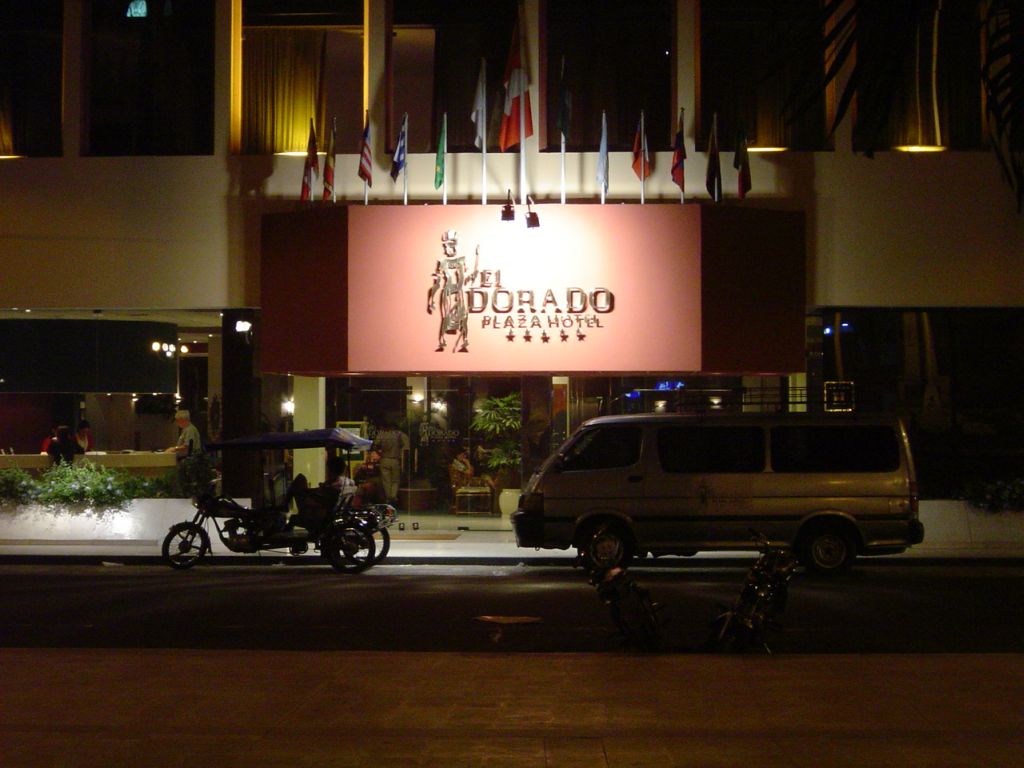
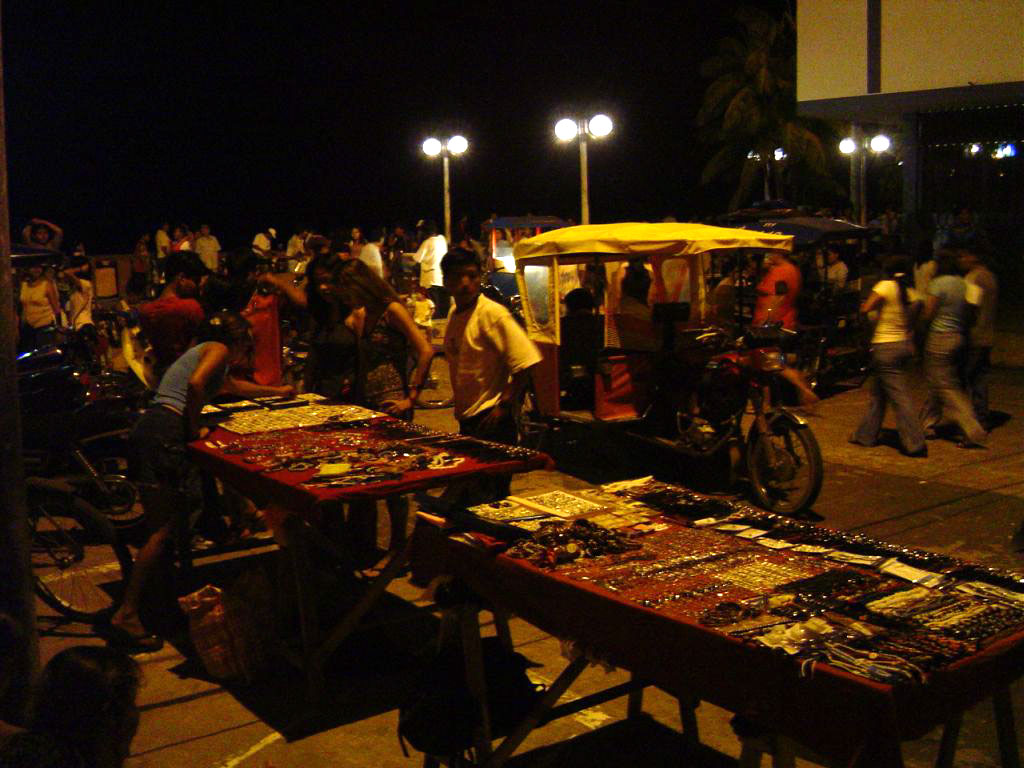
August 23rd
Our tour guide, Christian, met us at his office and took us to our boat, along with a few gallons of paint and a huge block of ice, to be delivered down-river; everything does double-duty here. The Amazon, already hundreds of feet wide, flows swiftly to the Atlantic Ocean, thousands of miles away, dropping only 300 feet along the way. It serves as a highway where no roads exist. Petroleum is barged up the river. Tree trunks, rafted together, float down to sawmills near town.
We stopped at a "zoo" along the river. Actually, a family had captured a few animals and caged them near their house, a short walk from the river-bank. We got to hold a baby alligator and a five-month old three-toed sloth. Elsa scared the poop out of a baby monkey they held out to her. We didn't get to hold the ocelot; it wasn't too happy about being removed from its cage. The anacondas were only to eager to hold us.
A buffet lunch was served at one of the "river adventure" camps in the jungle, where people typically stay two or three nights. Tiny Mandarin monkeys attacked bunches of bananas tied along the walk-way outside the restaurant. With no electricity and no lights at night, the day ends at sunset and begins again at sunrise.
The shaman who was supposed to show us the healing properties of jungle plants, missed his appointment. He was probably playing soccer with the kids.
We pressed on into the jungle to a native village where the chief, dressed in a grass skirt, greeted us by painting our faces with stain from a native fruit. His blow-pipe manager showed us how to load a short wooden dart into the six foot long blowpipe, which towered over him when held upright. He hit his target, a vertical pole about 30 feet away, then handed the blow-pipe to me for a chance to try my luck. I hit the target on my first try, surprising the whole village, as well as myself.
The most important part of our visit to their village was an opportunity to buy their trinkets. We purchased a short version of a blow-pipe and a necklace made from a piranha jaw-bone for 10 Soles, or $2.85 US.
The native method of squeezing juice from sugar-cane surprised me. I was expecting the cane to be fed into a machine with gears like the one we saw in Cuba, but their method pre-dated that. A five-foot piece of iron-wood, chosen for its weight, was fed through a hole in a log, crushing the cane against another piece of wood. The juice flowed down a trough into a bowl. After as much as possible was squeezed out, the cane was folded back against itself and the ends held tightly in the press by sitting on the iron-wood. That freed the operator's hands so she could use a short stick to twist the cane, recovering the last few drops.
An afternoon shower started as we headed back to our boat and continued until we reached Iquitos.
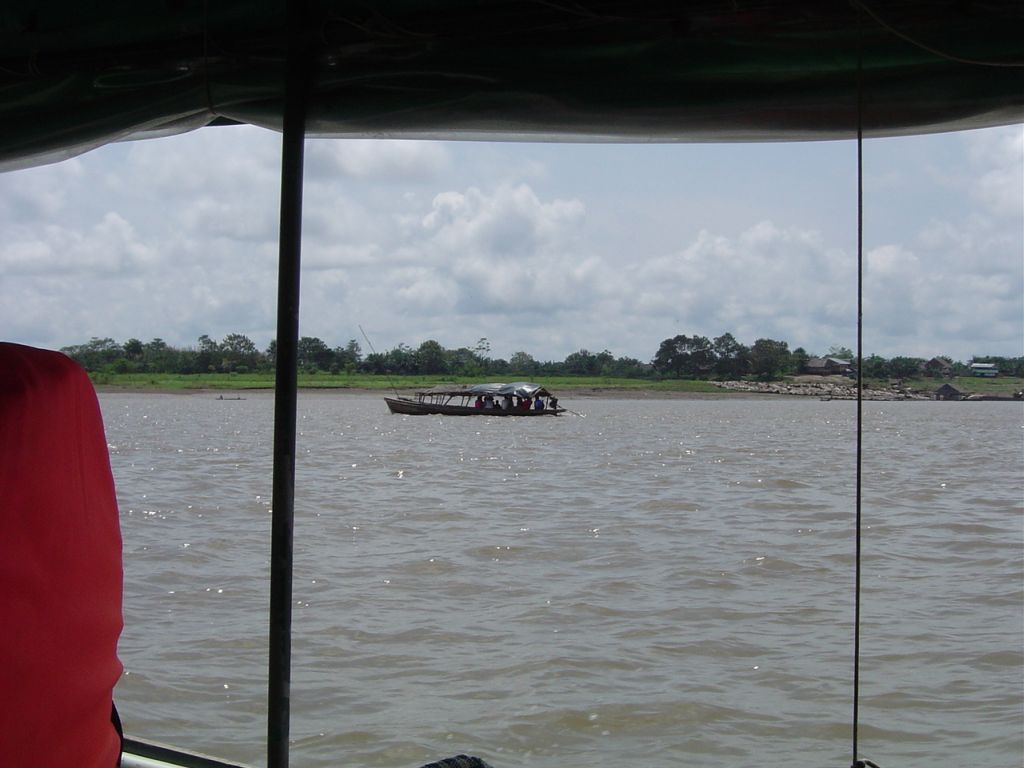
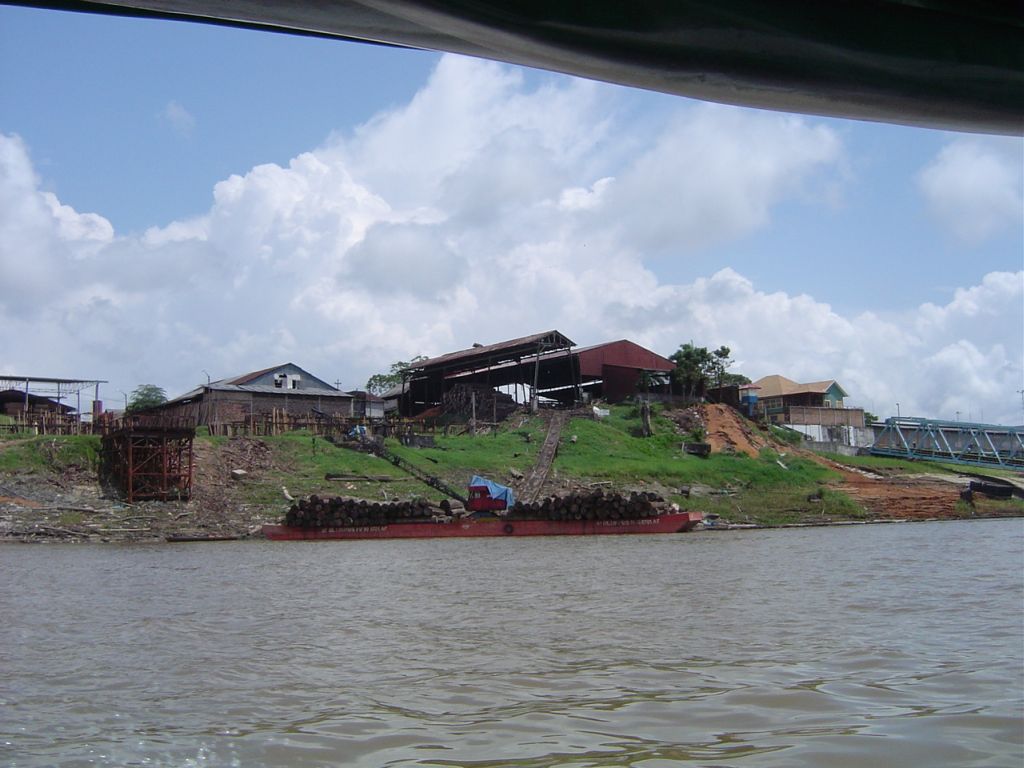
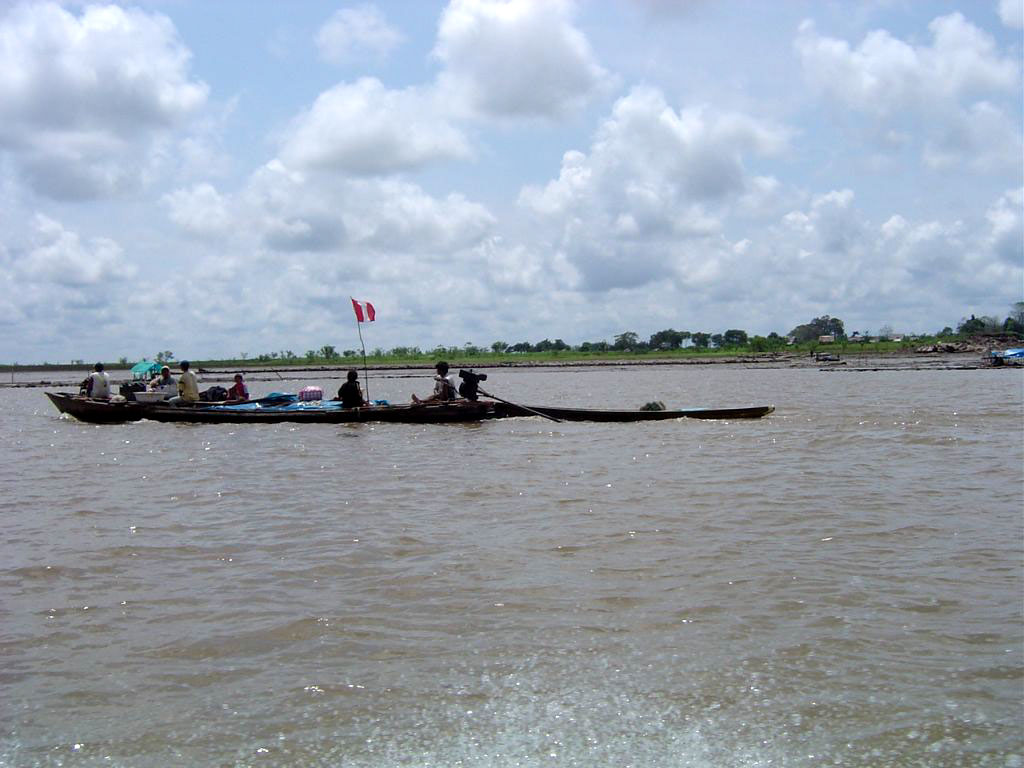
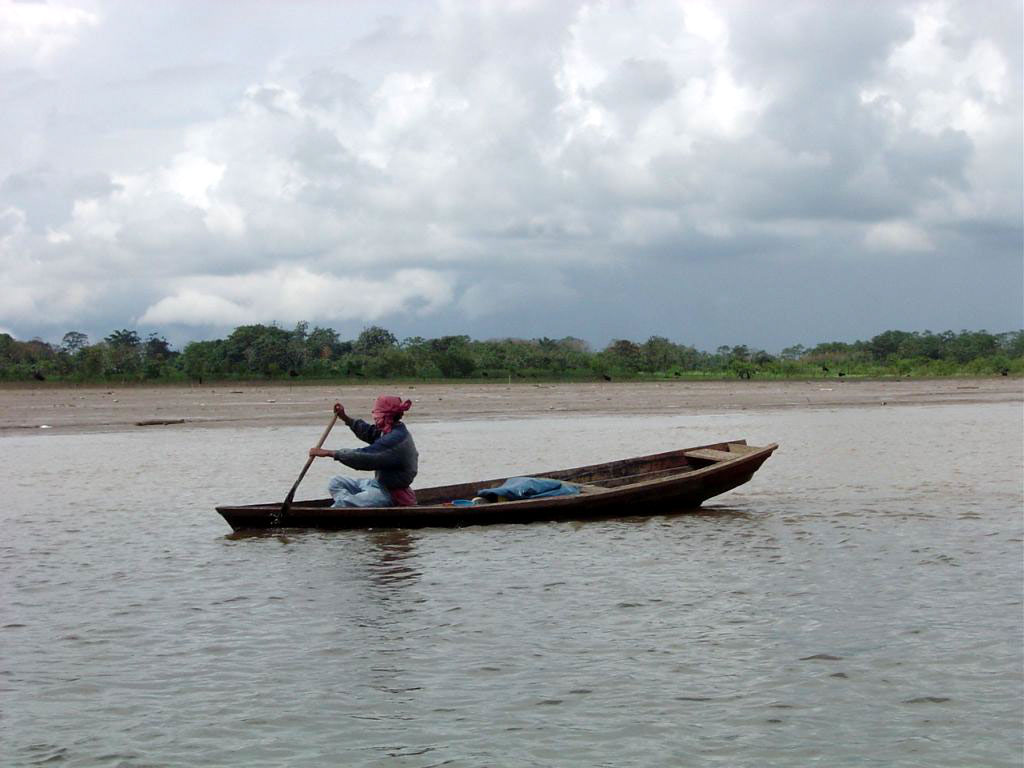
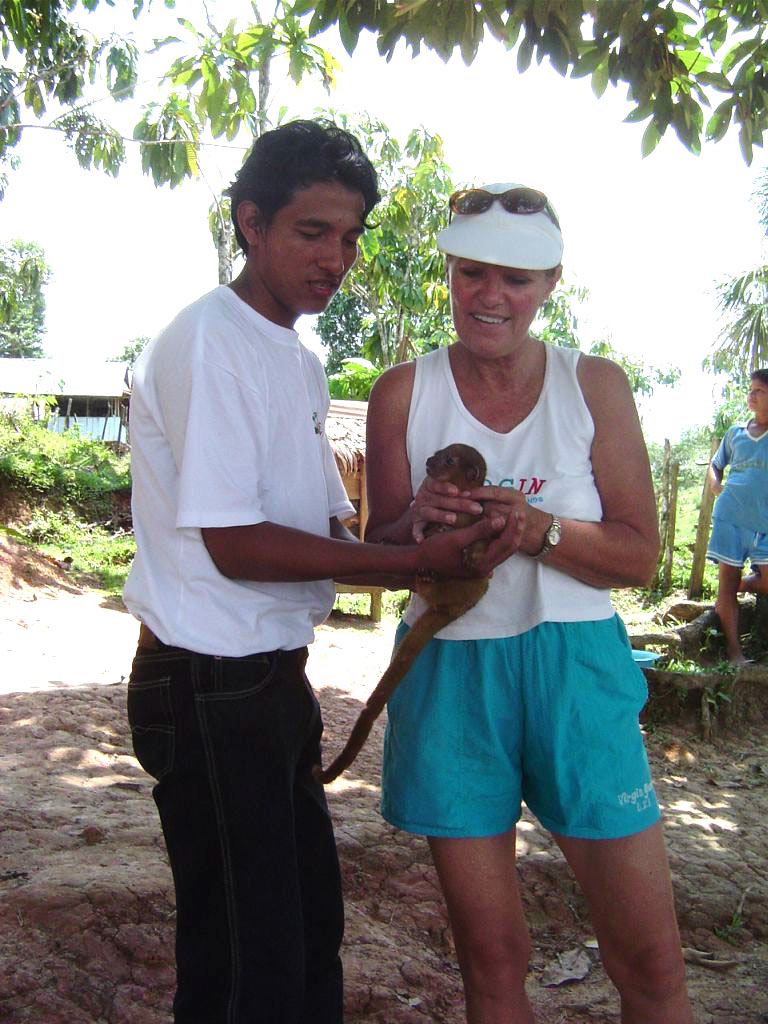
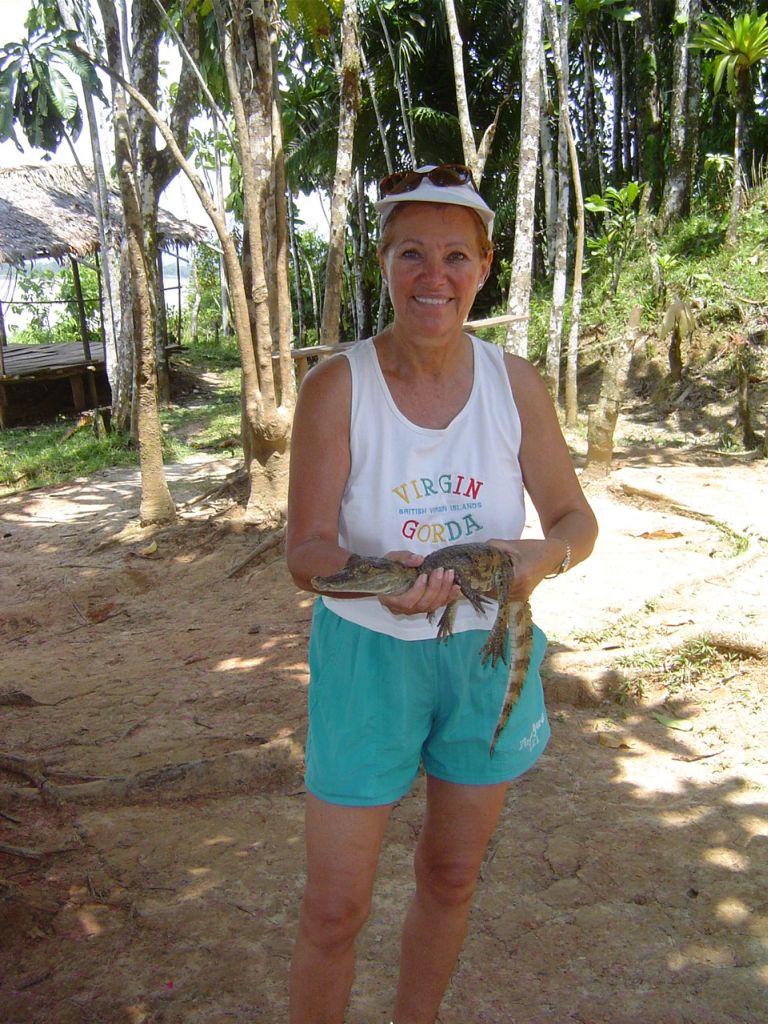
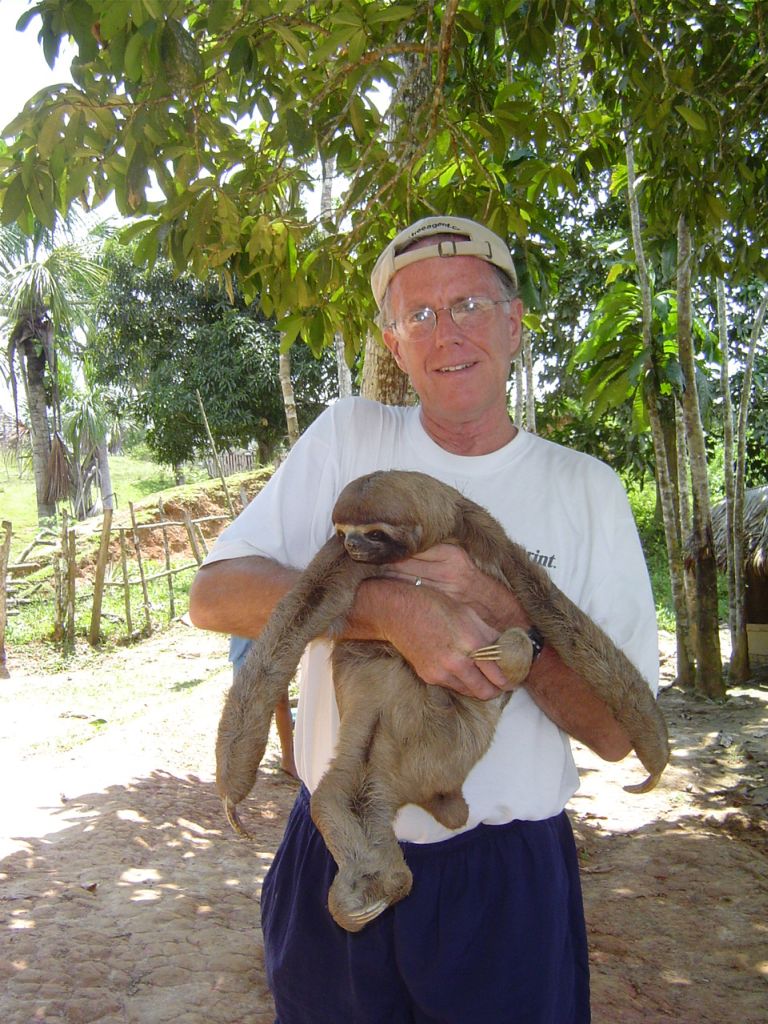
It a slippery sloth
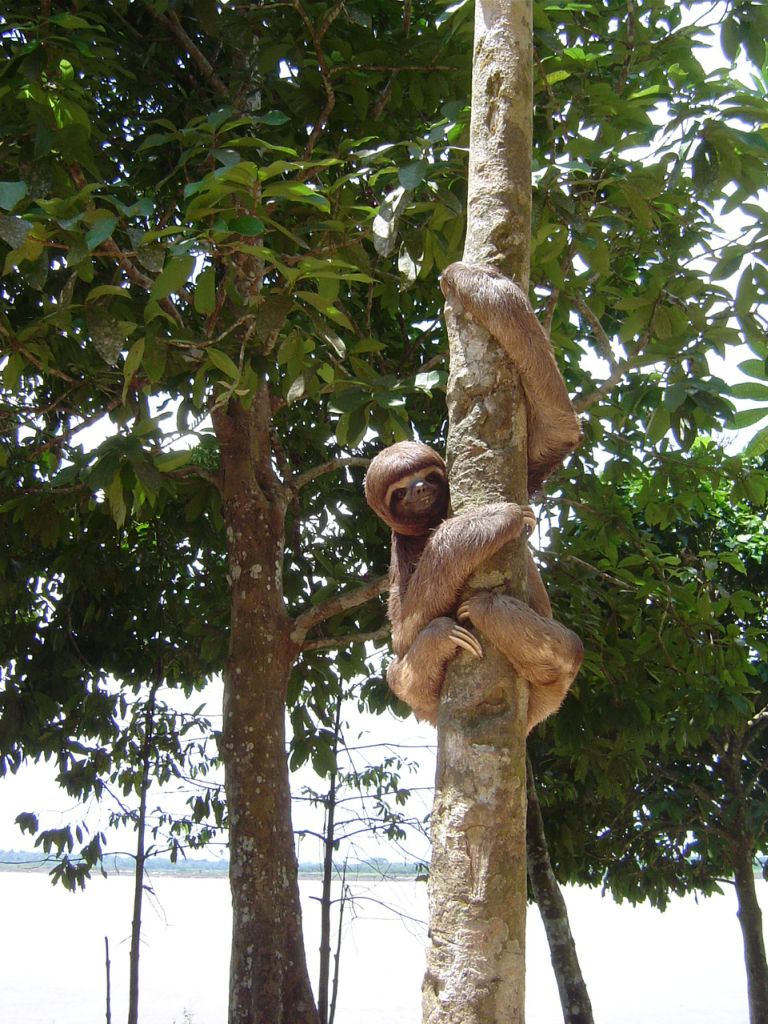
Mr. Sloth returns to his favorite tree
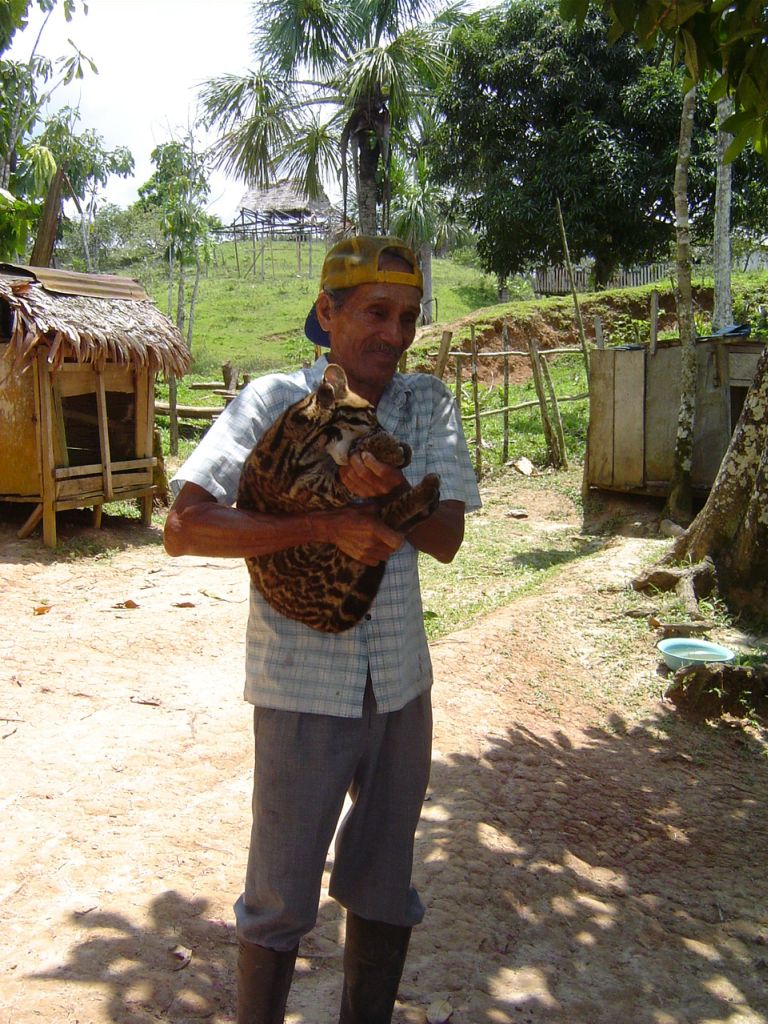
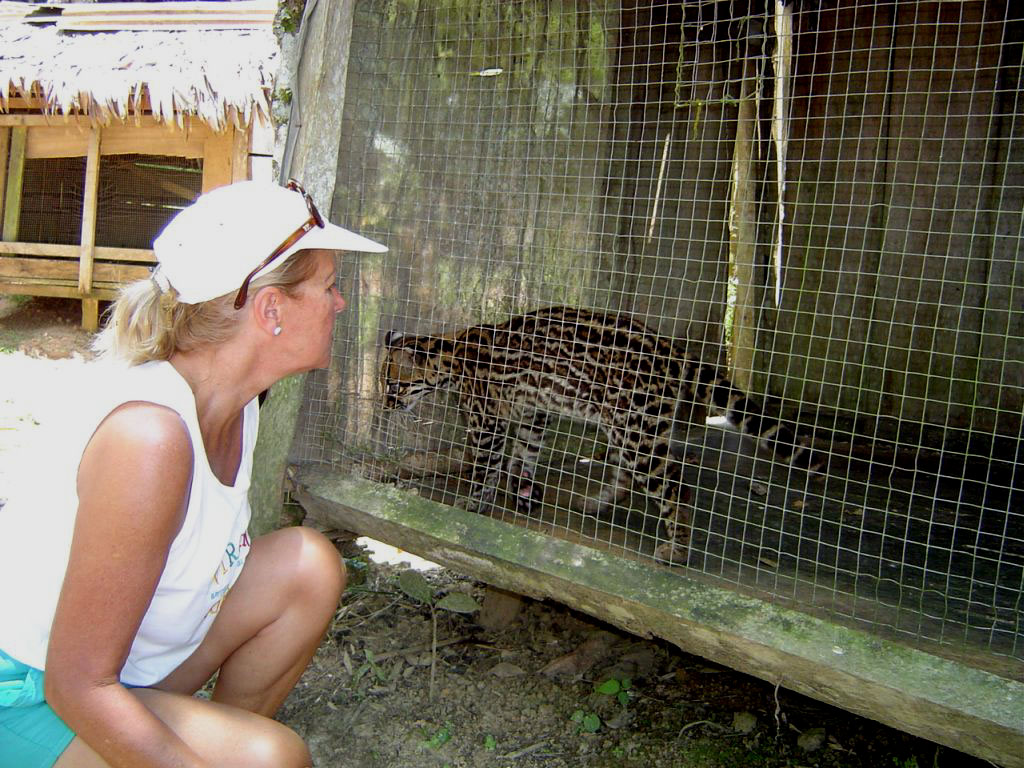
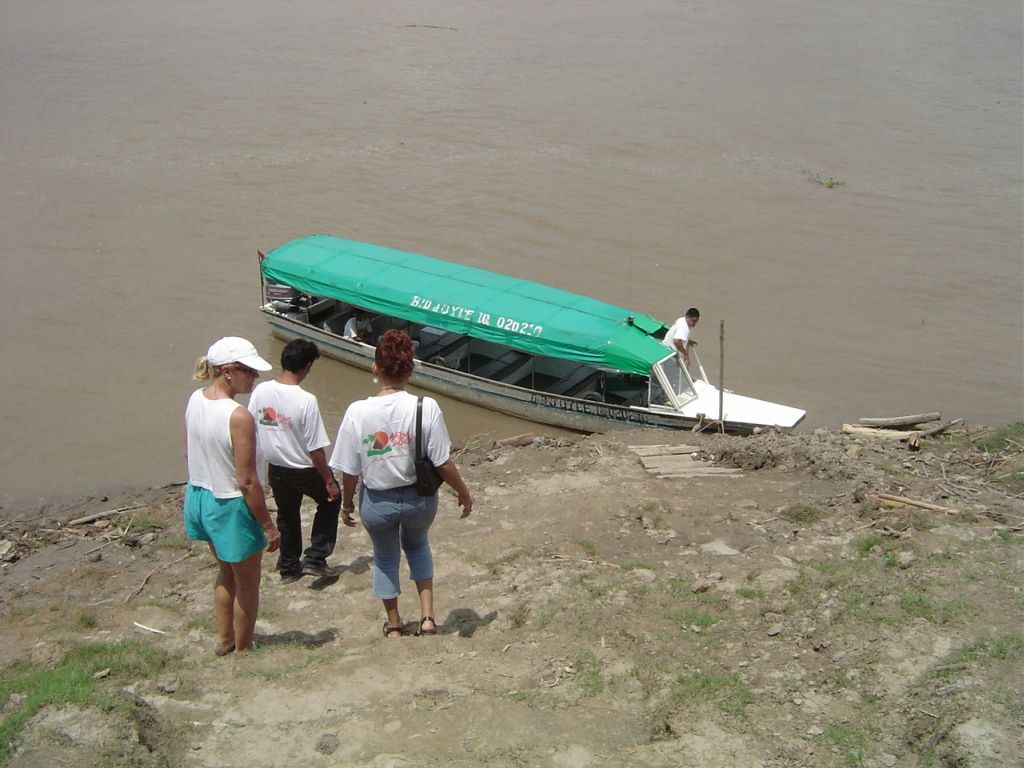
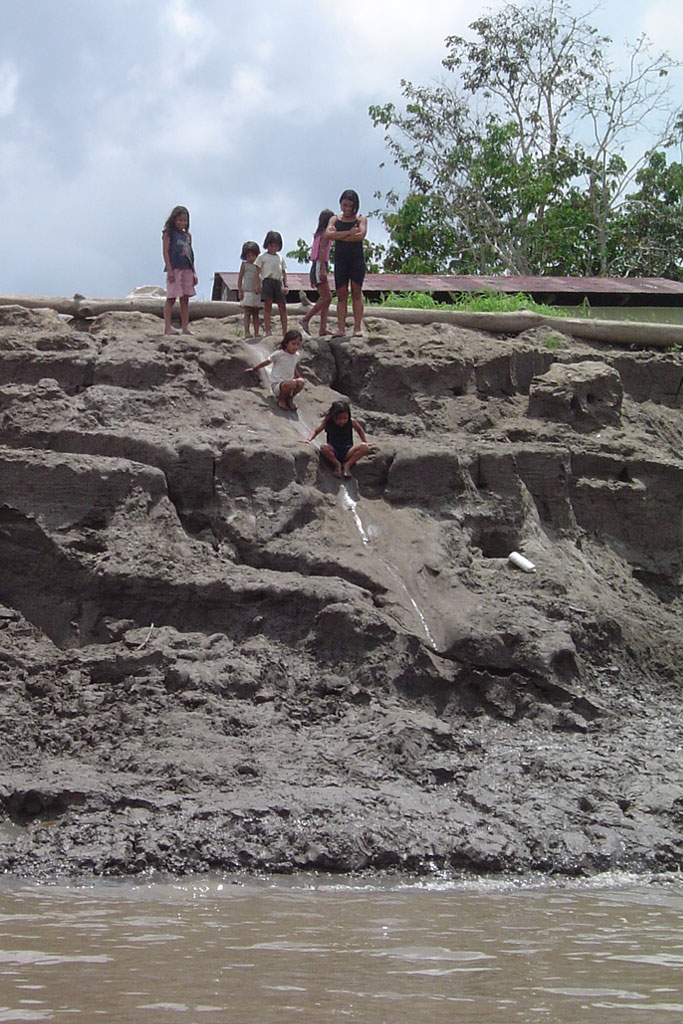
Water Park for Kids, Amazon River style
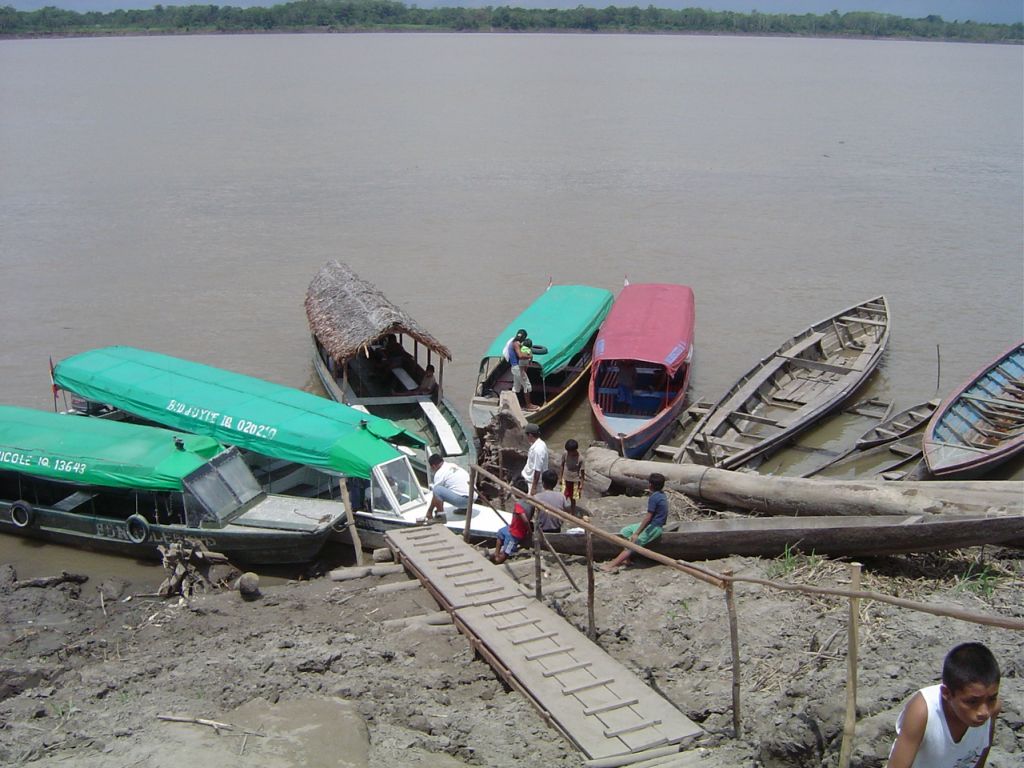
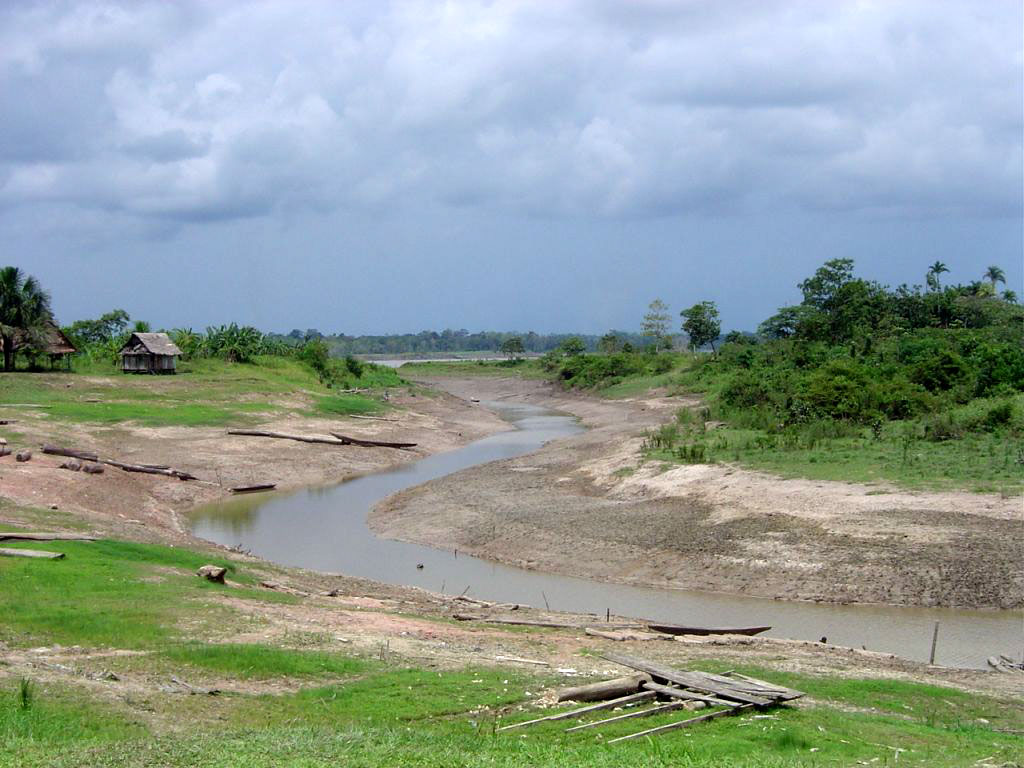
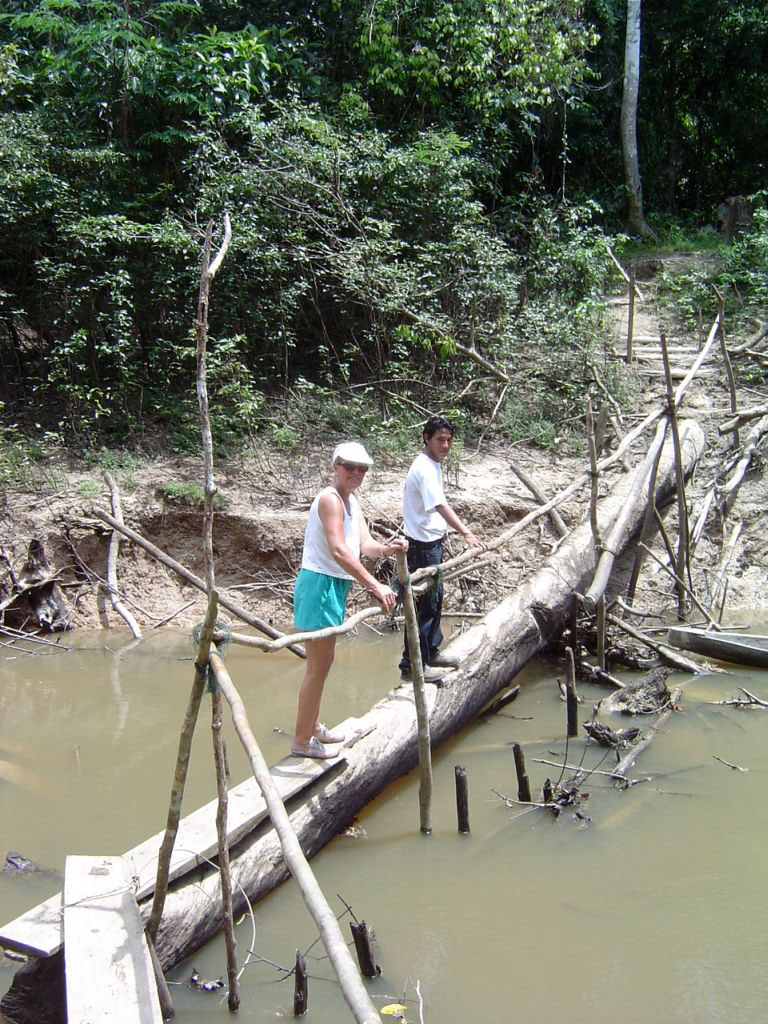
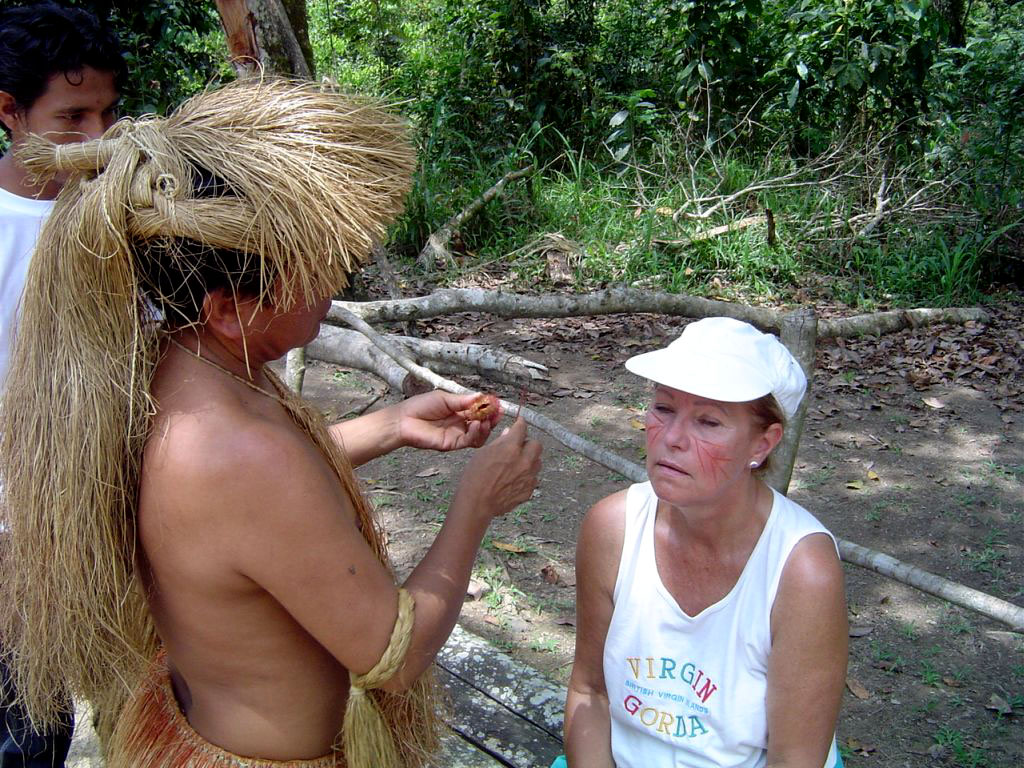
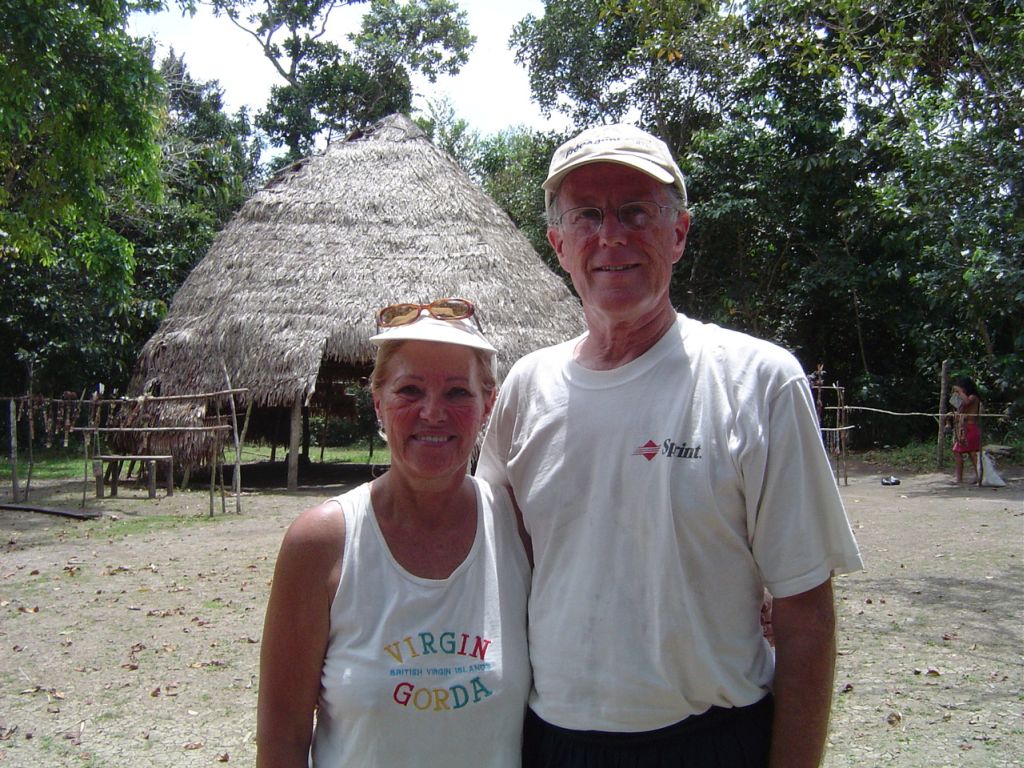
The Accidental Tourists visit the Amazon Rainforest
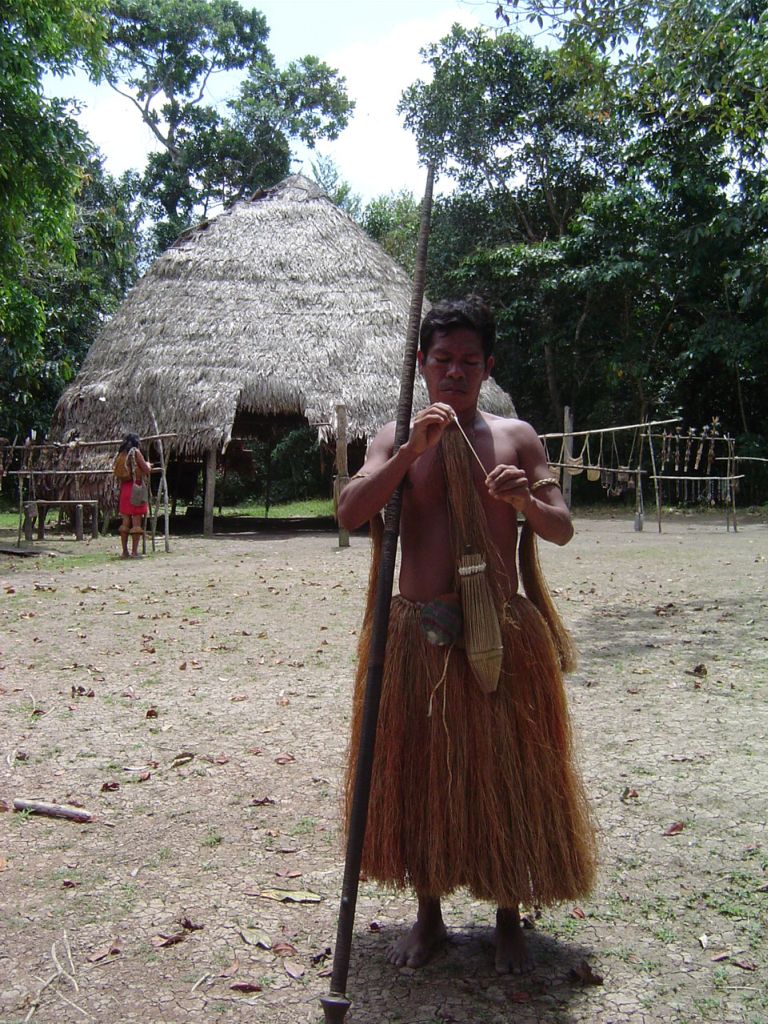
Here's the dart you put in the blow-pipe
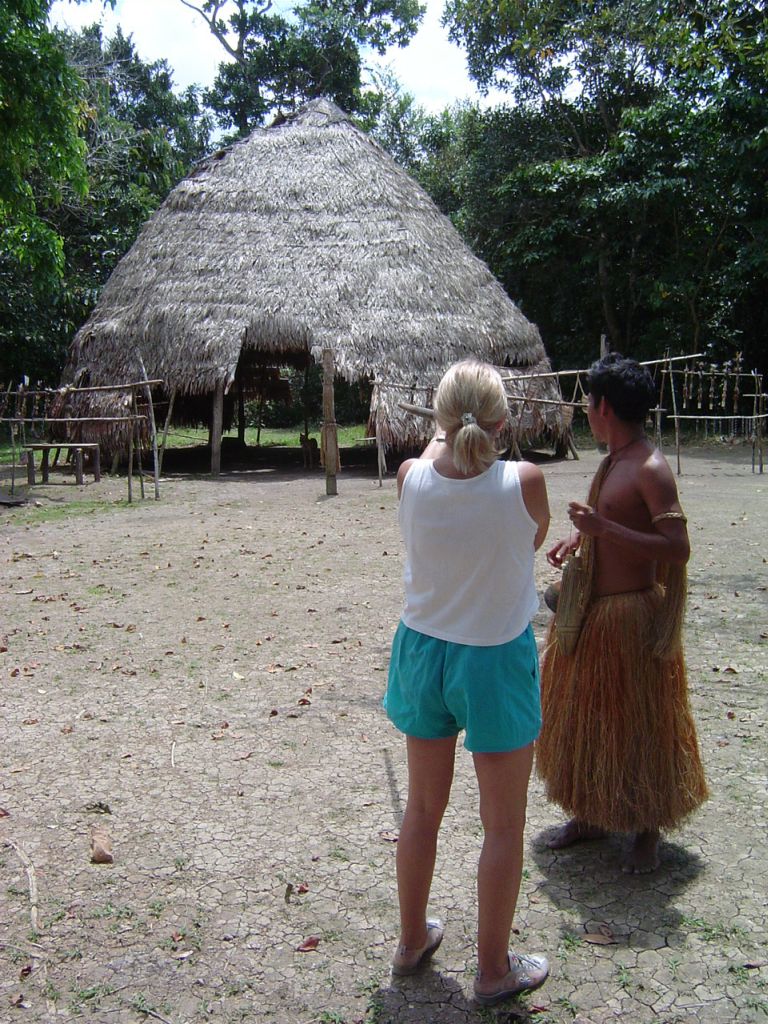
Point the pipe at the pole and puff
The trick is to use both eyes, see two images of the pipe,
then put the pole in the middle of the picture
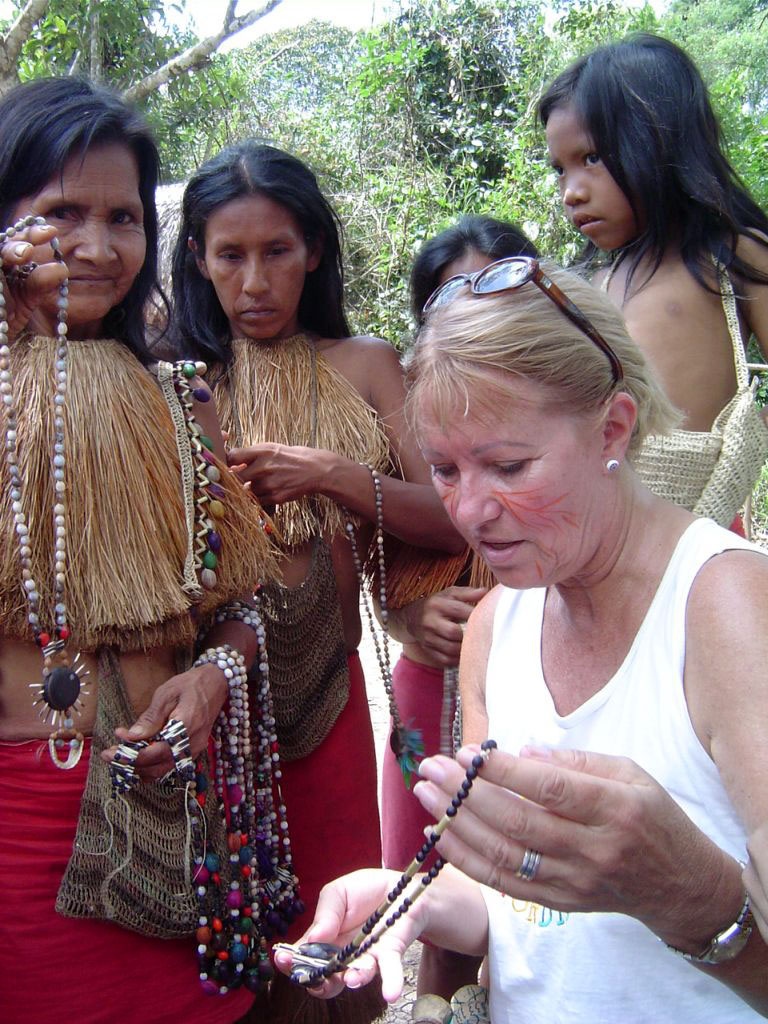
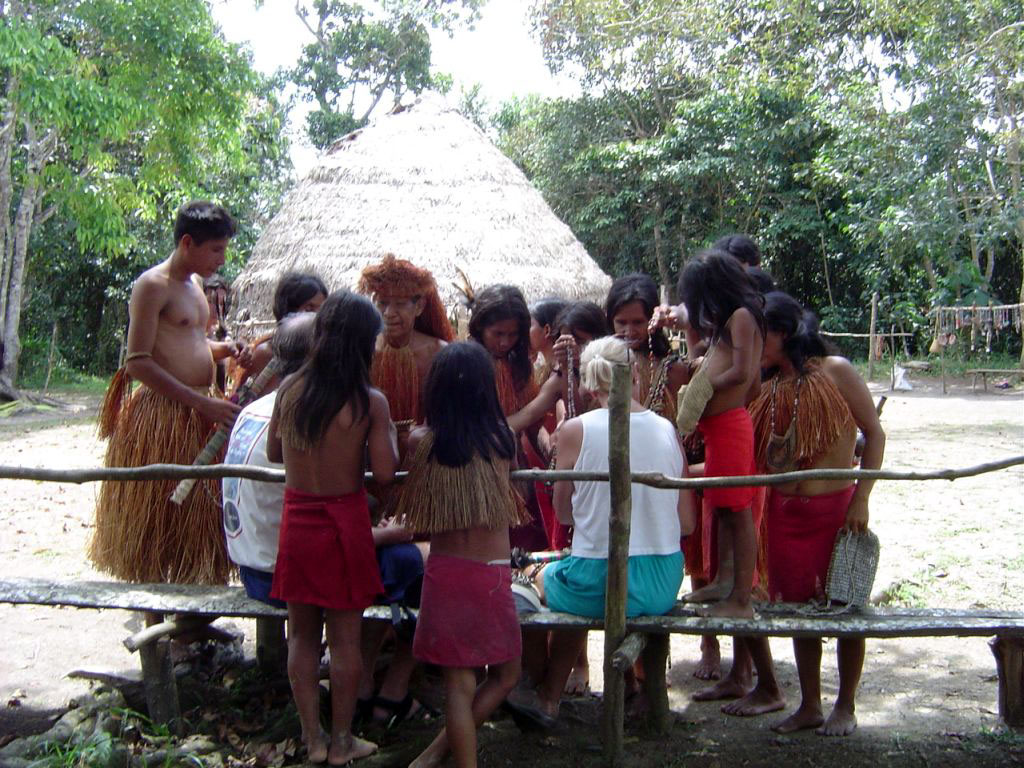
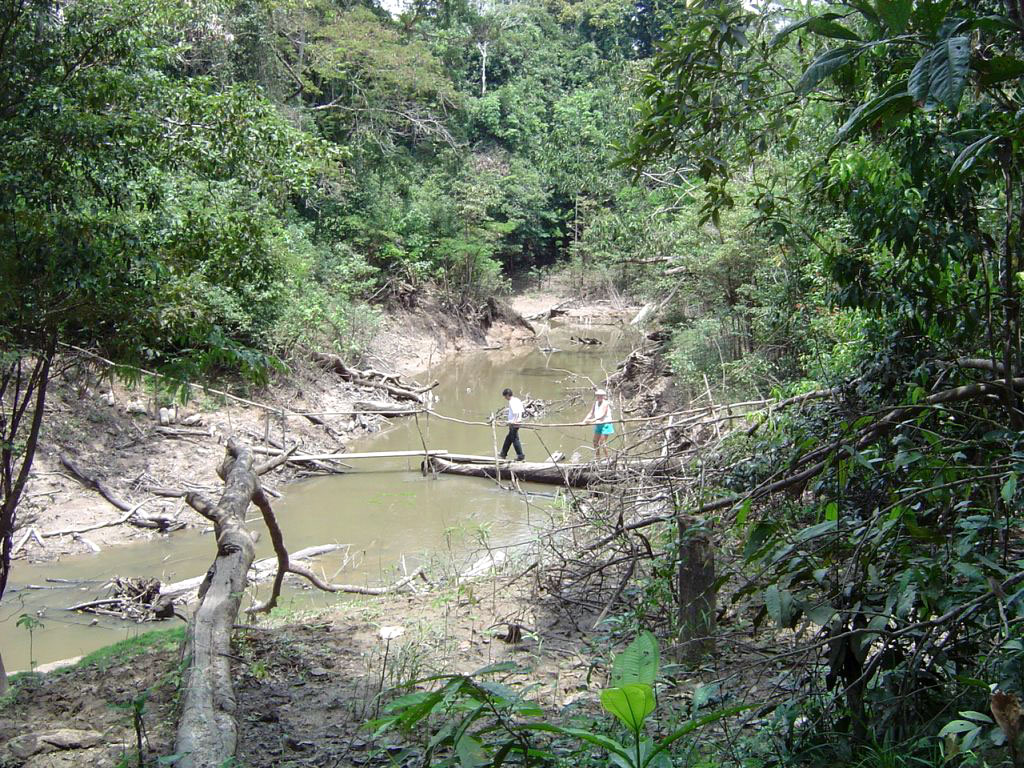
Do I need to do this again?
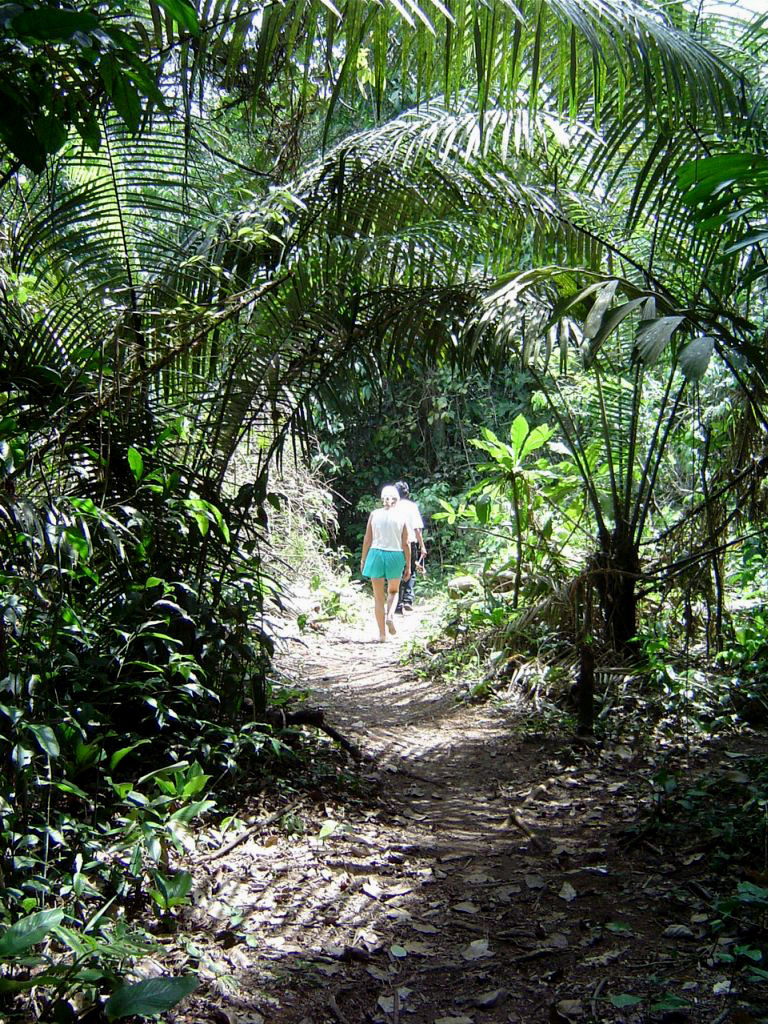
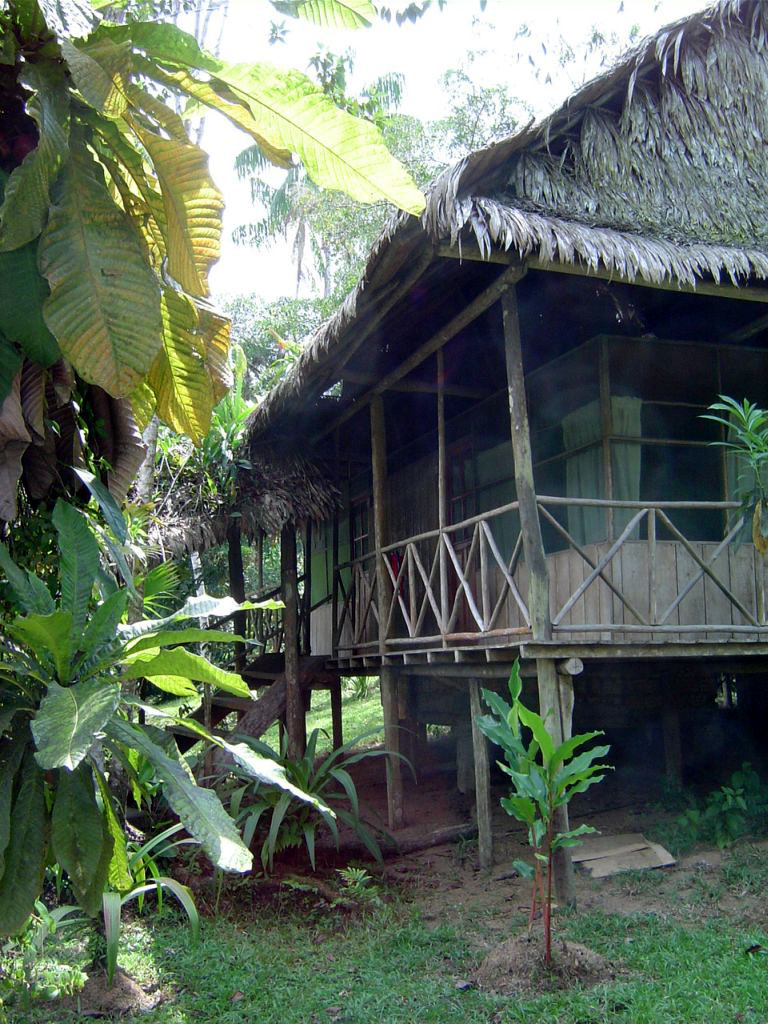
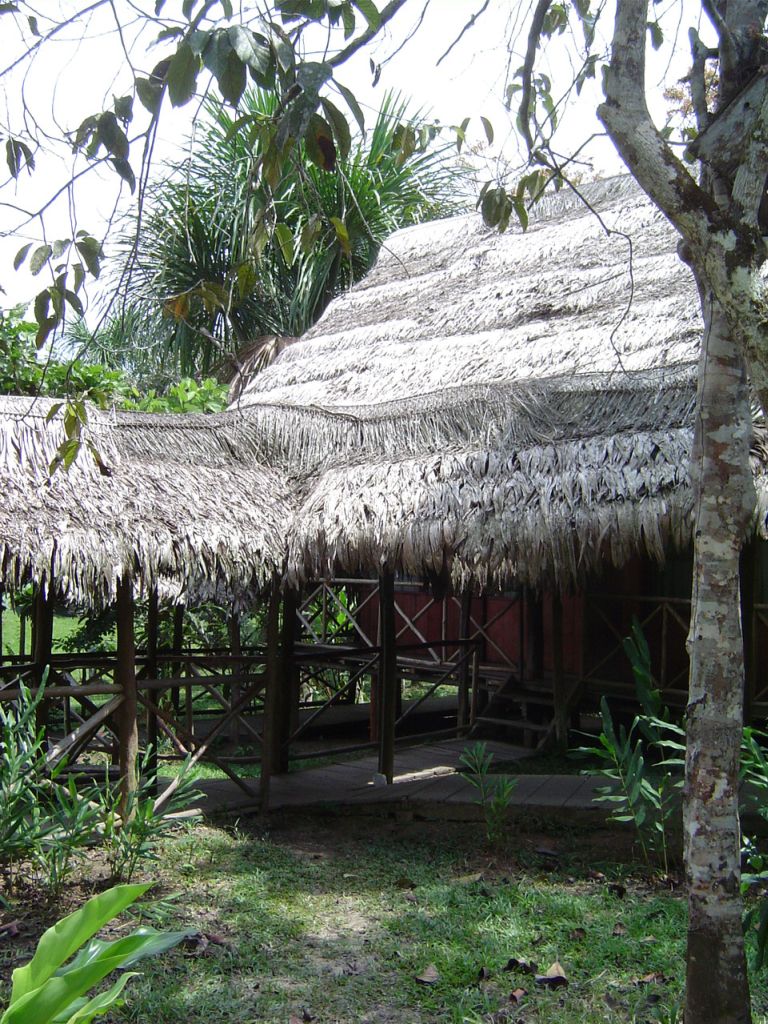
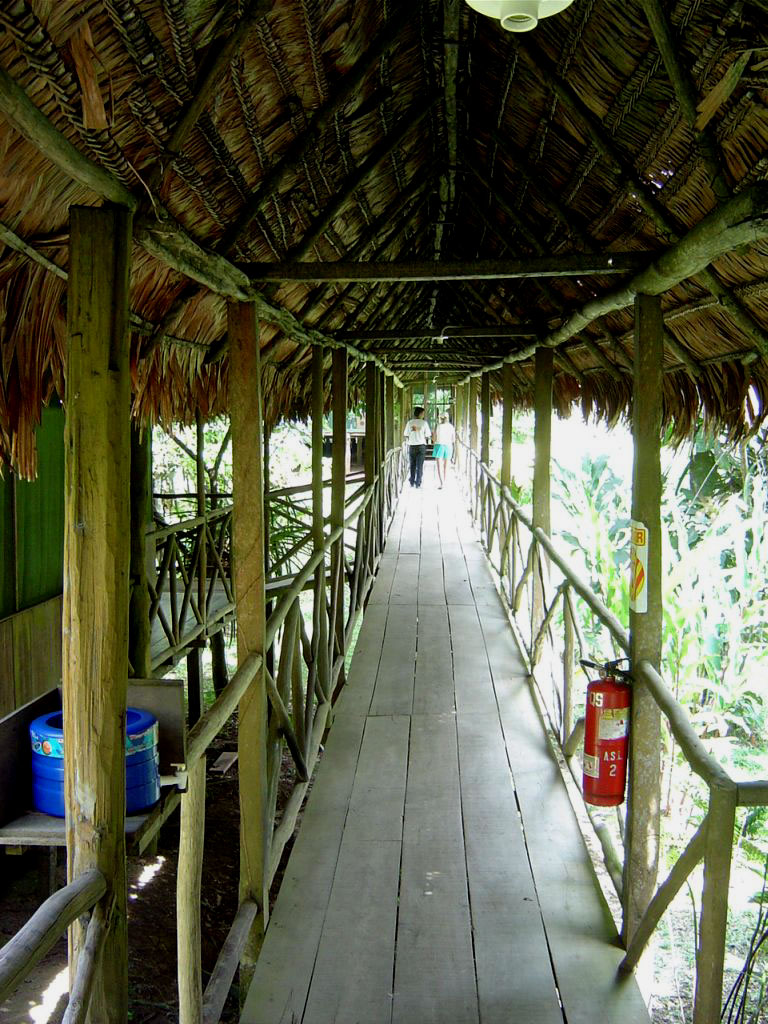
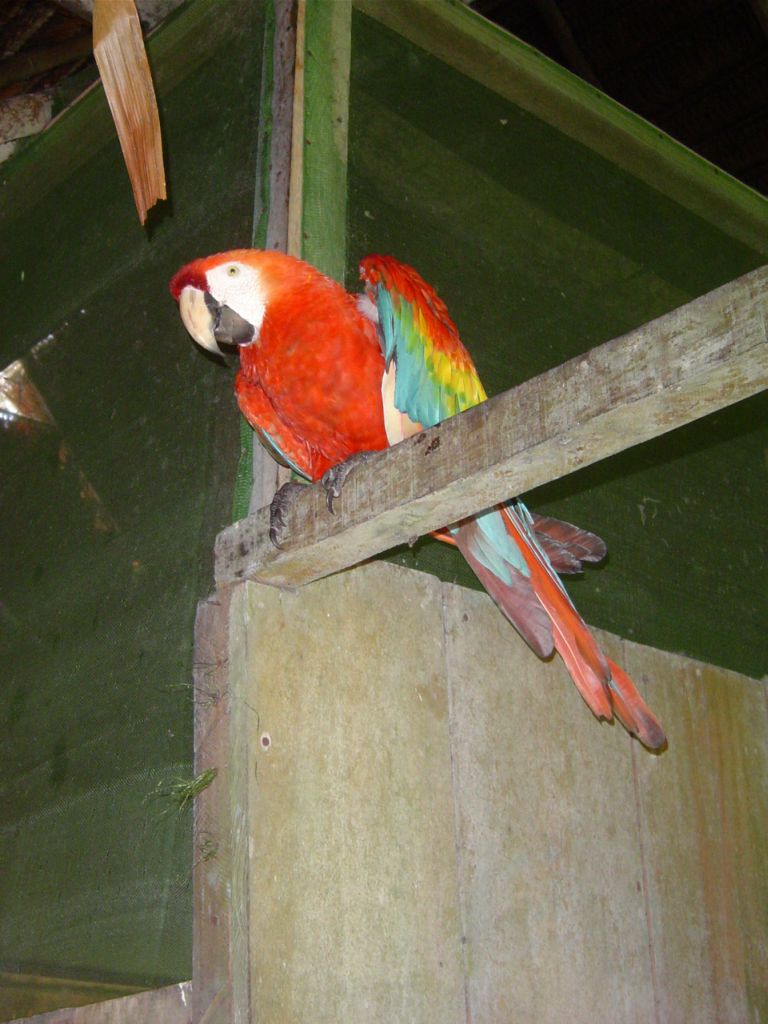
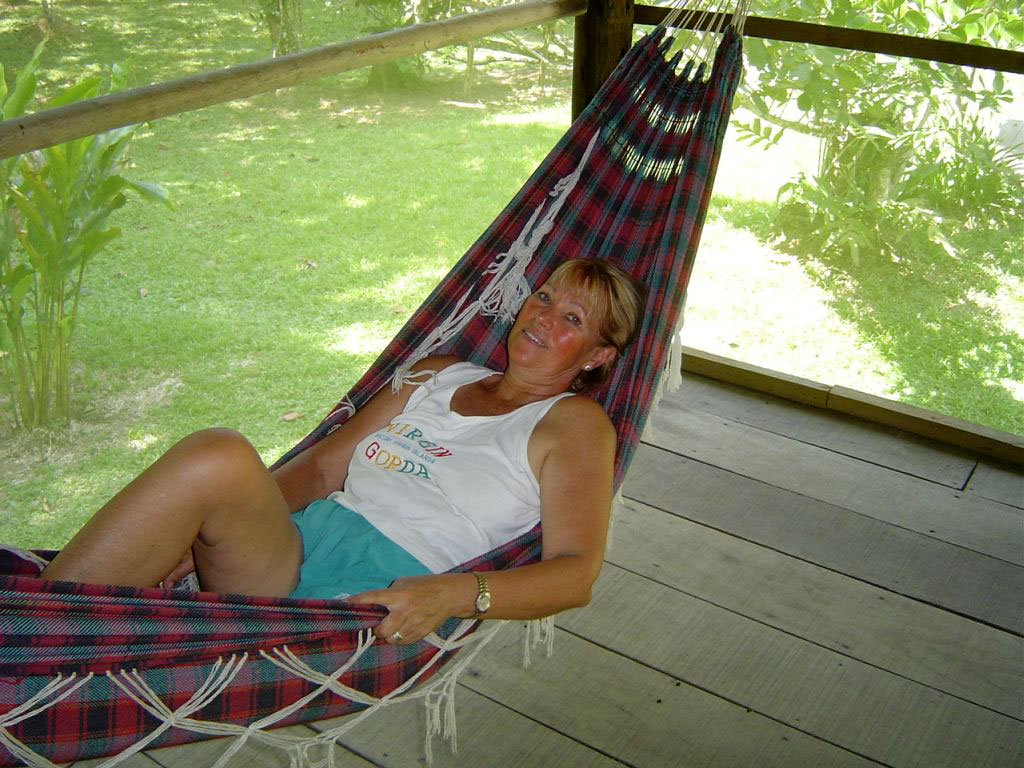
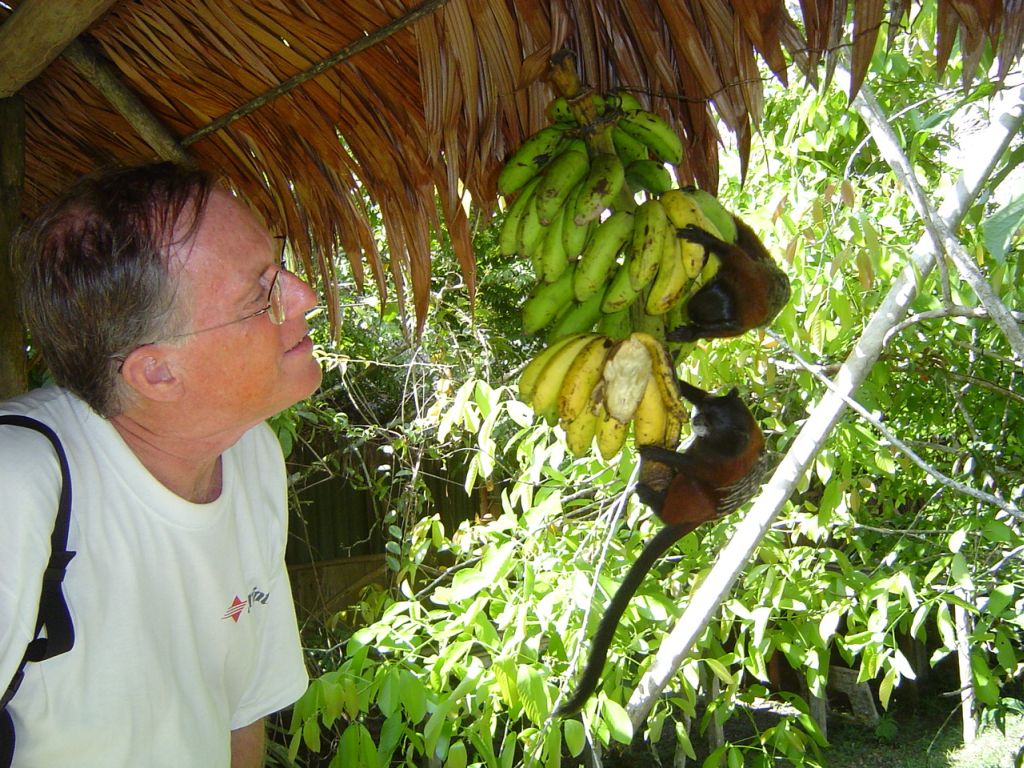
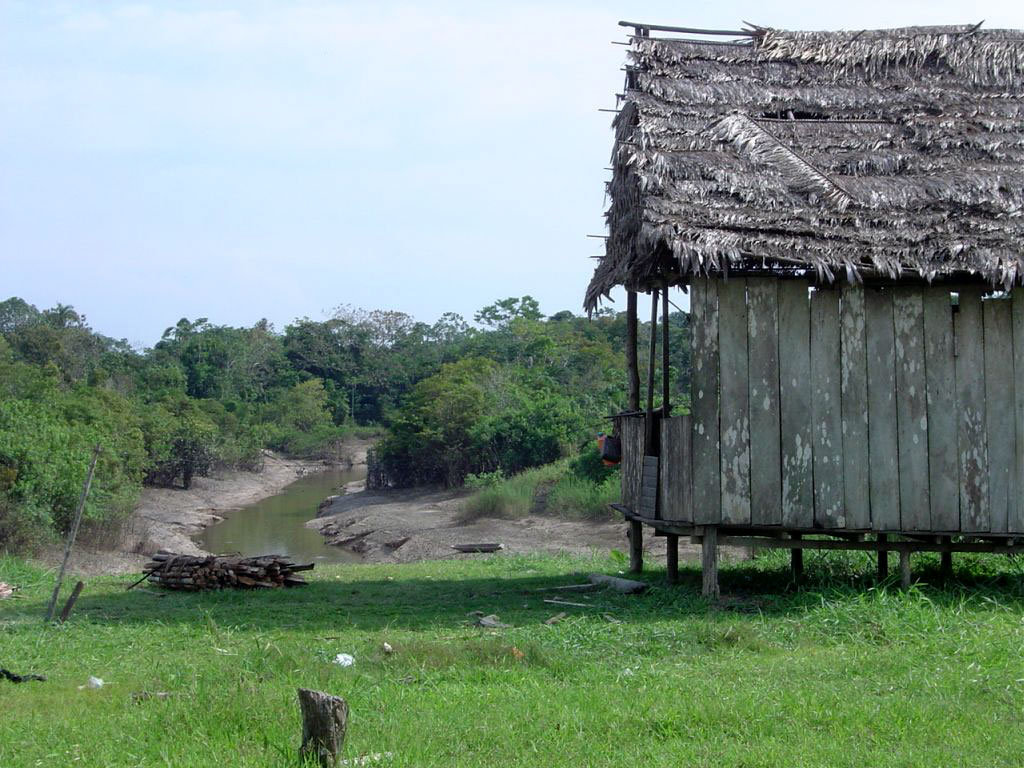
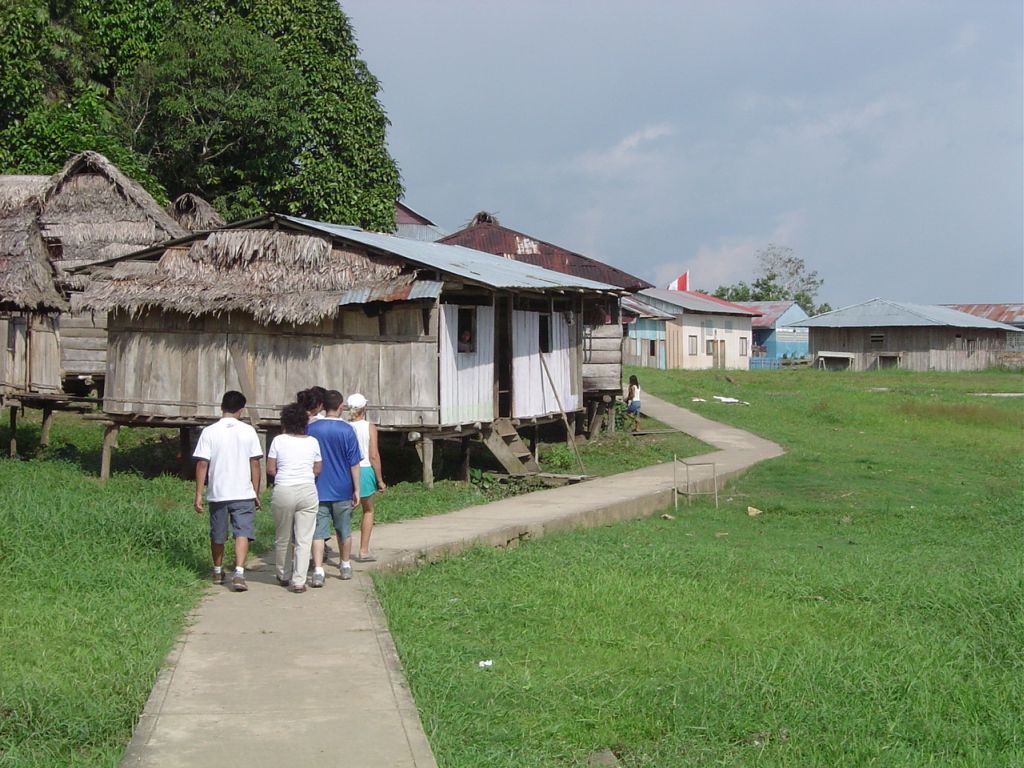
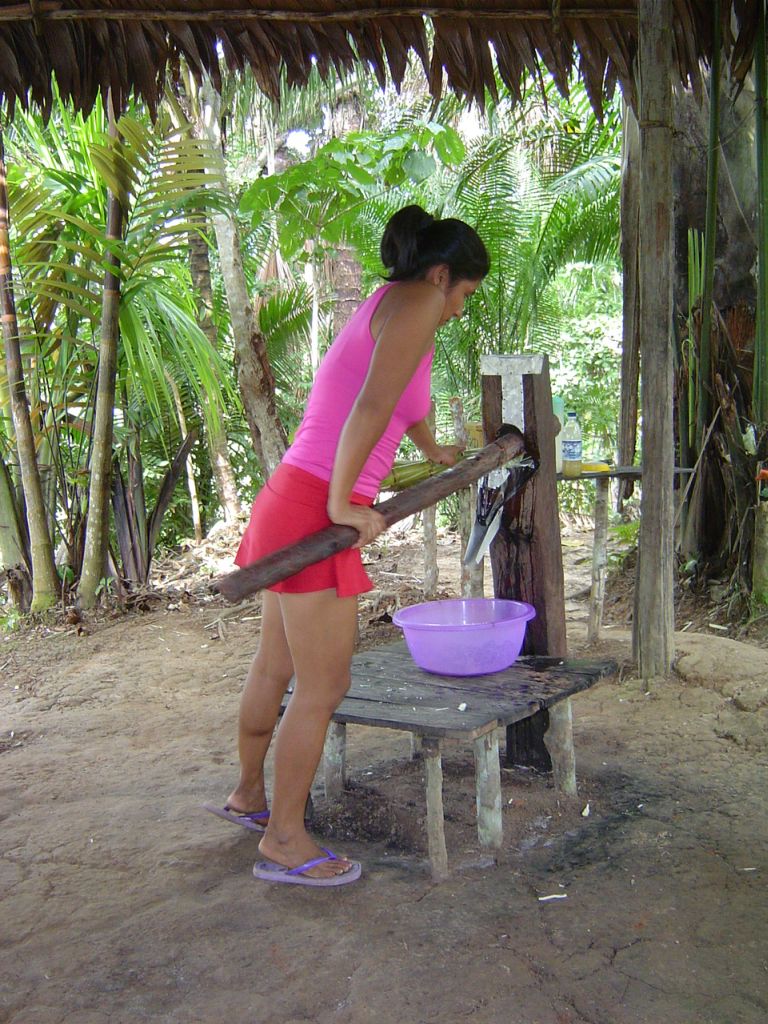
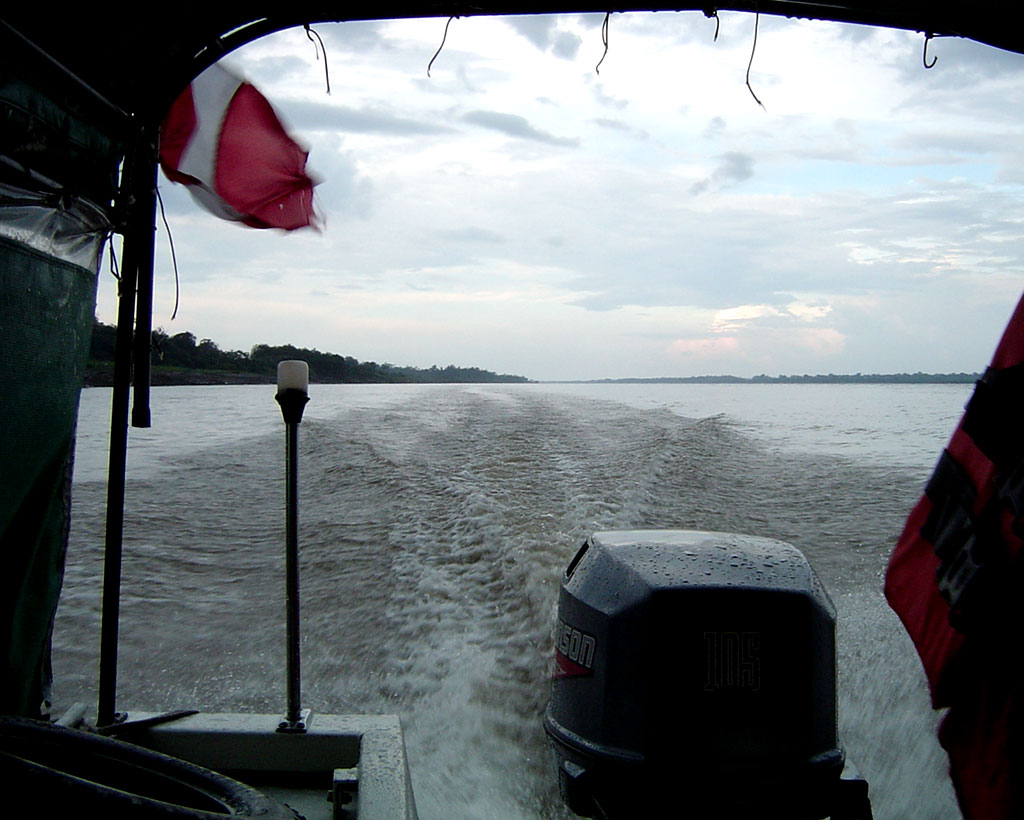
The end of our day in the jungle
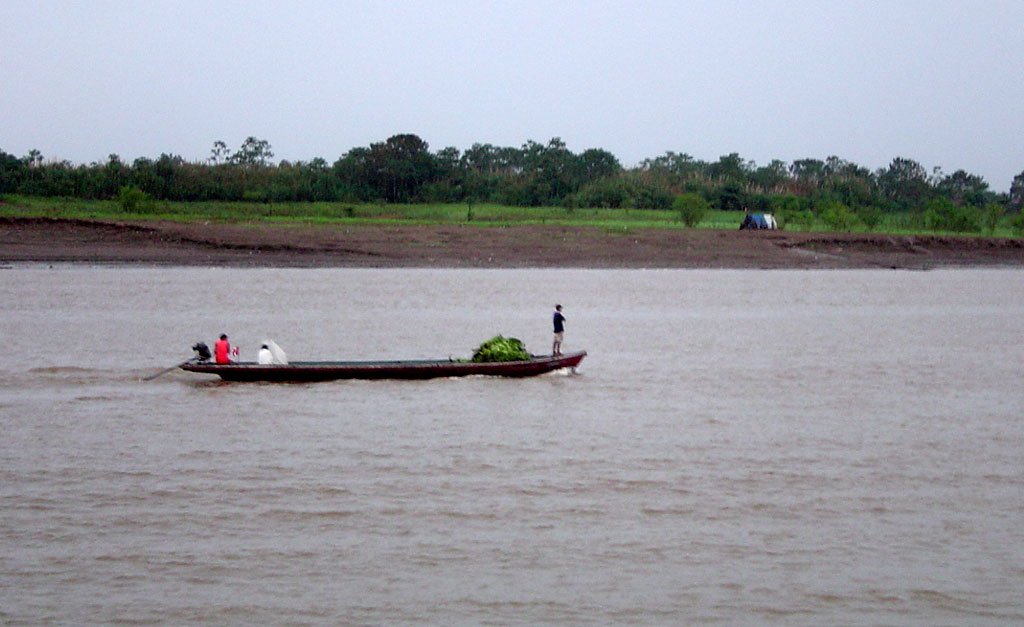
The steerable, one-cylinder engine with prop-shaft
going into the water is popular world-wide
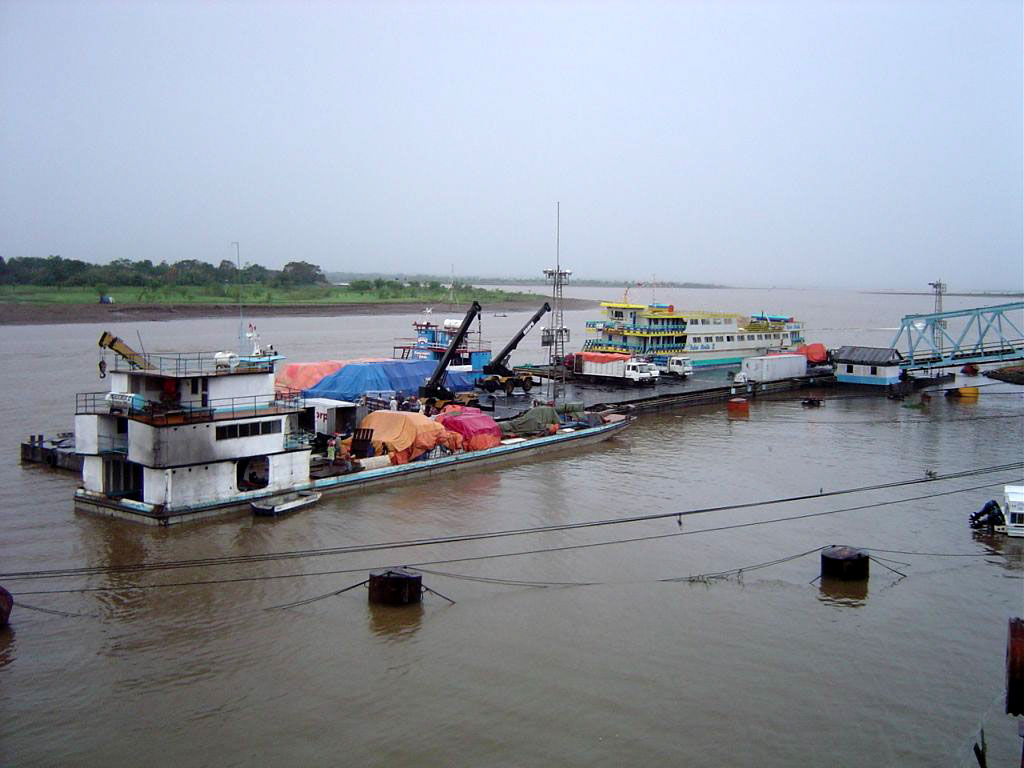
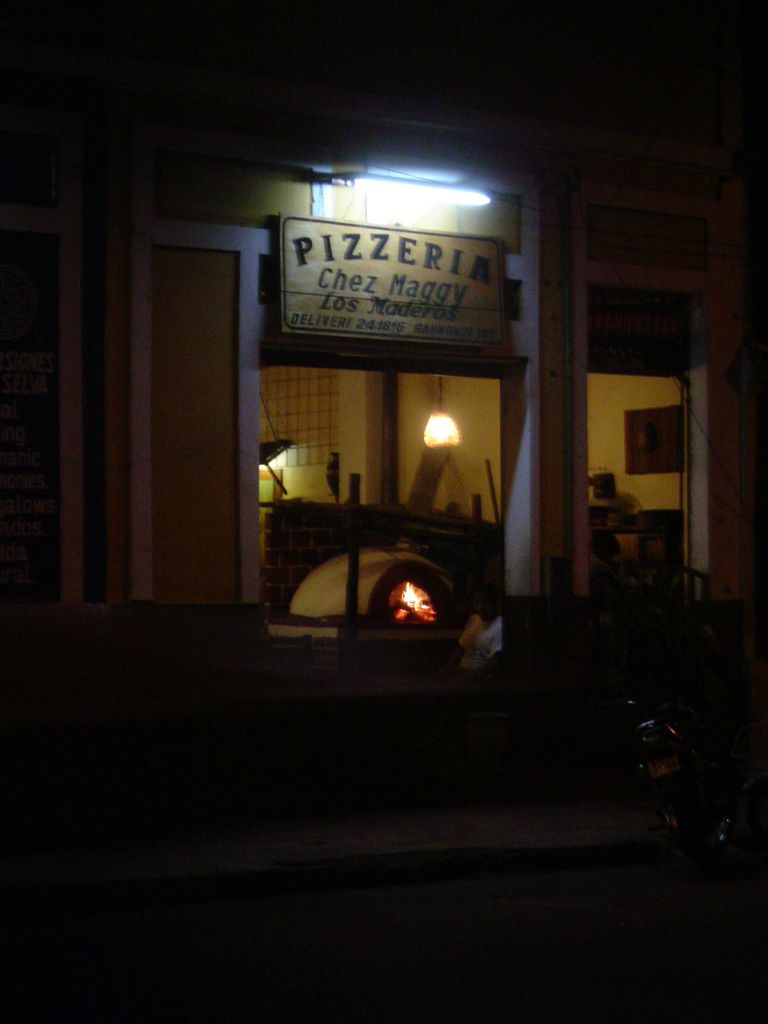
Pizzeria
Chef Maggy
Los Maderos
Call for Delivery
August 24th
The trip back to Lima reversed the process of coping with the temperature. We dressed for Lima and cooked while waiting for our flight in Iquitos.
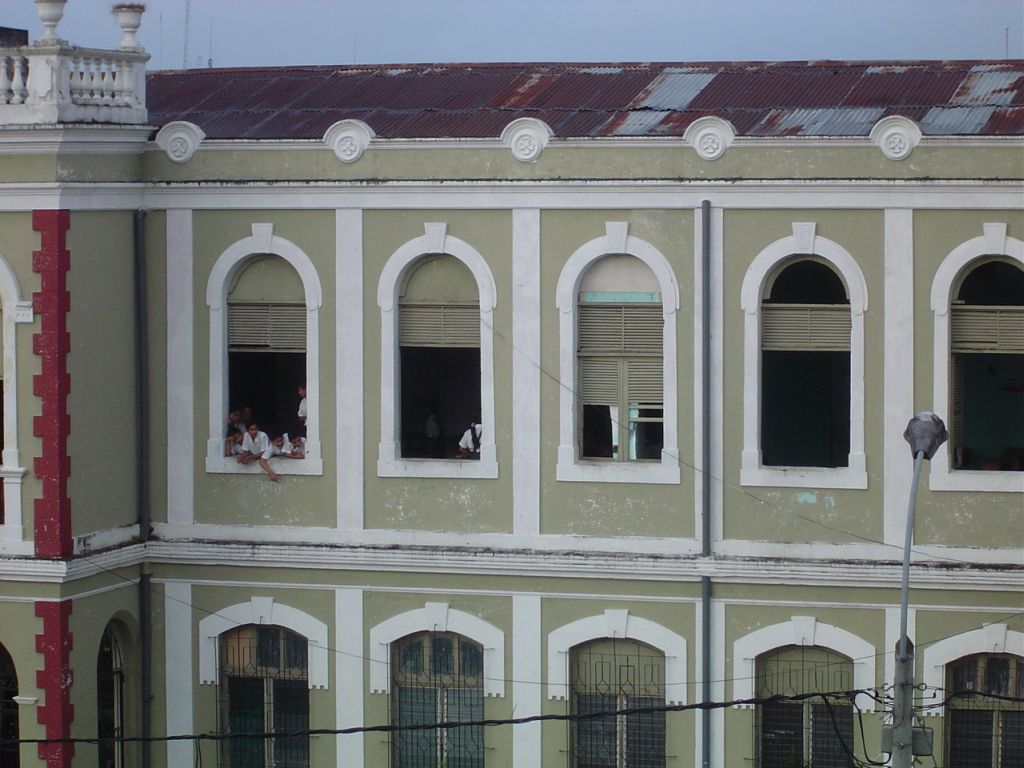
Little kids always like to throw things out the window
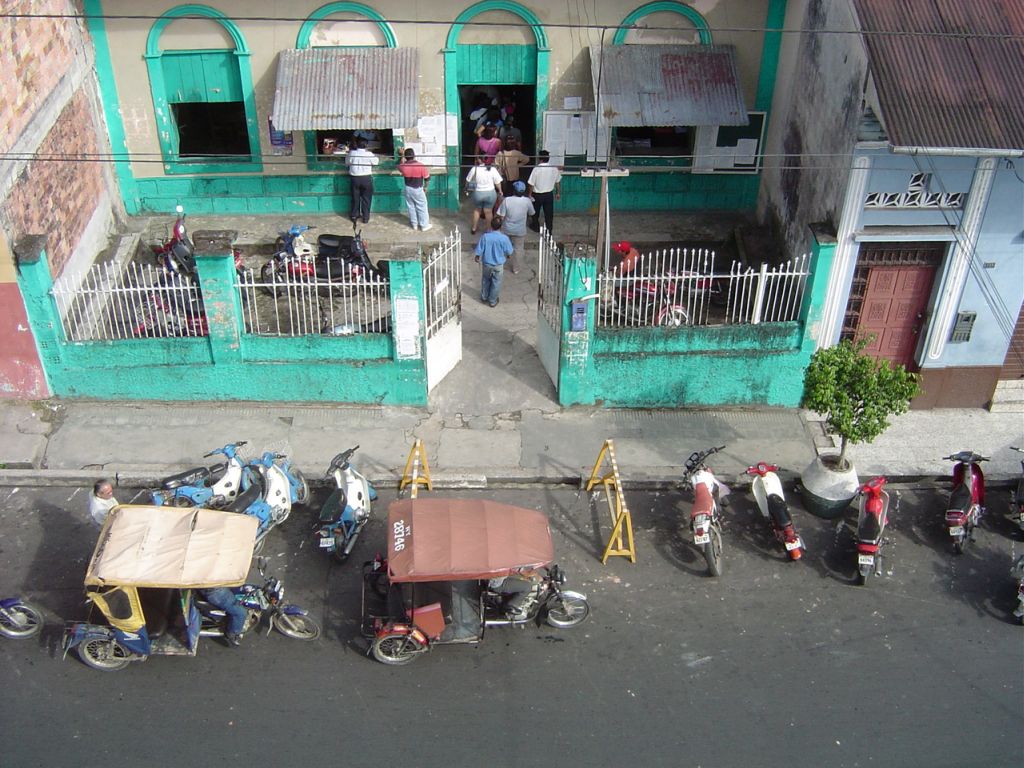
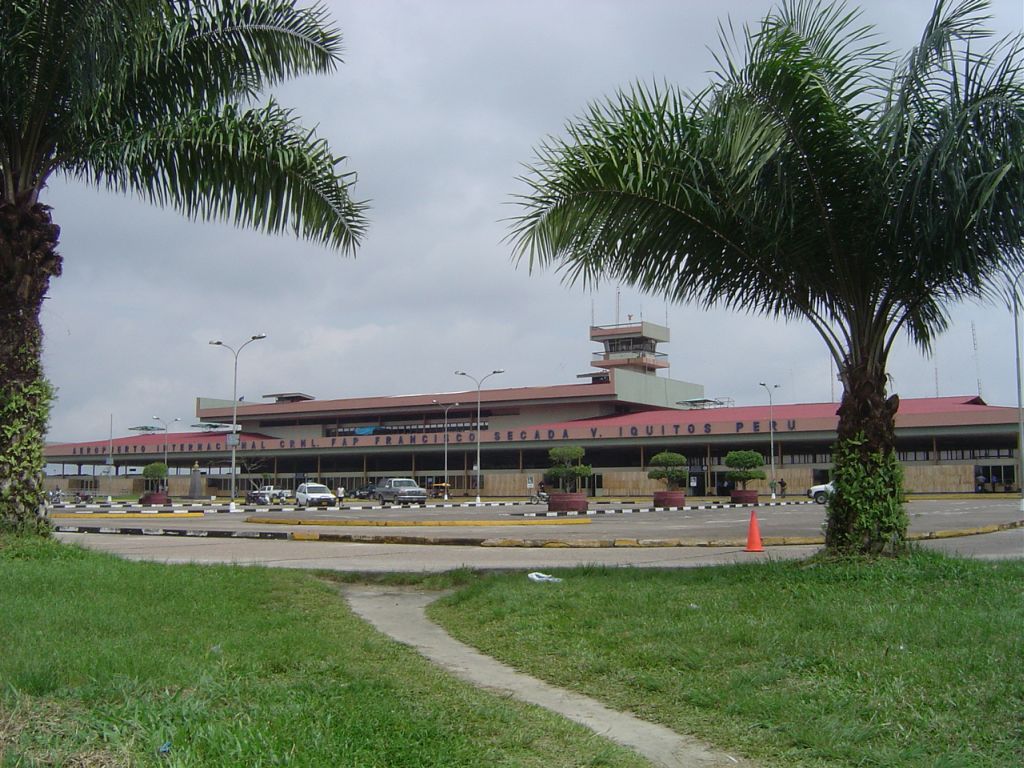
Heading back to Lima
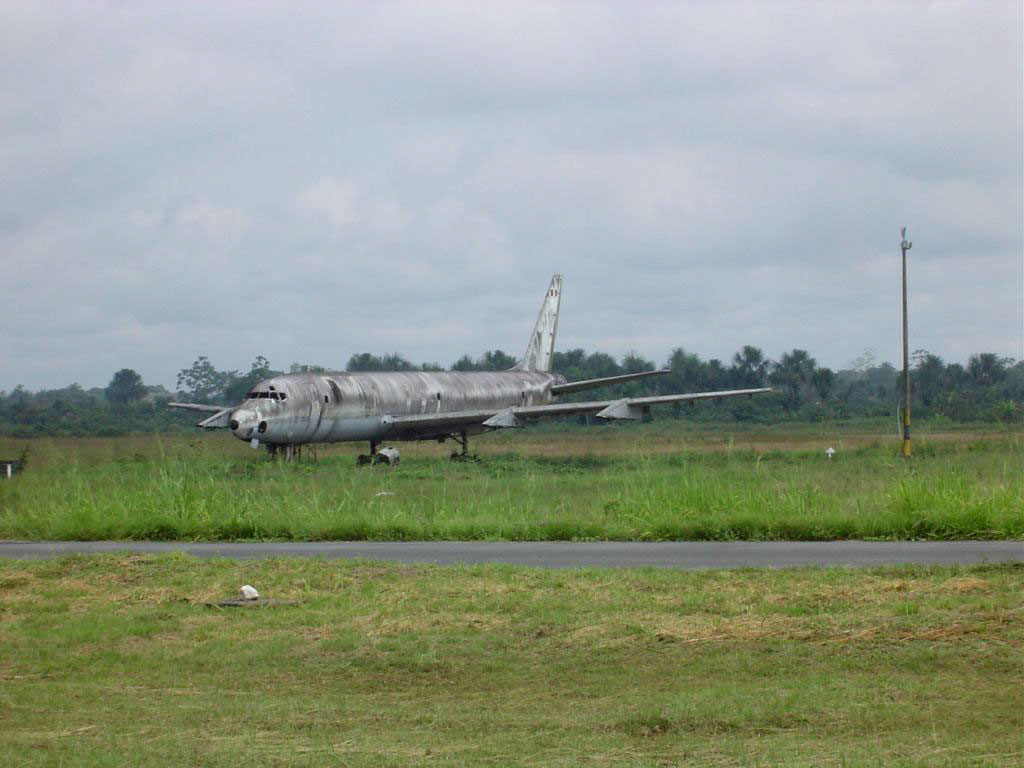
Flight cancelled due to lack of engines
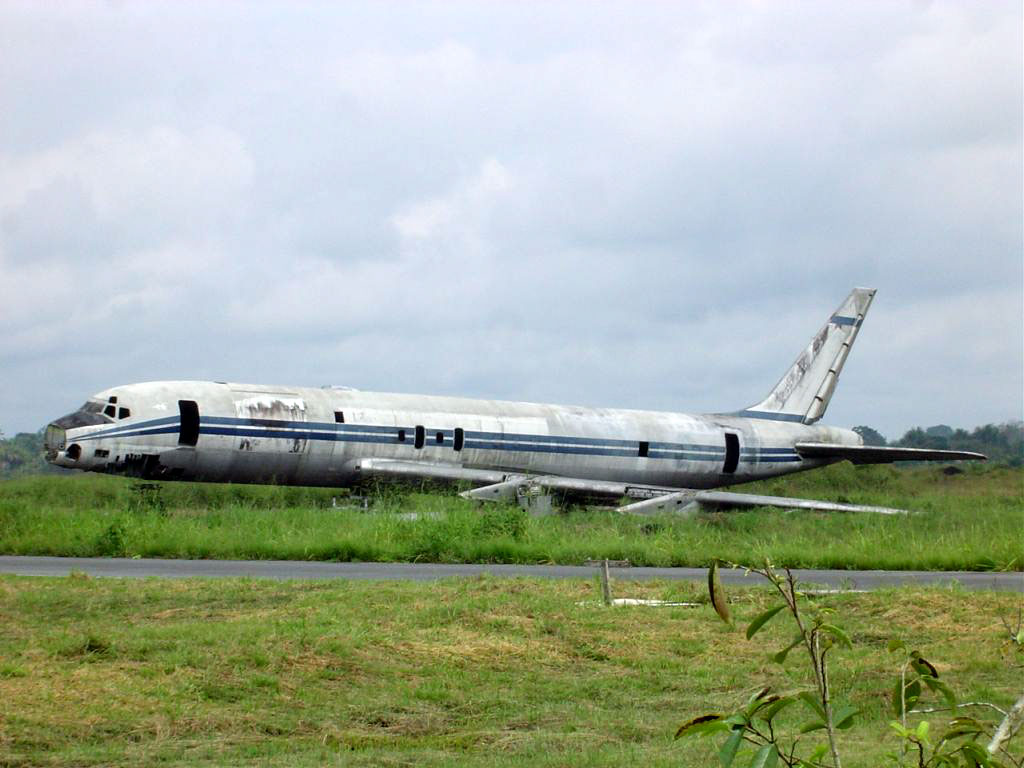
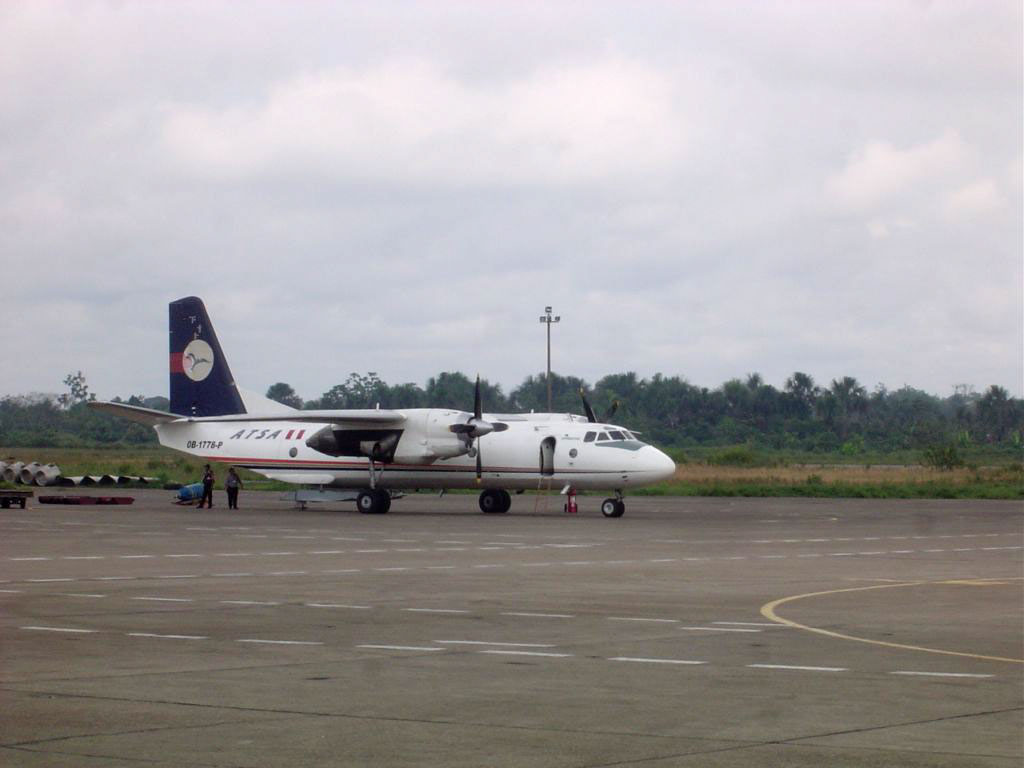
Looks like a Chinese MA-60, but it's a Russian Antonov AN-26B
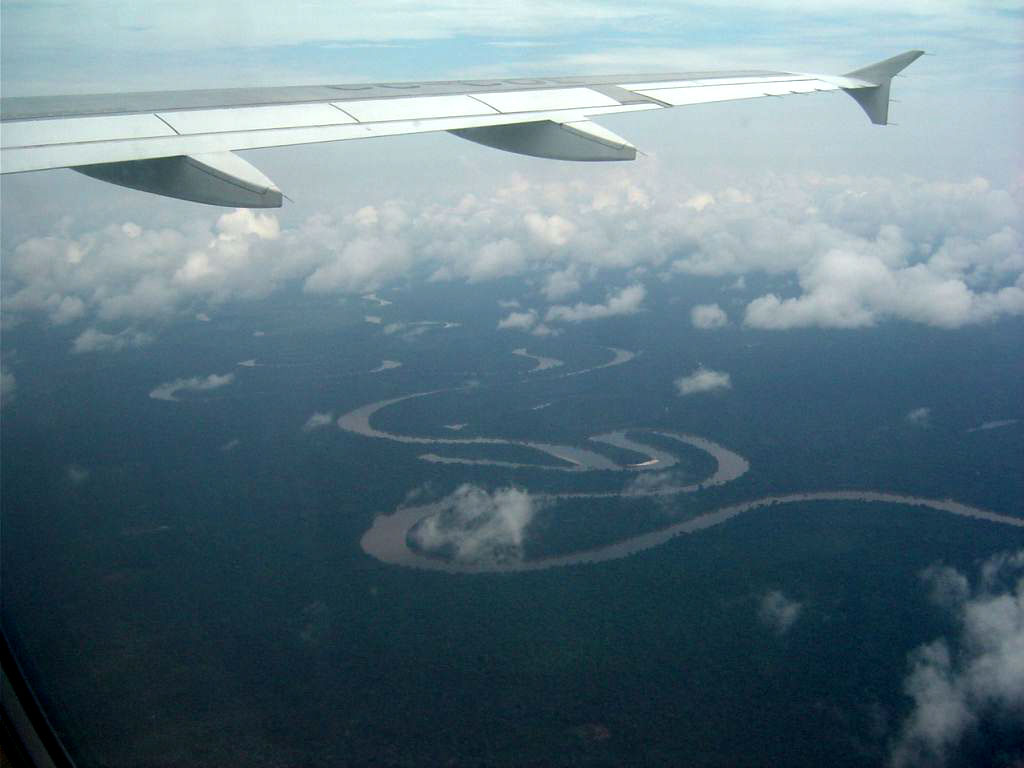
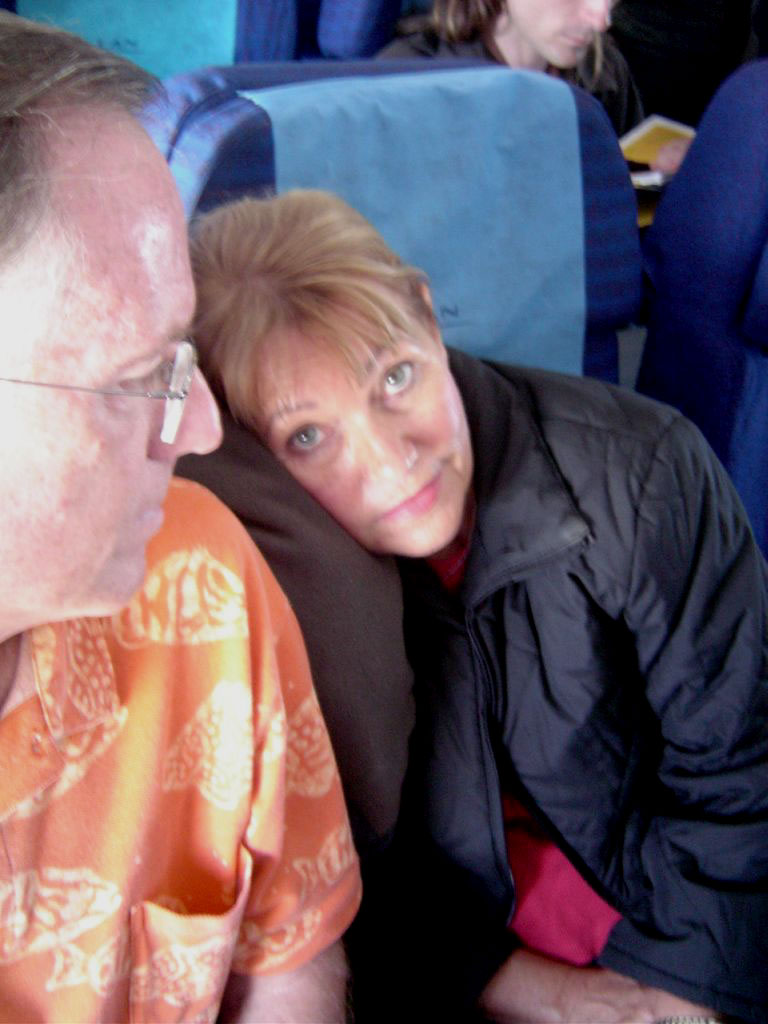
Overdose of Iquitos
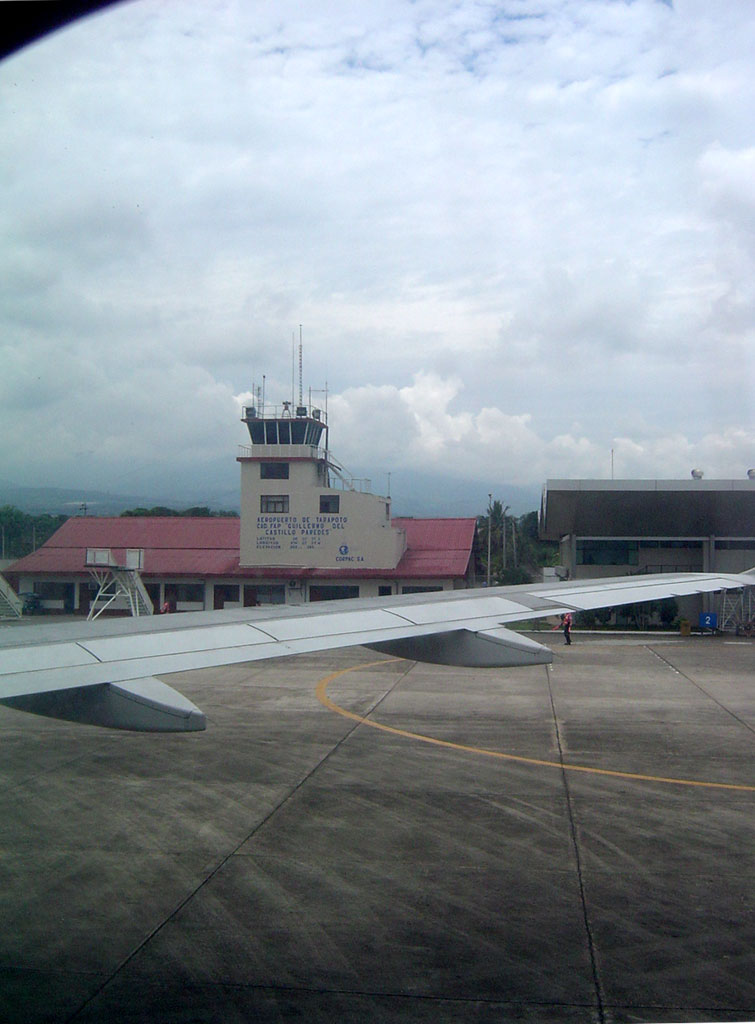
A brief stop in Tarapoto on the way to Lima
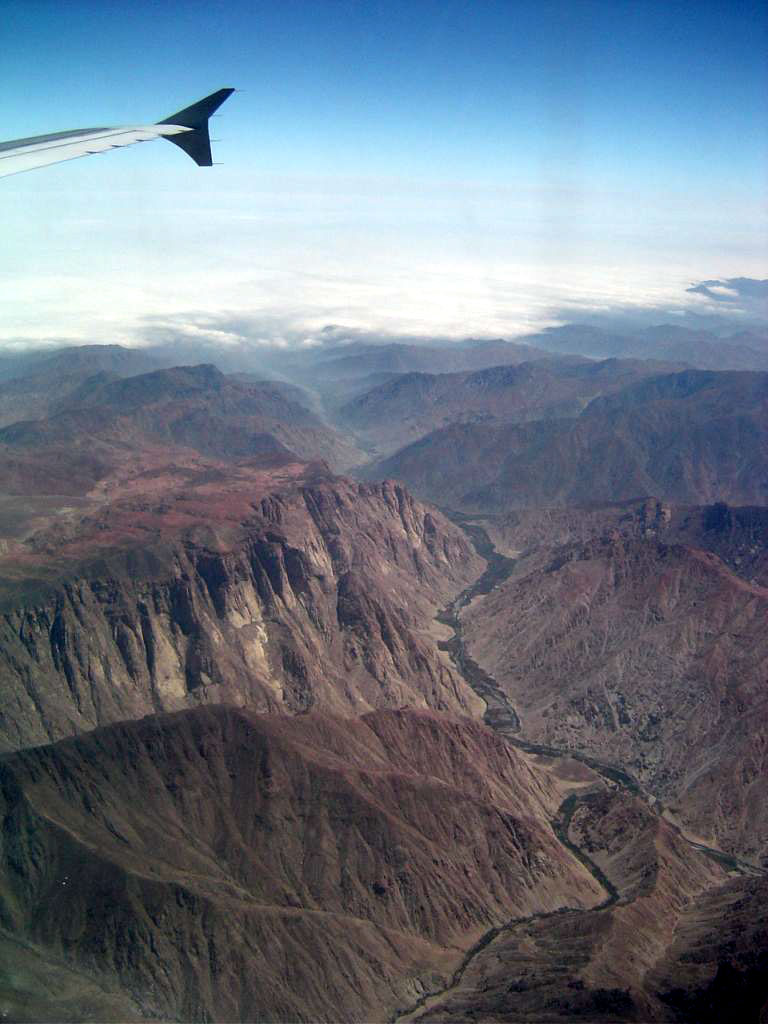
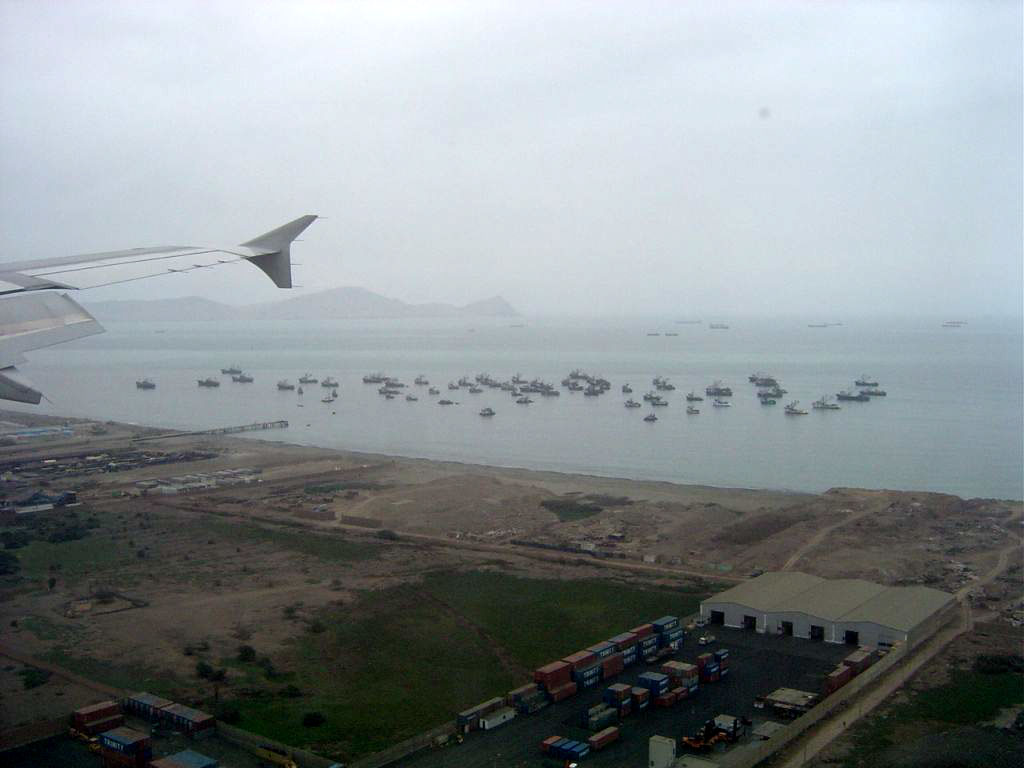
August 25th
The highway south from Lima to Pisco is more interesting than the road in from the north. Beach communities are visible for the first 50 km or so. The four-lane road becomes two lanes after 130 km, but traffic was light and the road was straight. We stopped at Pisco, original home of Peru's Pisco Sour, for lunch along the Malecon, enjoying the sandwiches Elsa made from Hotel Aleman's ample breakfast. Originally intending to stay at the Mirador Hotel in nearby Paracas, we stopped there only long enough to find that 51 school kids would be arriving for the night. We continued on to Ica, where the Las Dunas Hotel offered flights over the Nasca Line from an adjacent airport.
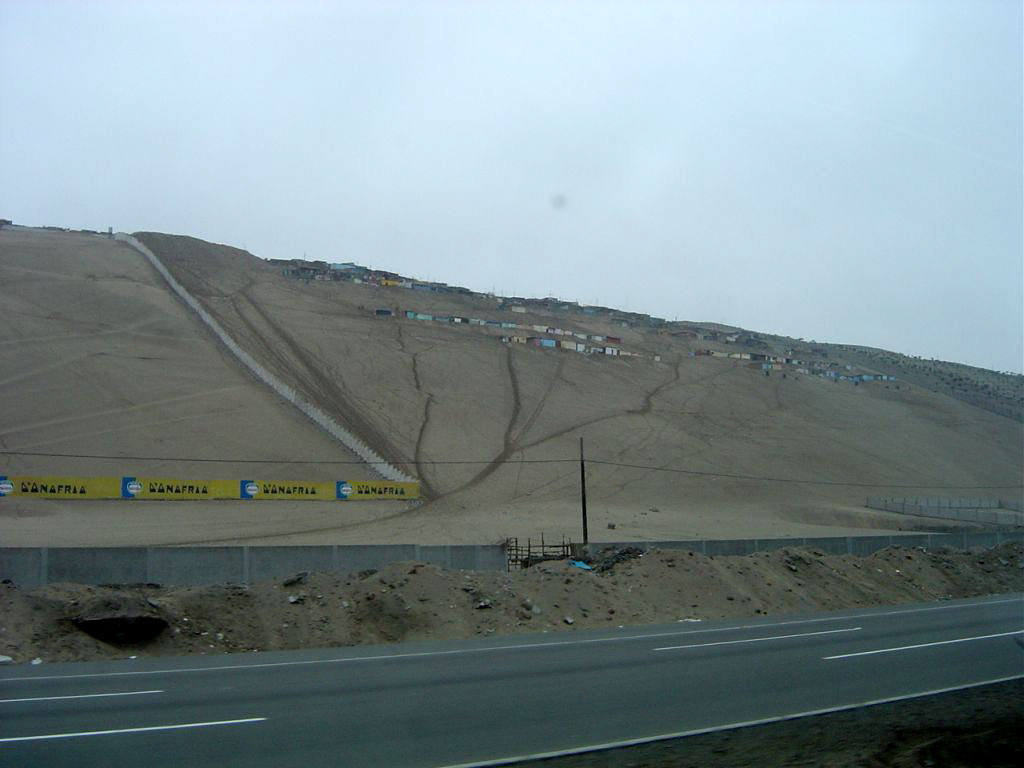
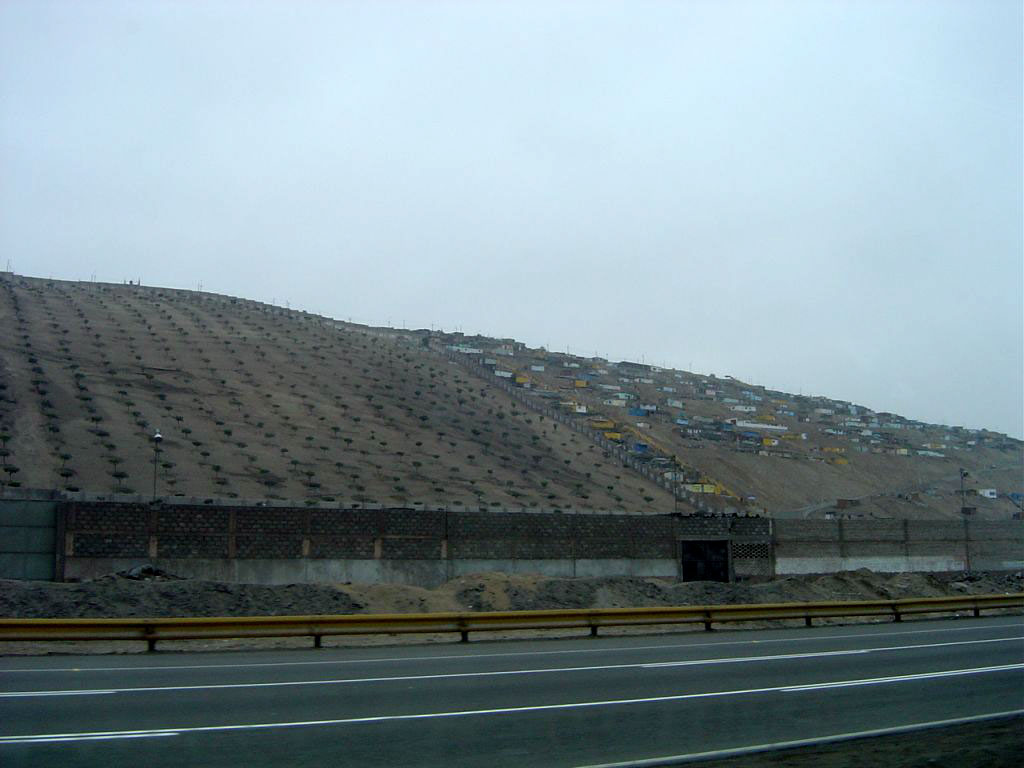
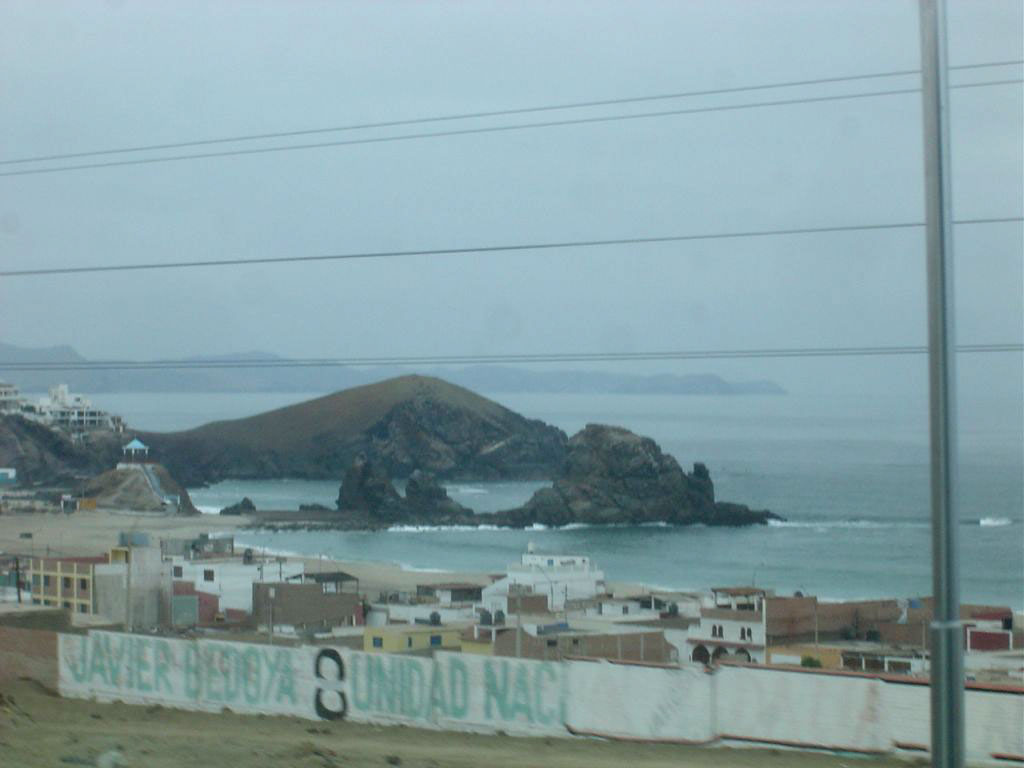
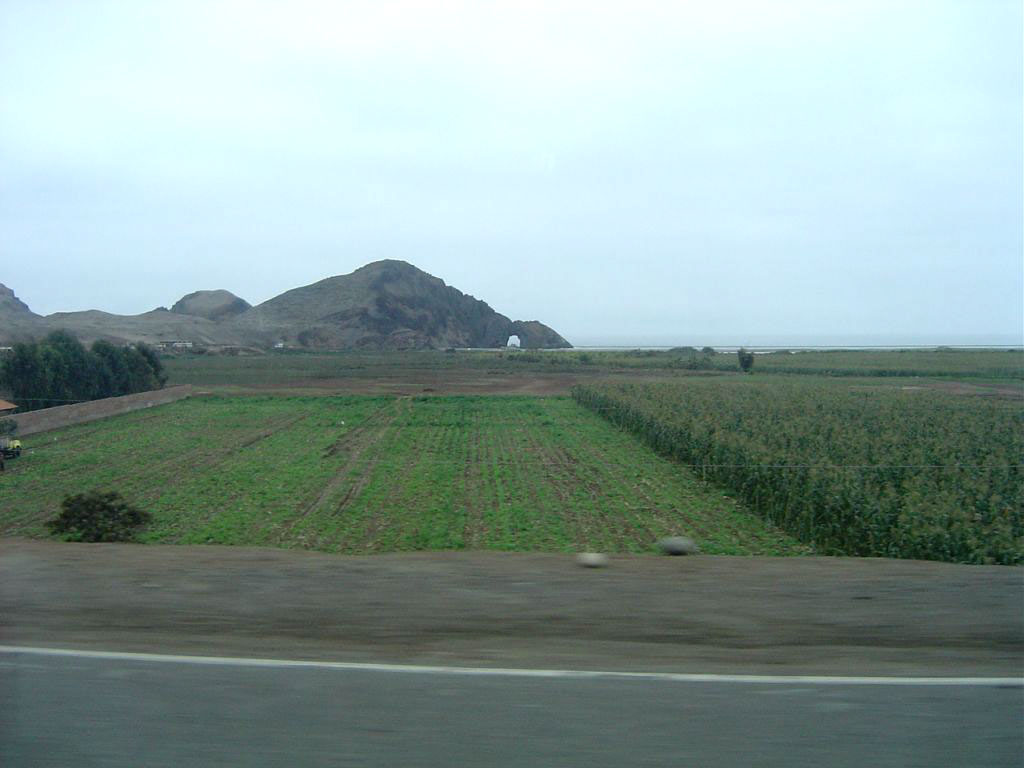
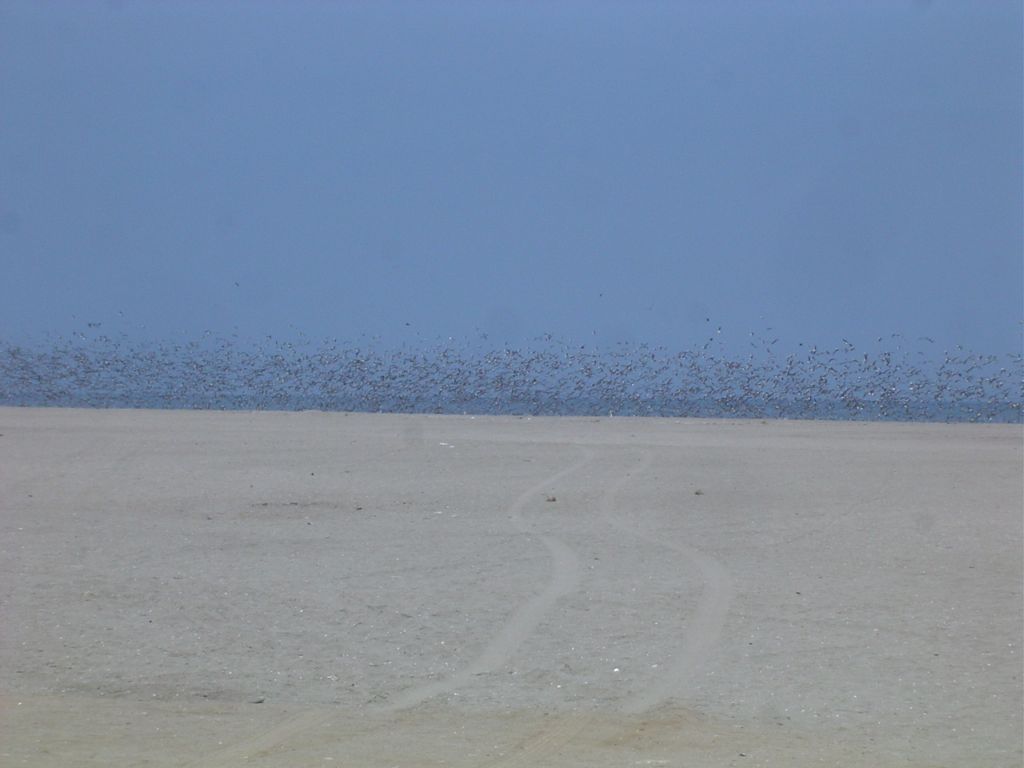
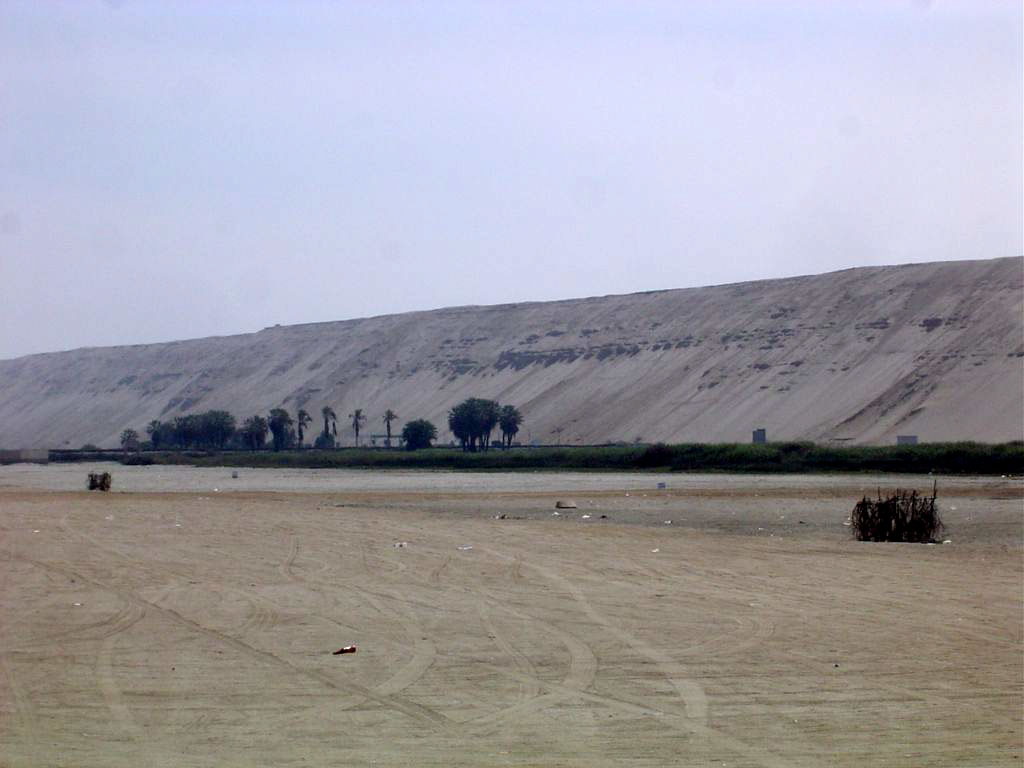
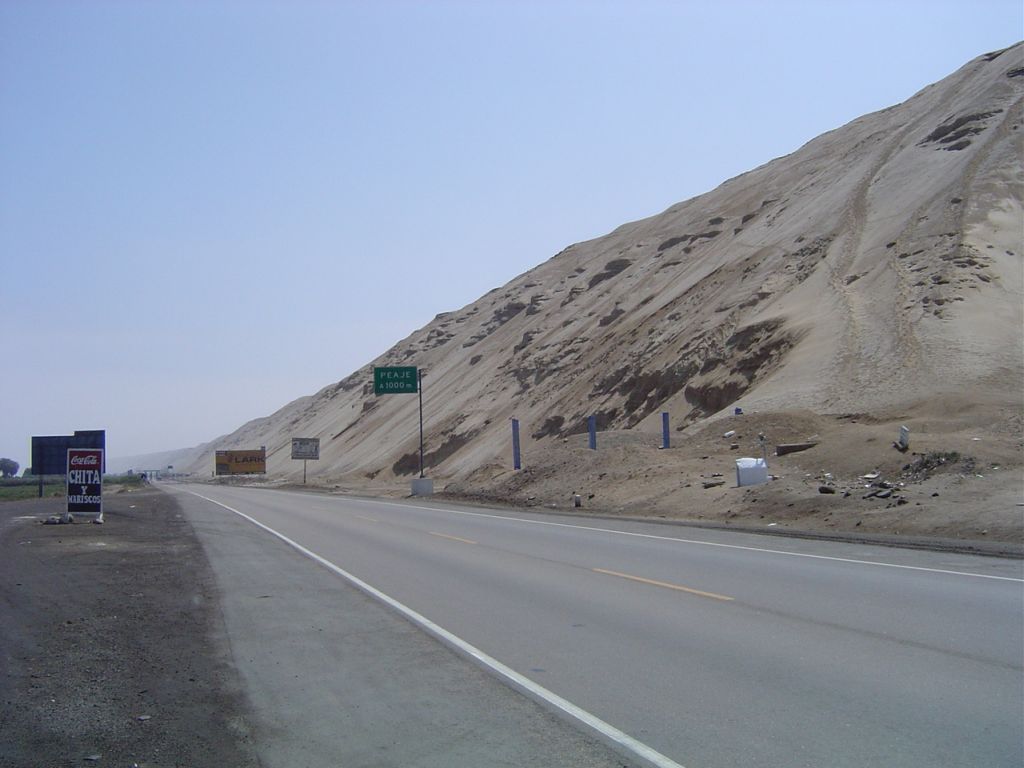
Toll
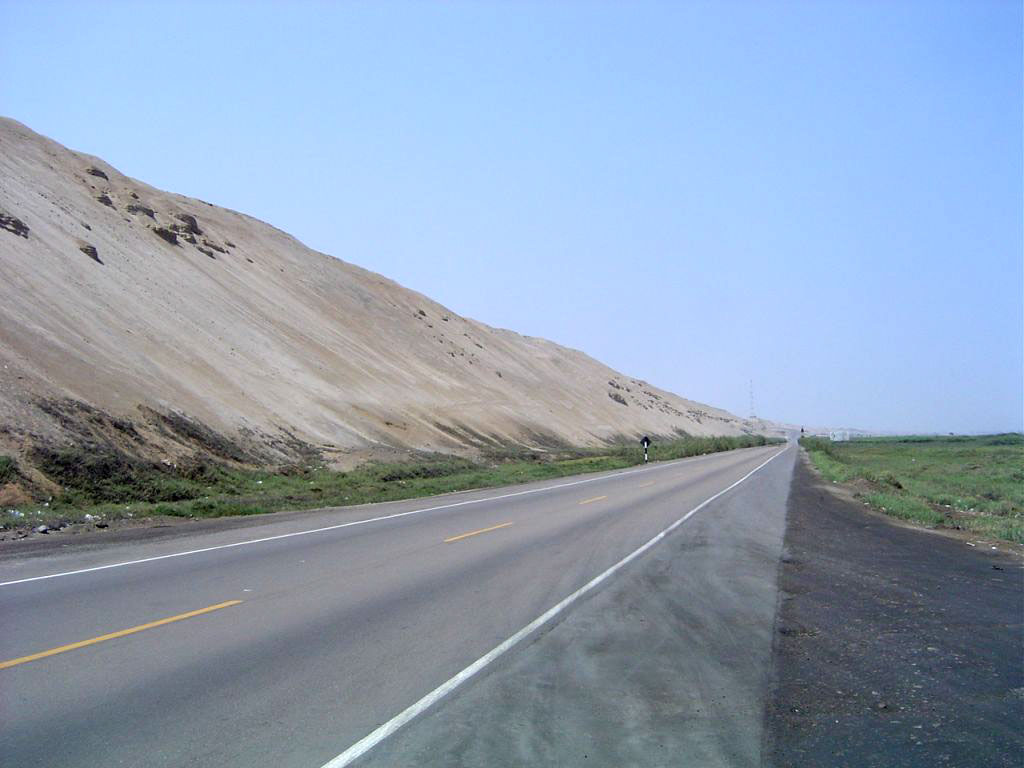
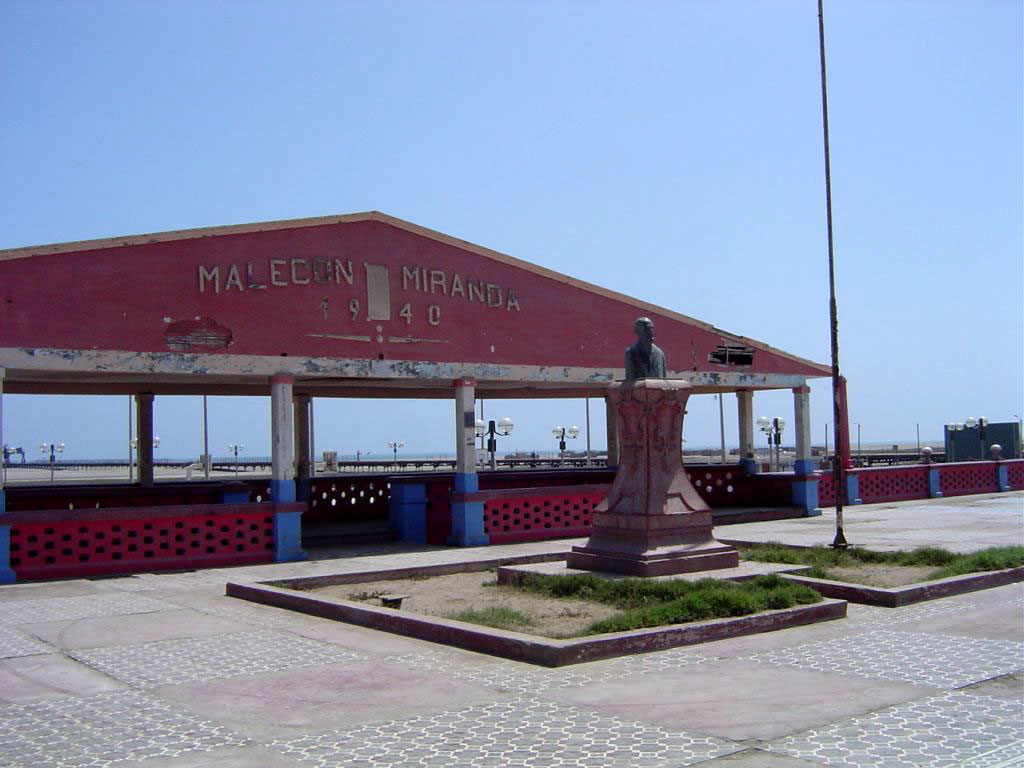
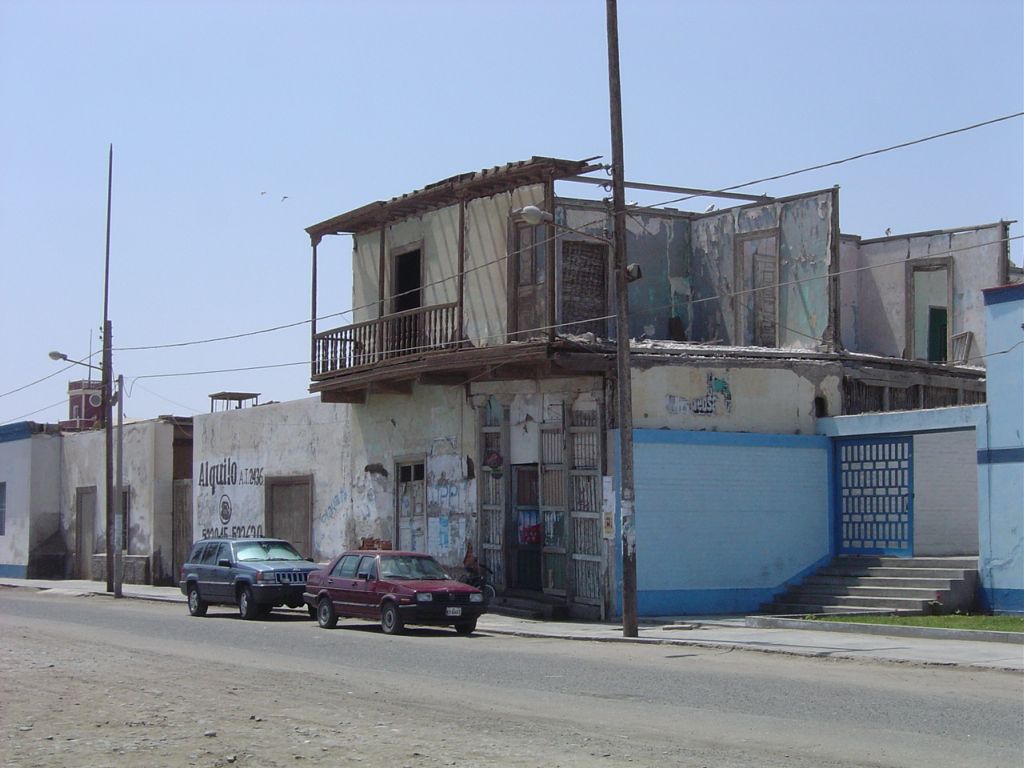
For sale... Fixer-Upper
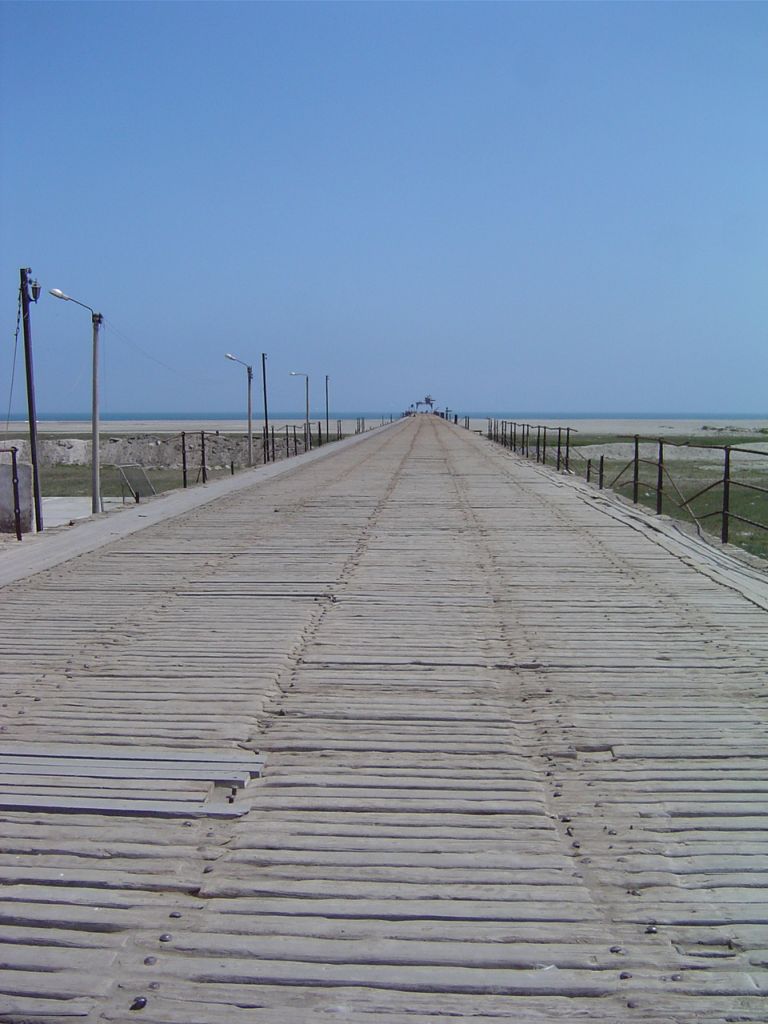
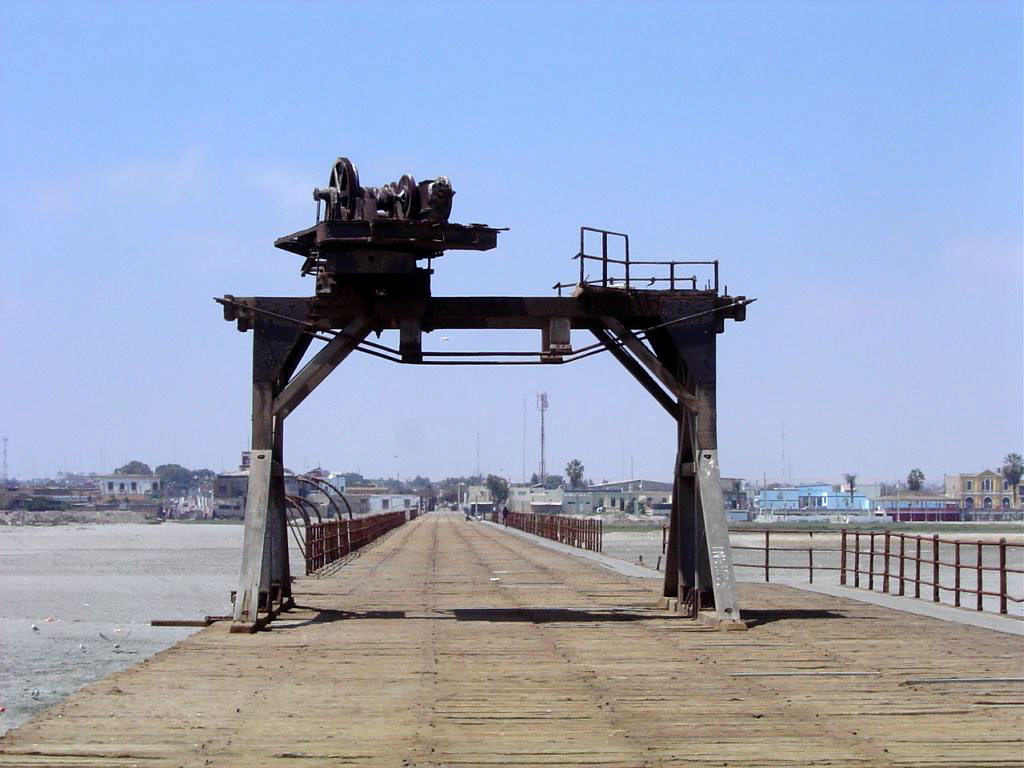
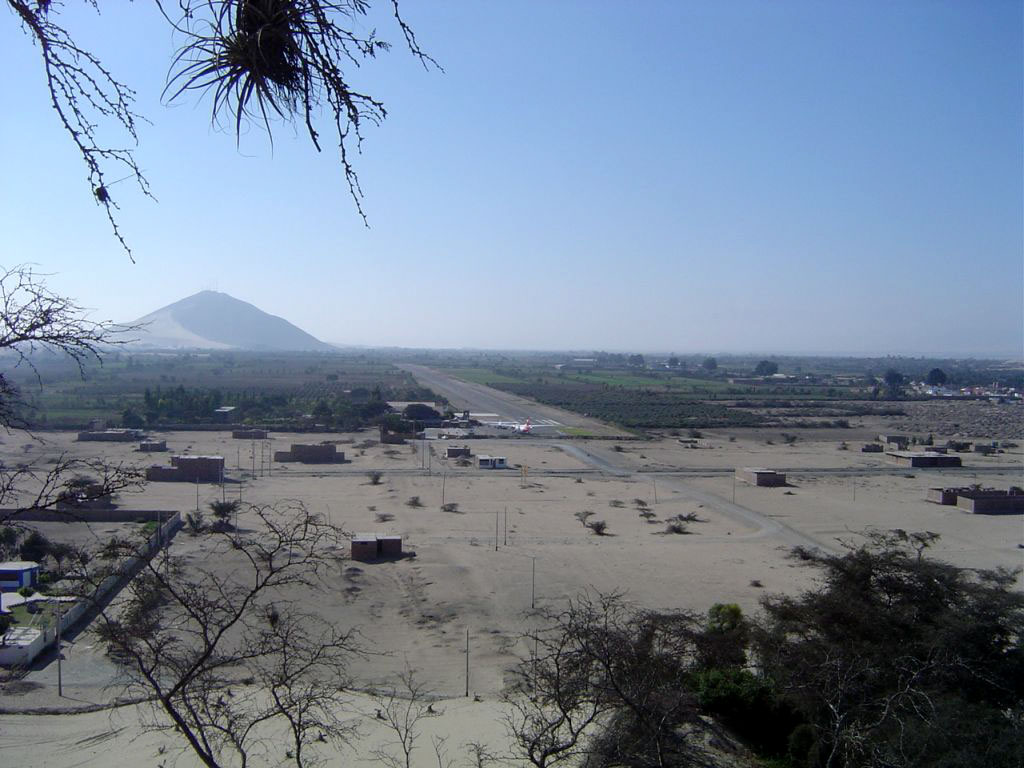
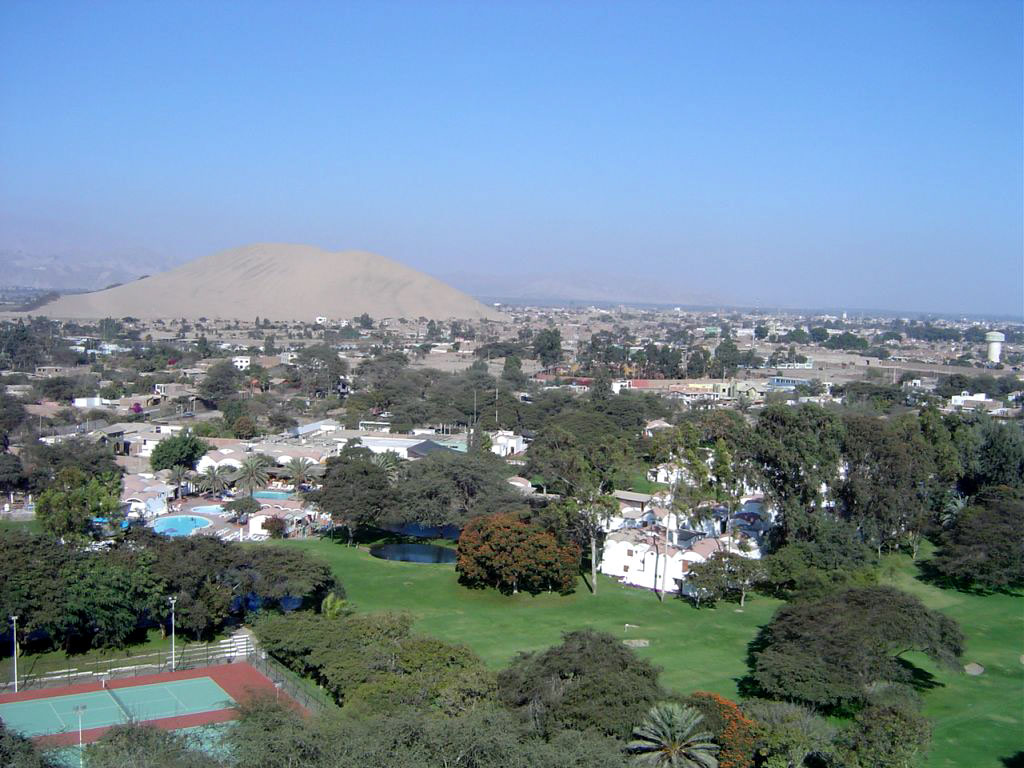
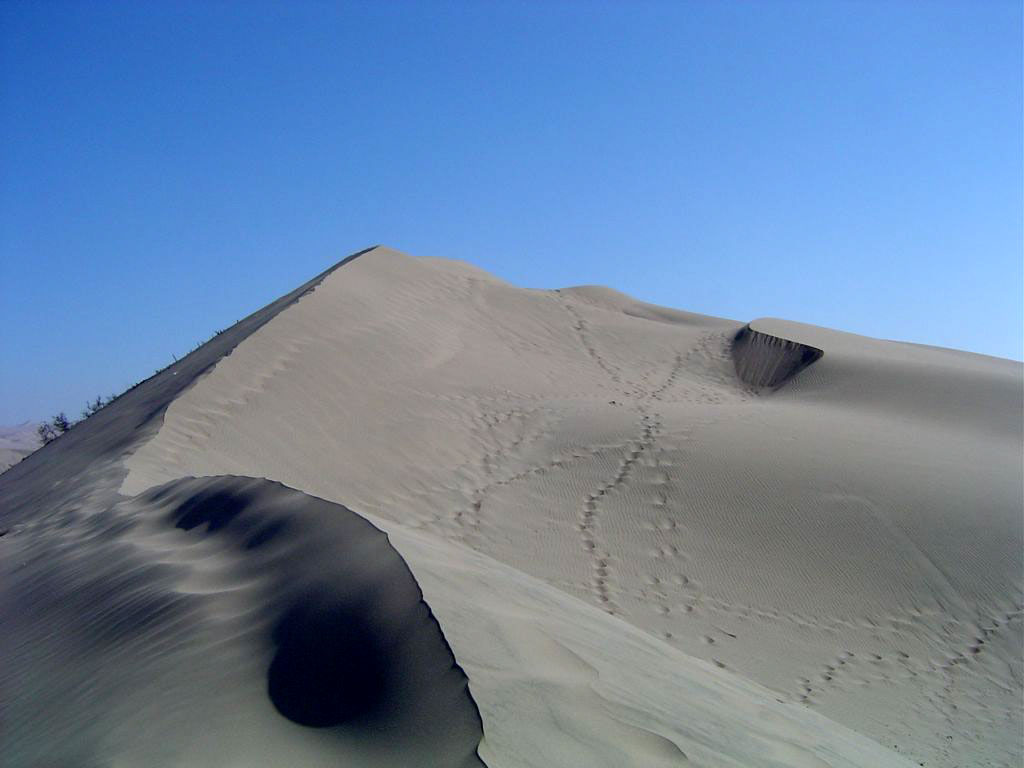
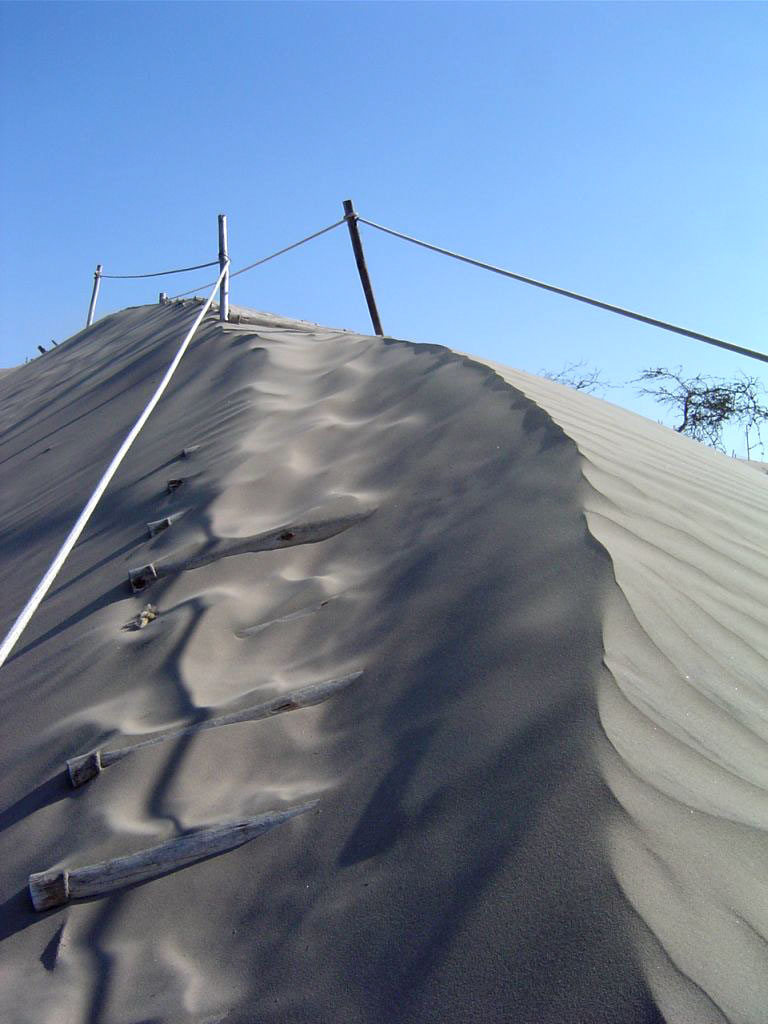
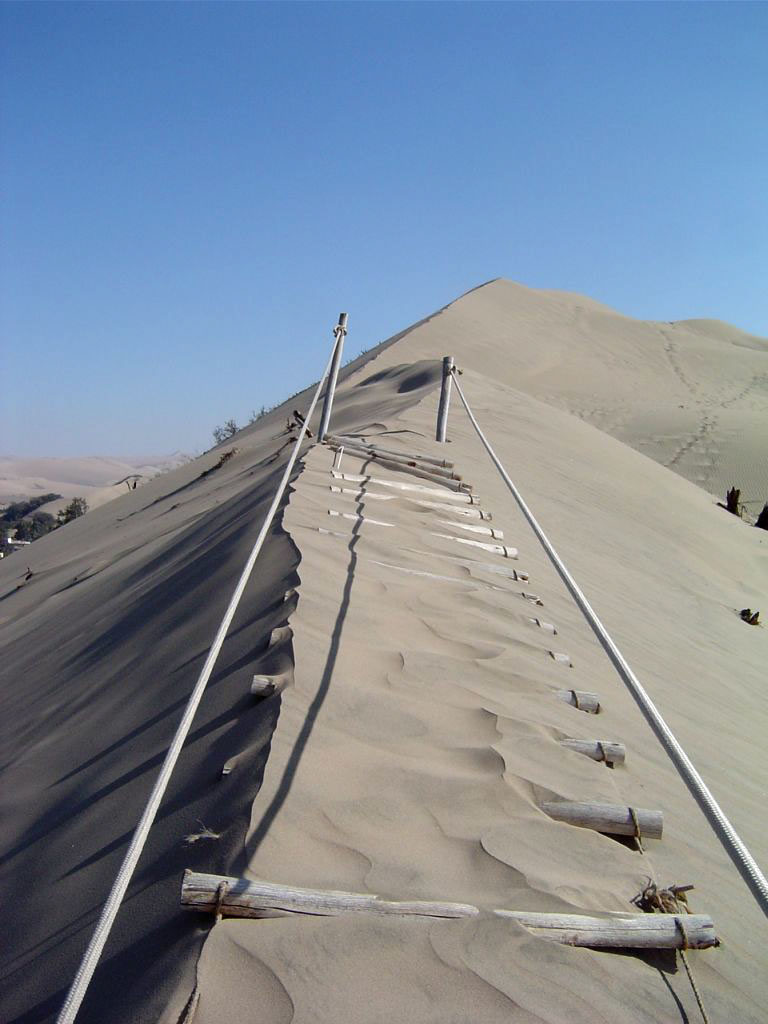
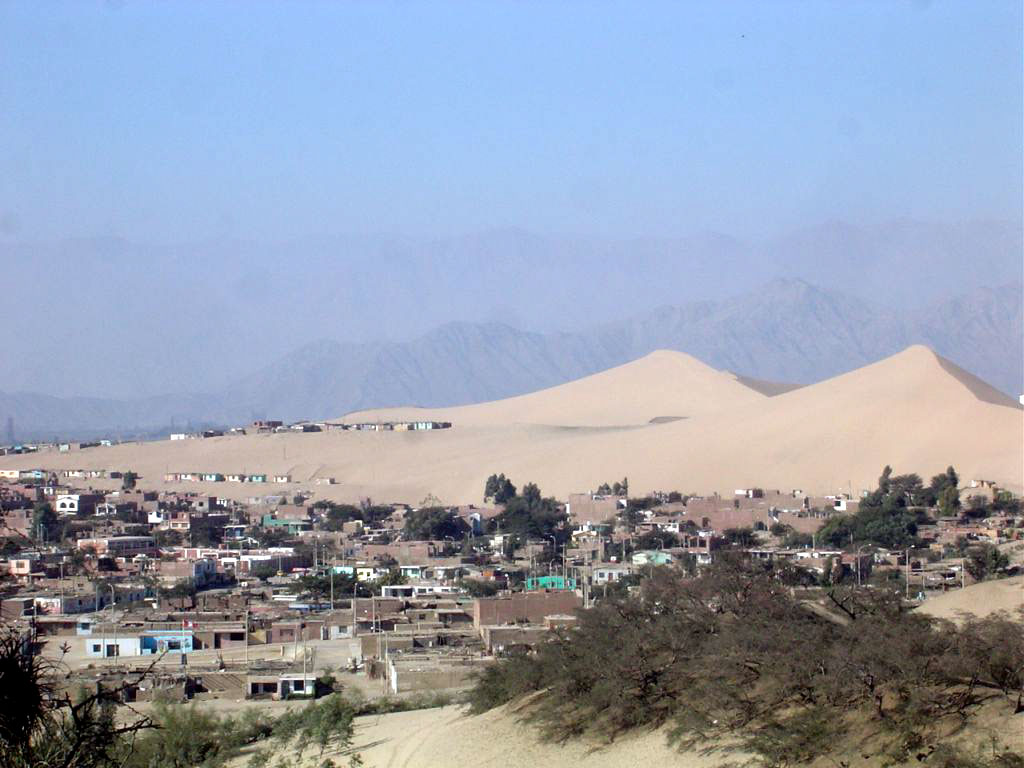
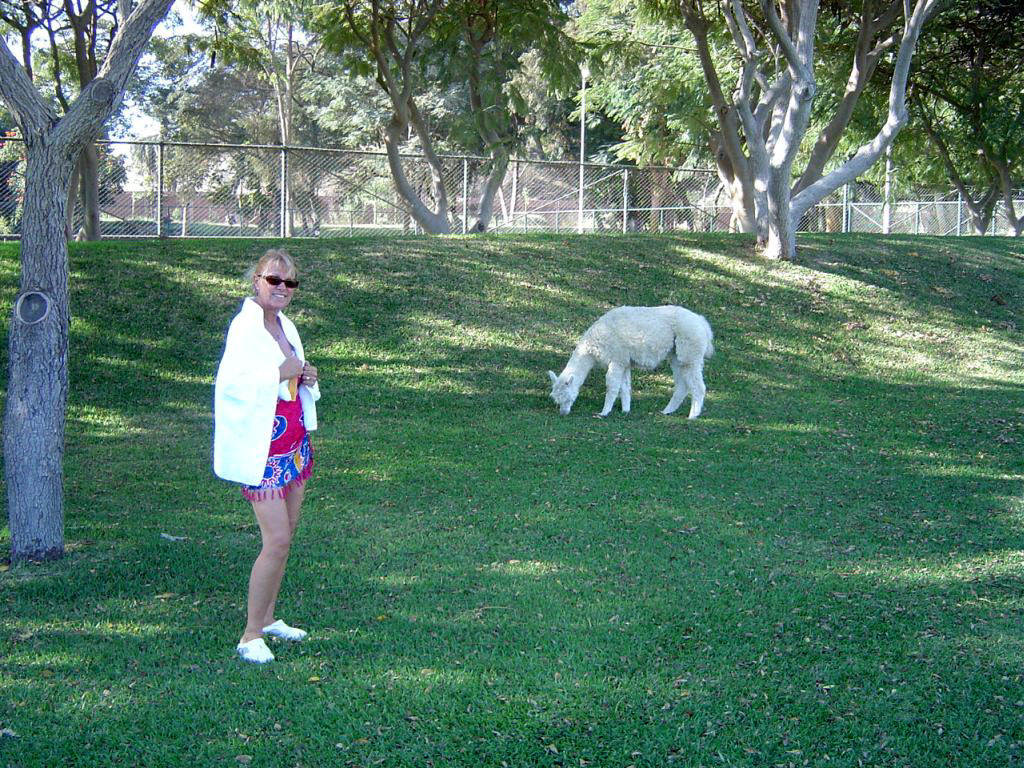
August 26th
Early morning fog prevented our Cessna 206 from departing, so we continued south to Nasca, only two hours away. Twenty-five kilometers north of Nasca, we passed a tower erected beside the road for viewing of the lines. Never one to let a tower go un-climbed, we caught our first glimpse of two of the many lines from the top. Not visible from the ground due to their immense size (100 to 1000 meters in length), the Pan-American Highway was built across one of the figures before it was known that they existed.
We checked into the Nasca Lines Hotel and headed for the Nasca Airport. Only 25 km from the Nasca Lines, this airport supports a much larger fleet of aircraft, each poised to launch at the appearance of two or more tourists. Elsa organized the co-pilot's seat for me in a Cessna 206. The control wheel and rudder pedals had been removed from my side, but I felt like a real copilot anyway.
The Nasca Lines Hotel has a planetarium show every night at 7:00 PM. They go over possible relationships between the lines on the desert and astronomical events, concluding with telescope viewing of Alpha Centauri and the moon, which was almost full. The Southern Cross was fully visible low in the sky.
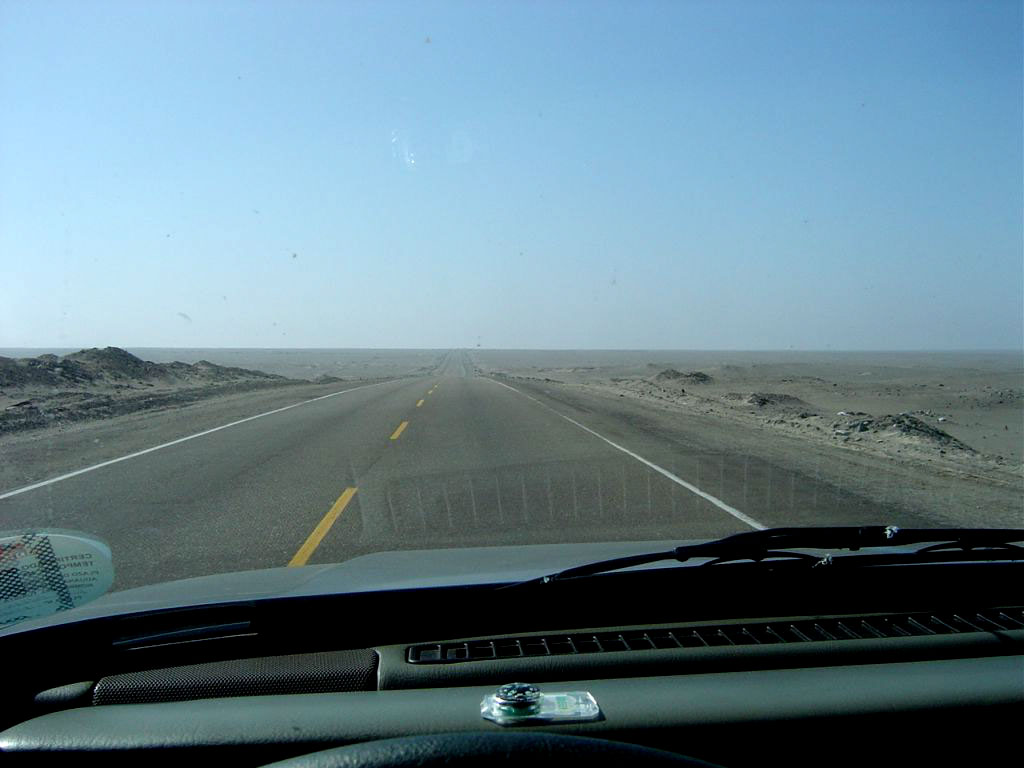
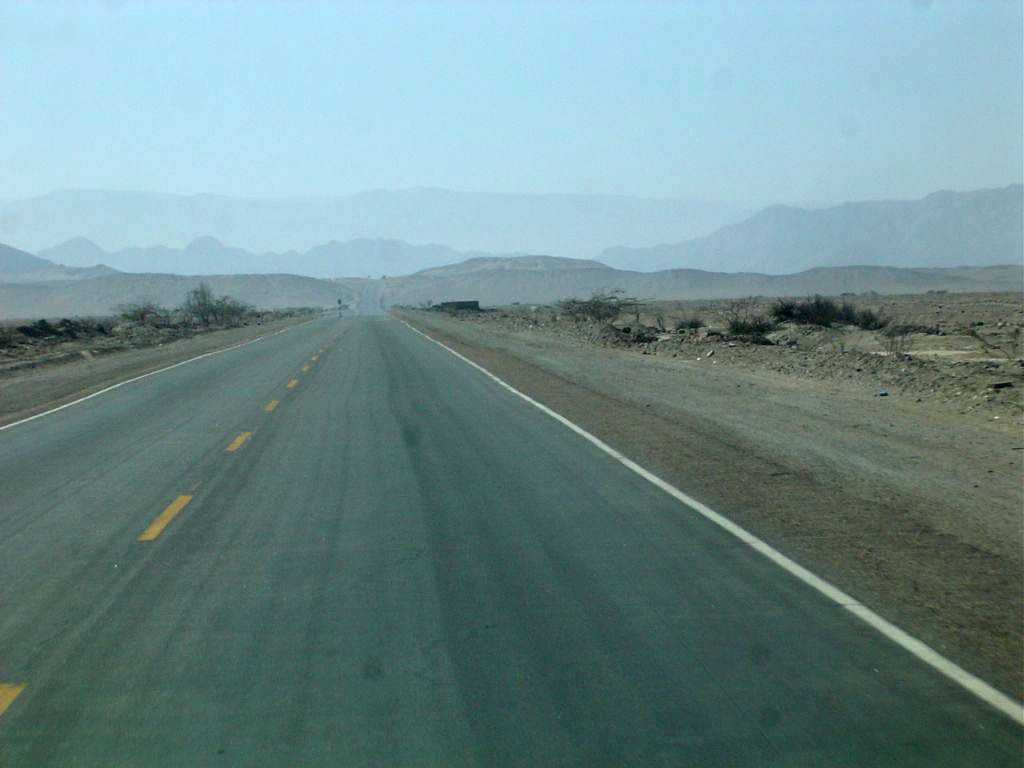
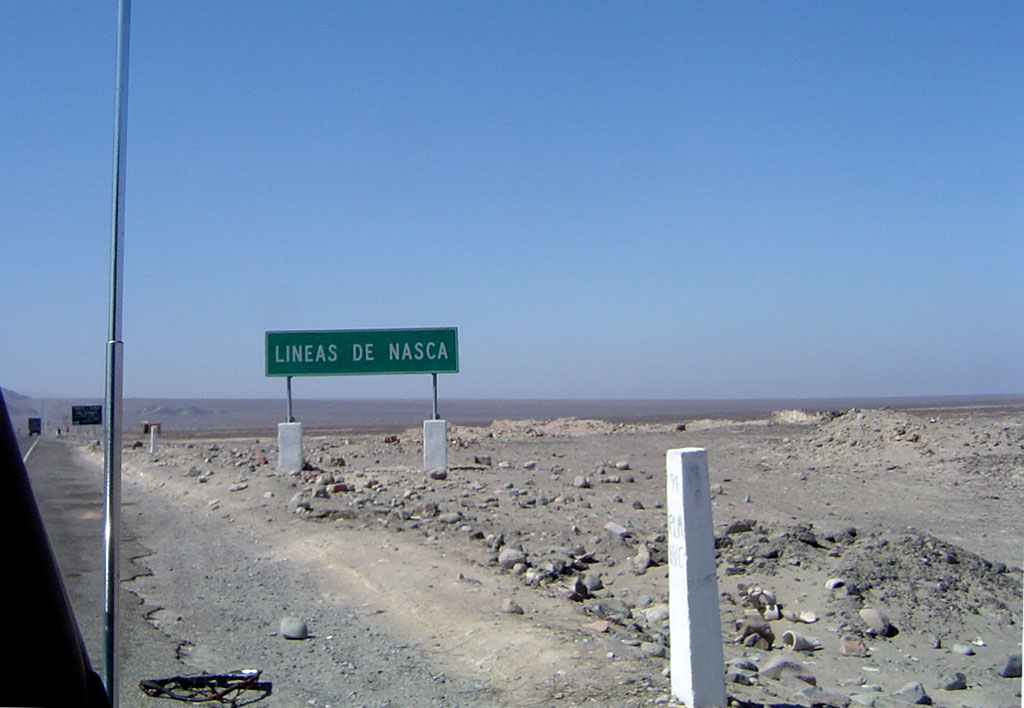
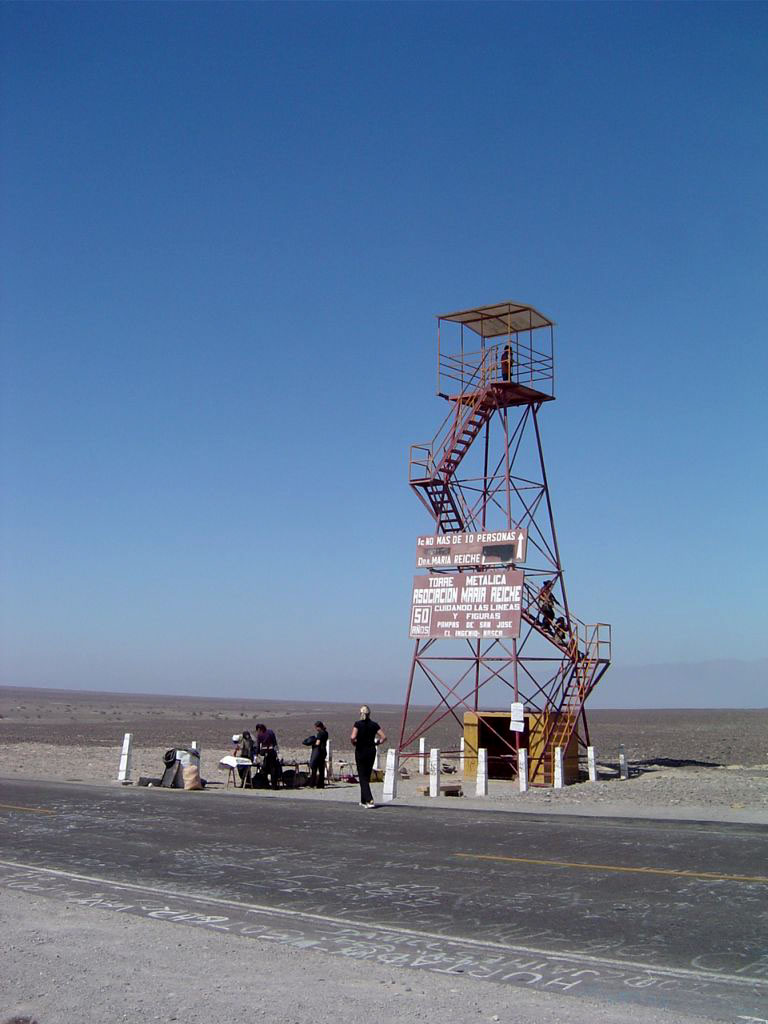
Mirador De Las Líneas De Nazca
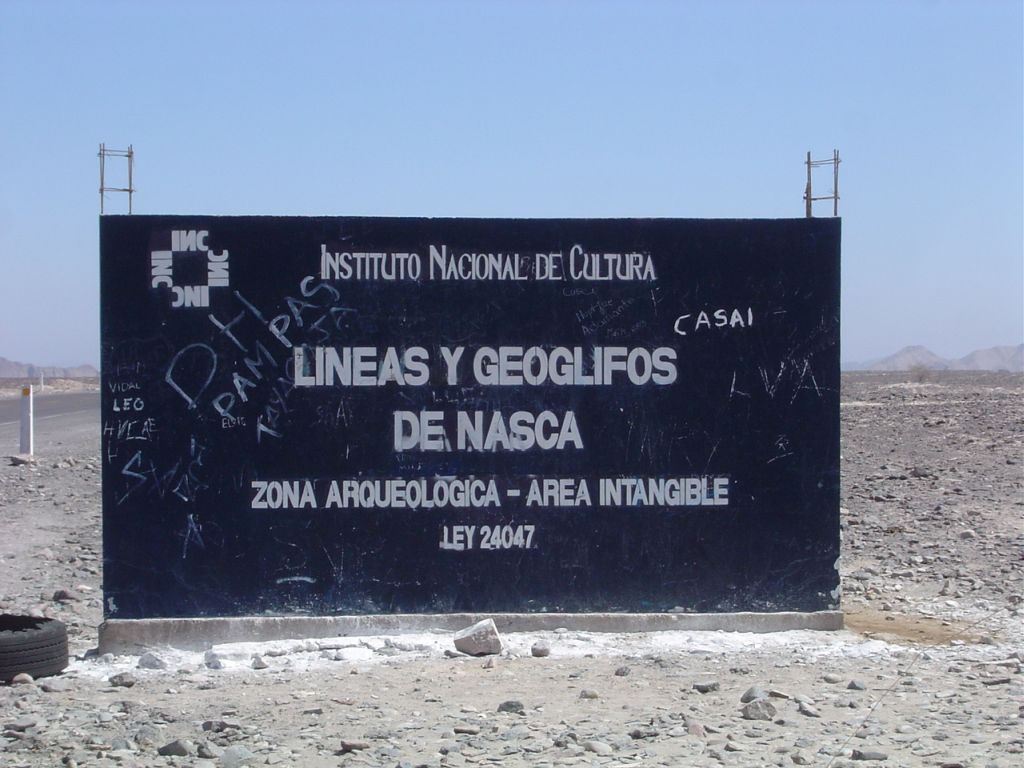
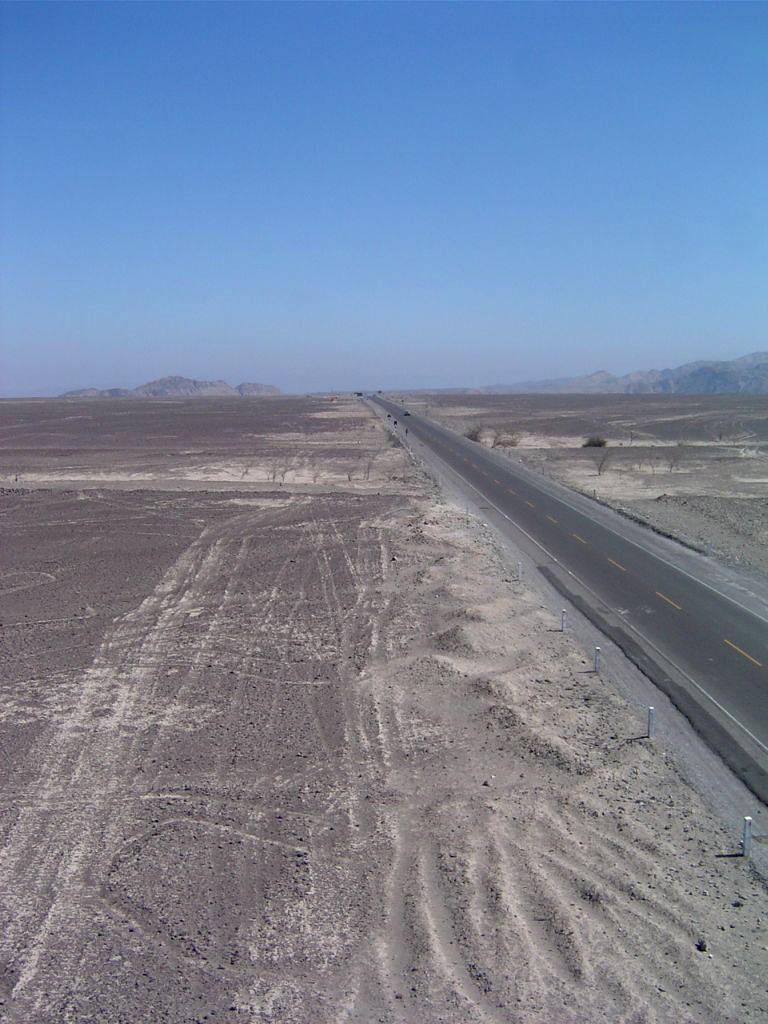
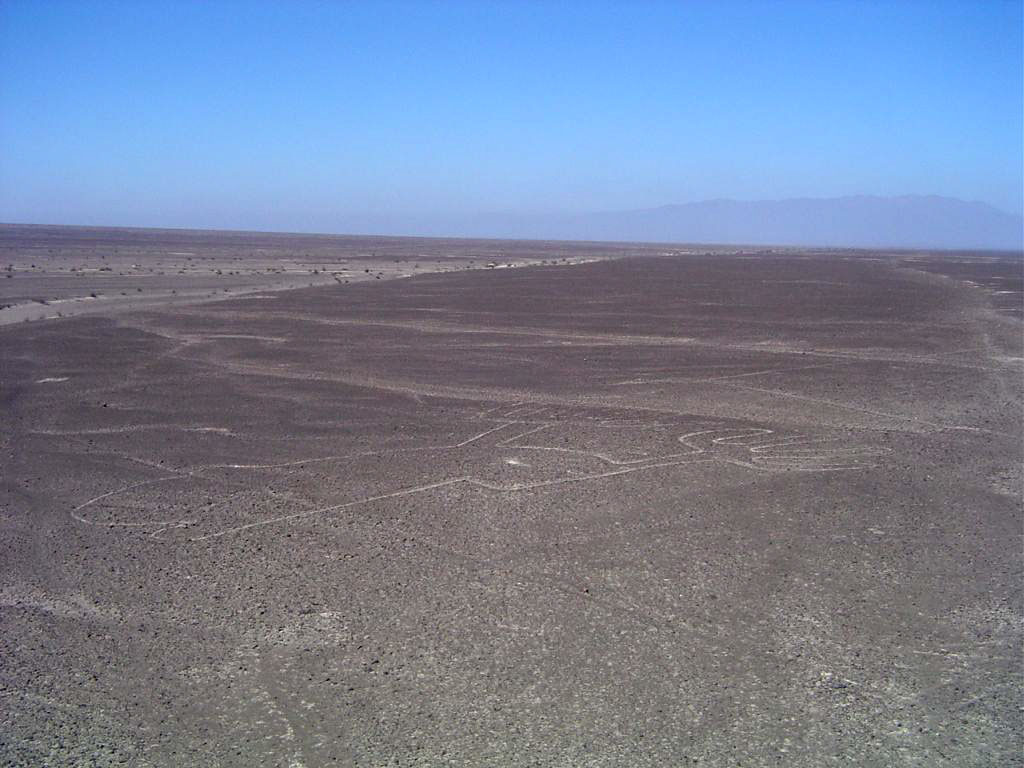
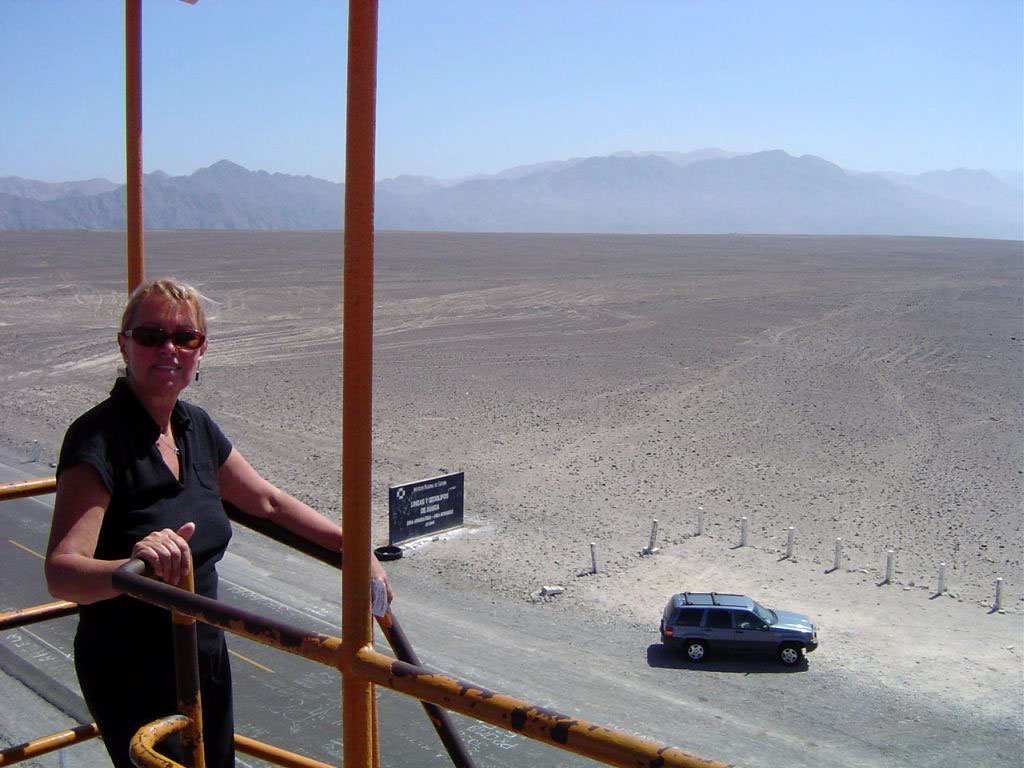
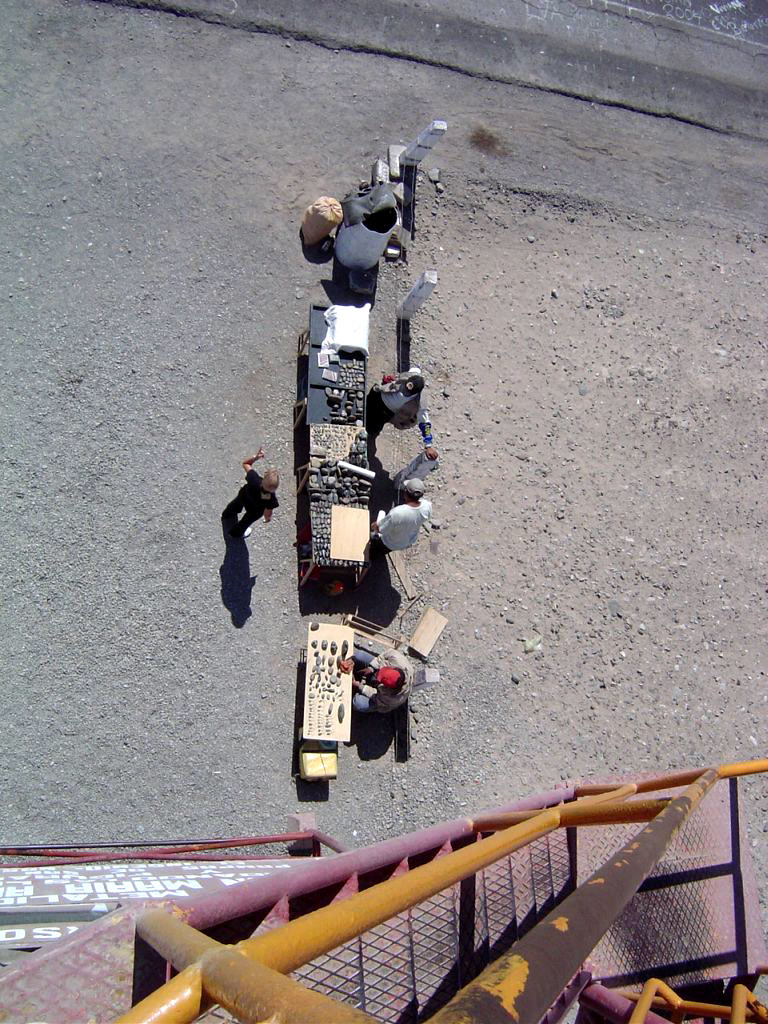
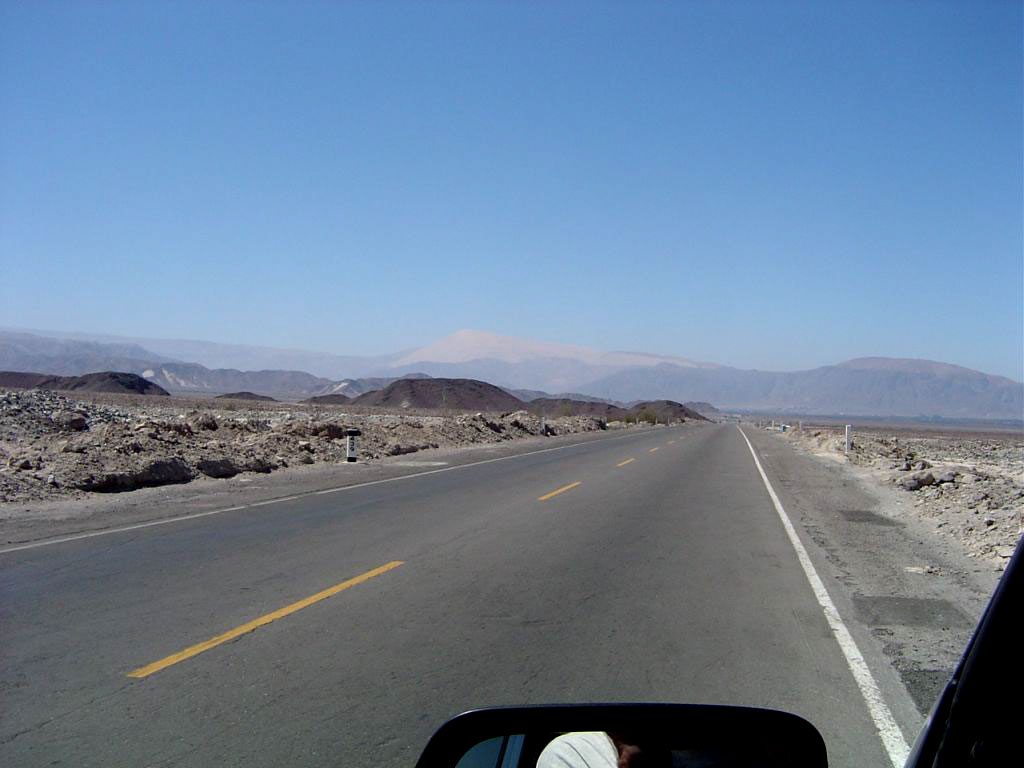
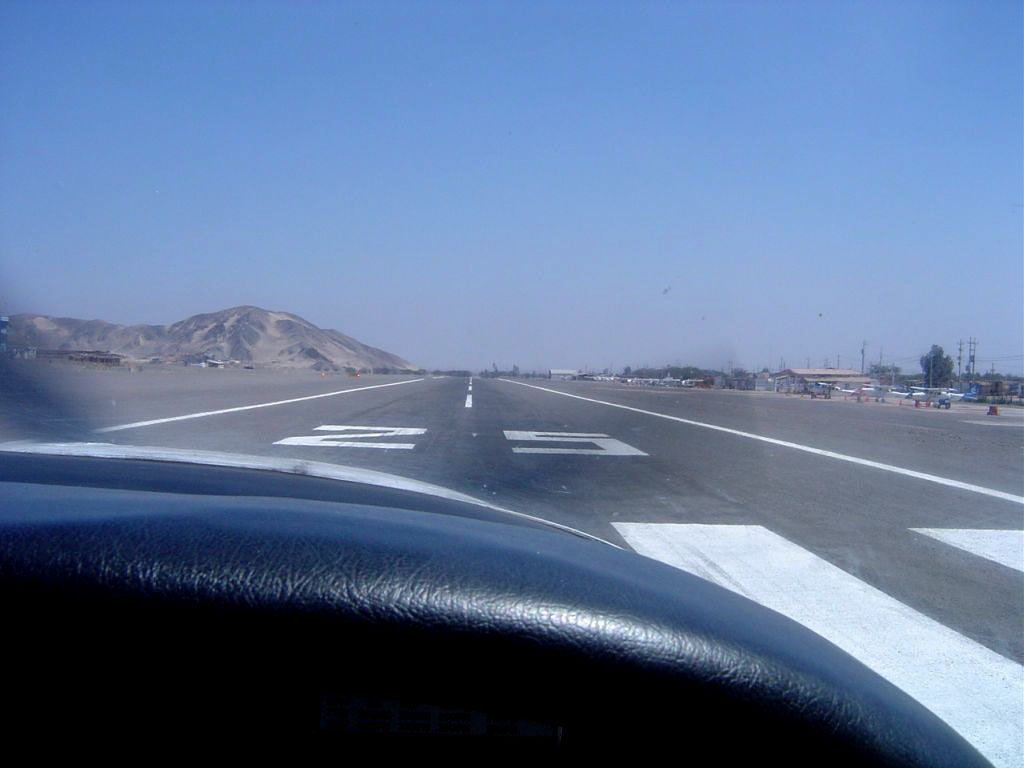

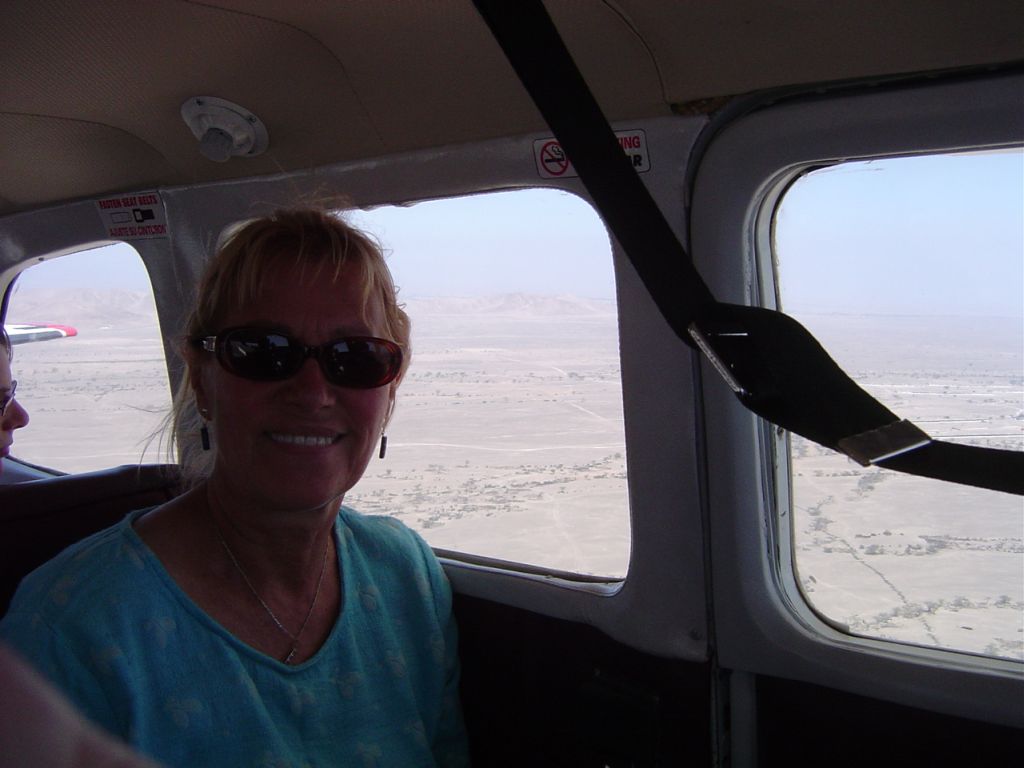
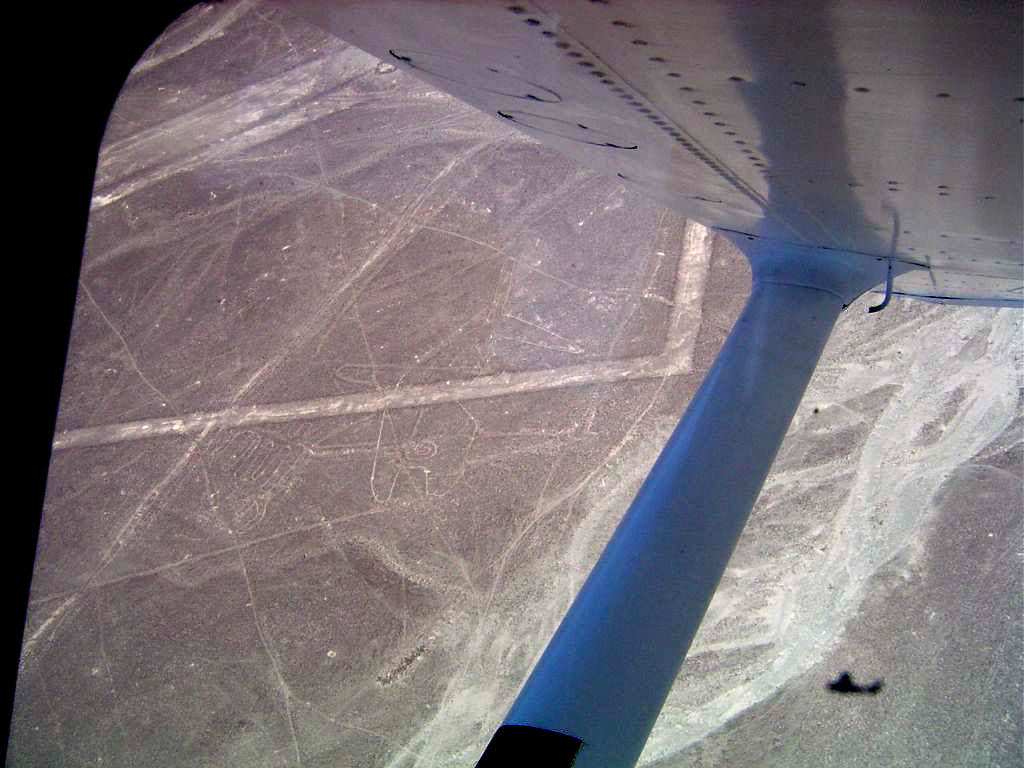
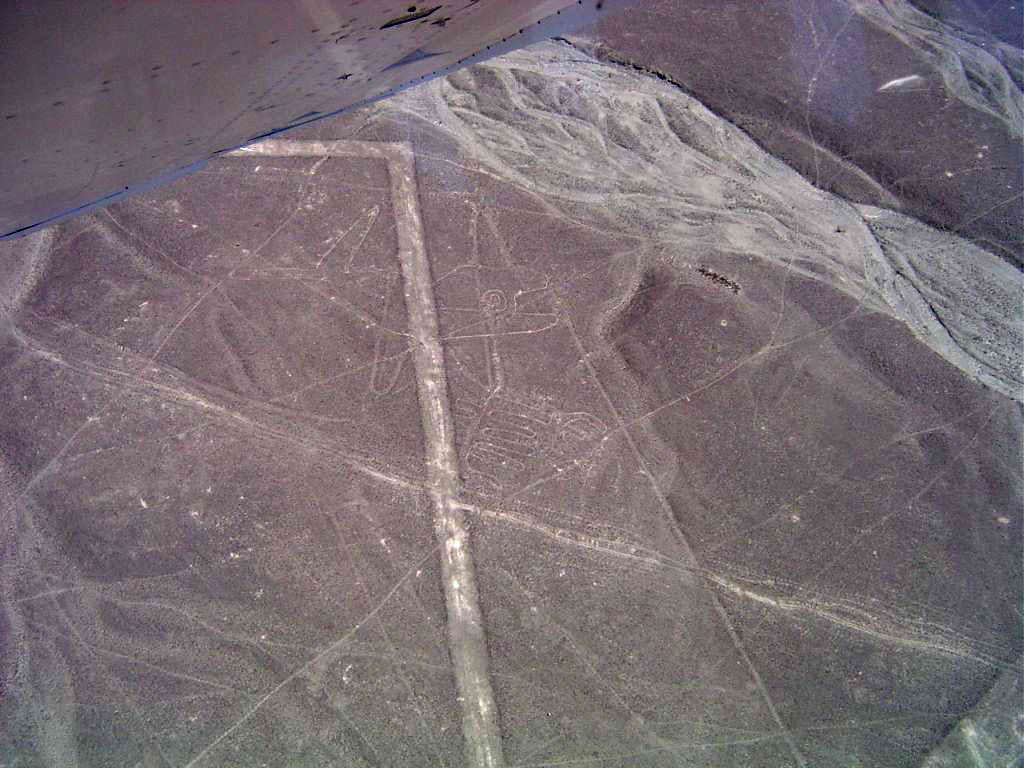
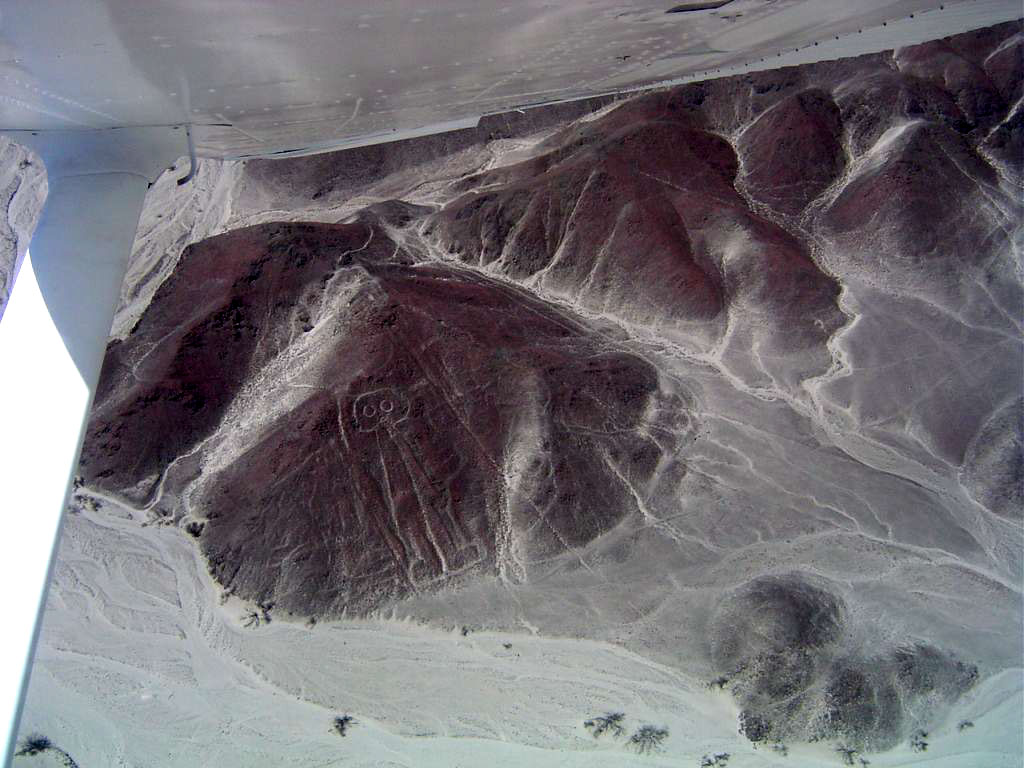
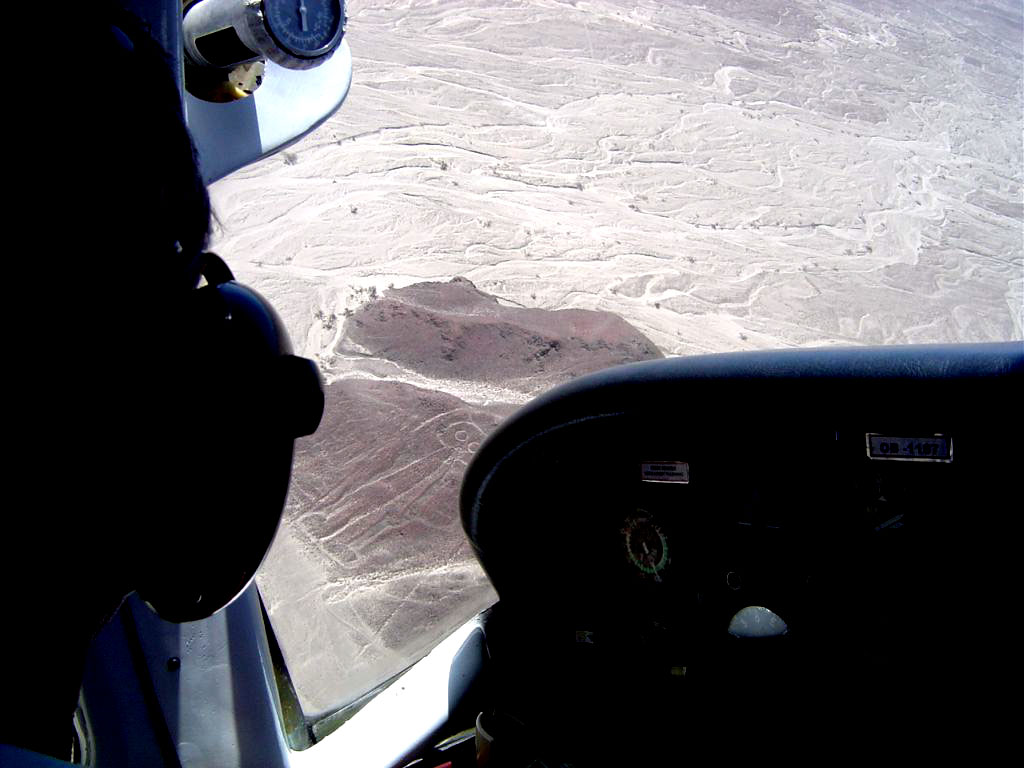
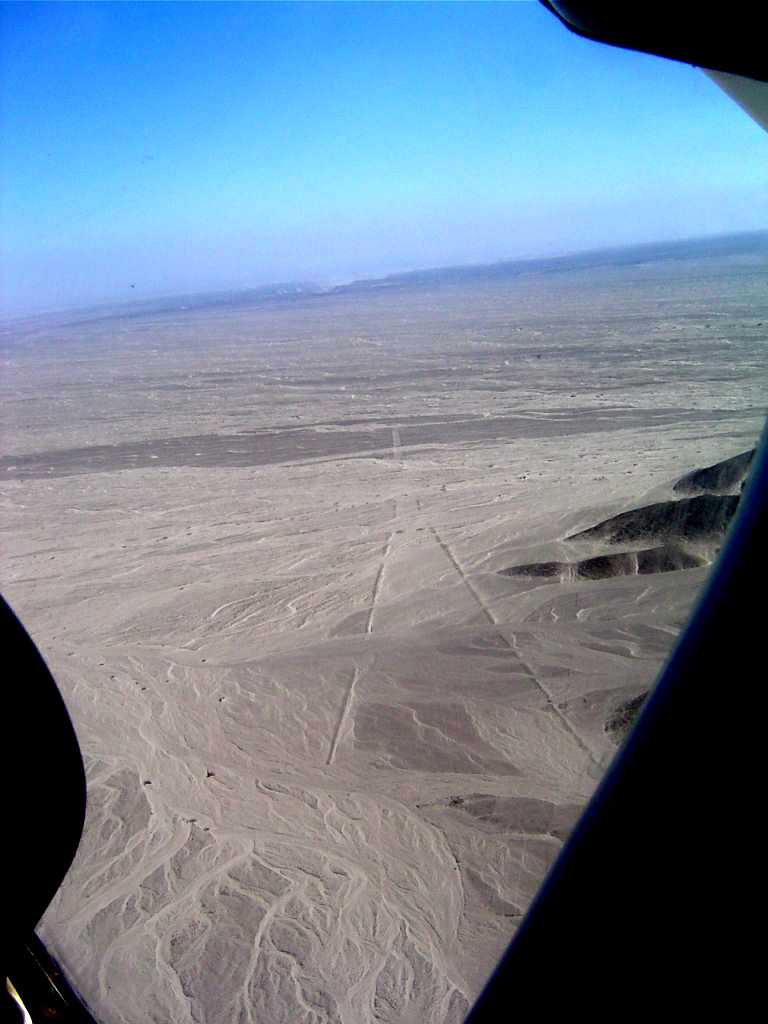
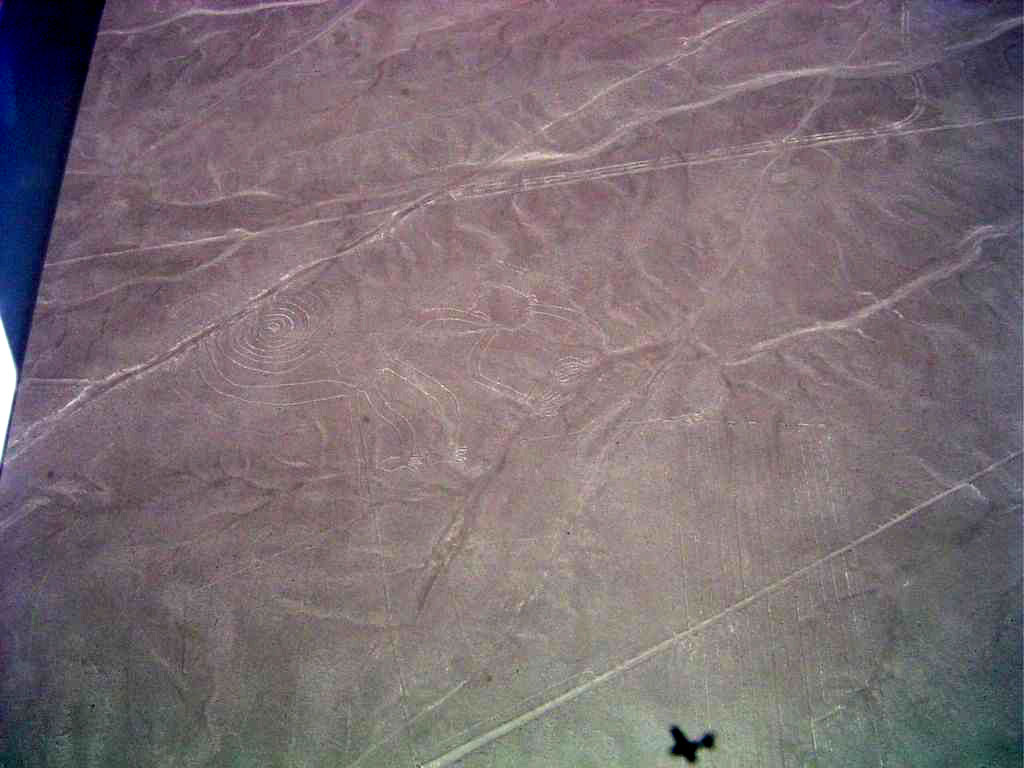
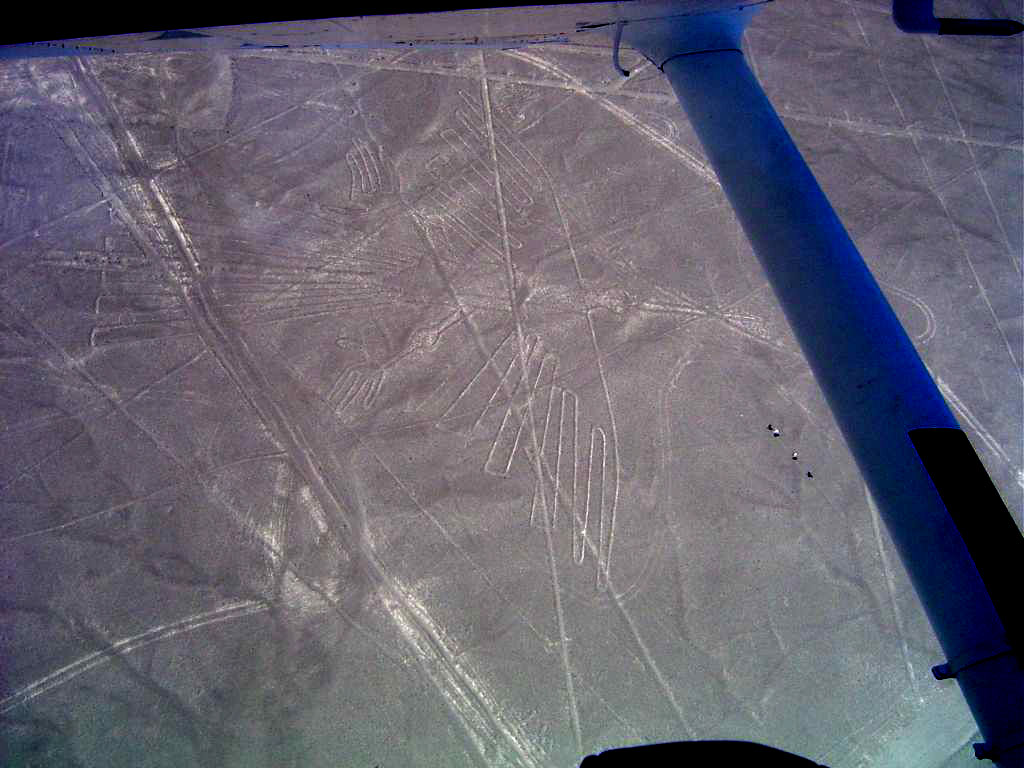
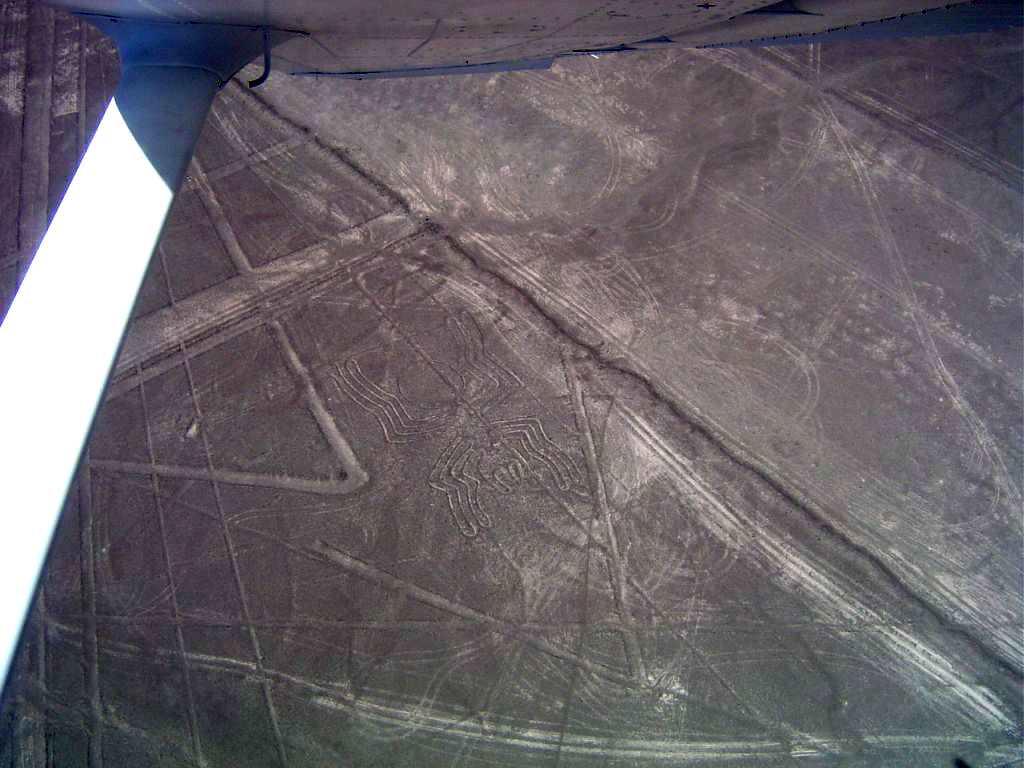
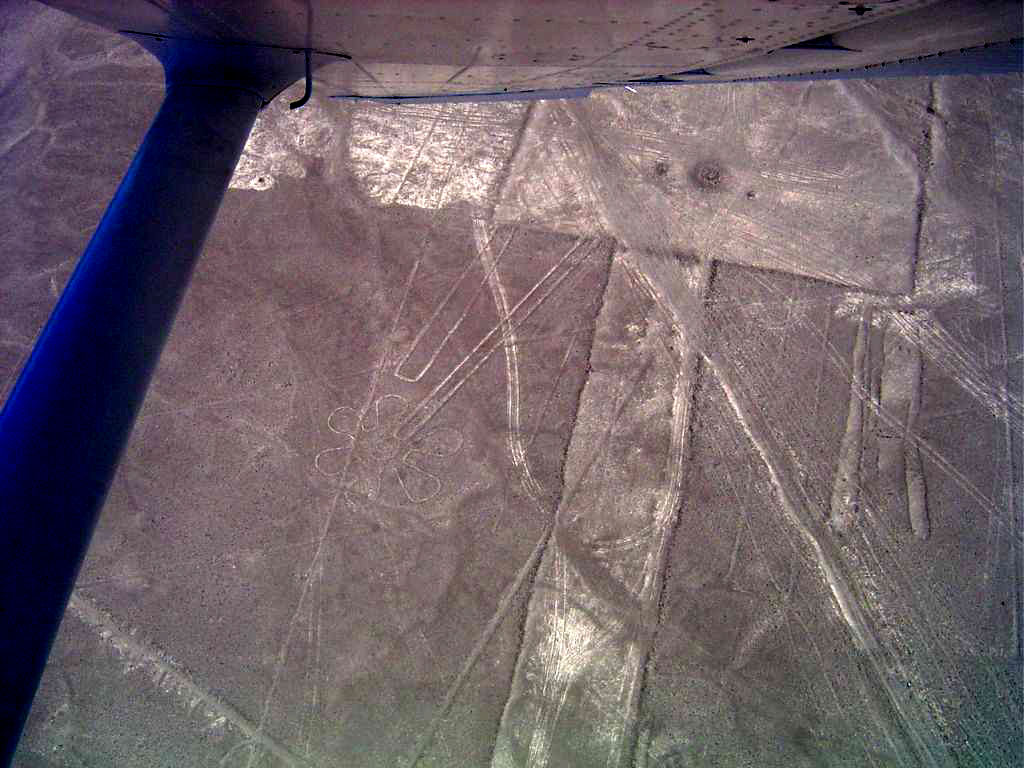
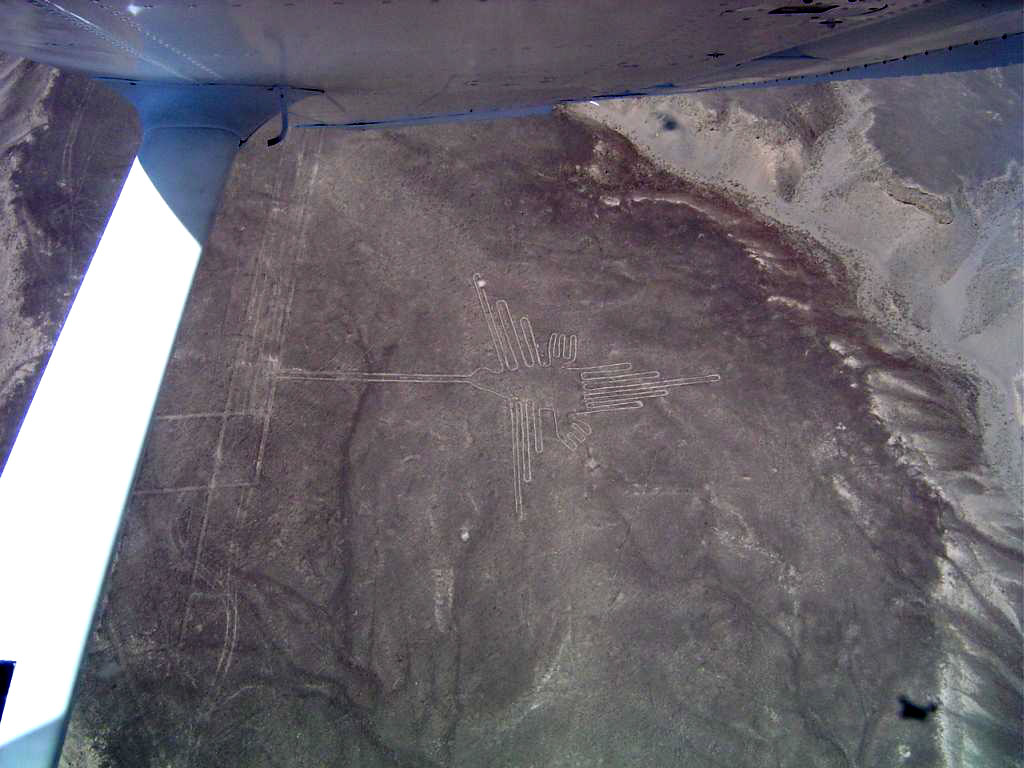
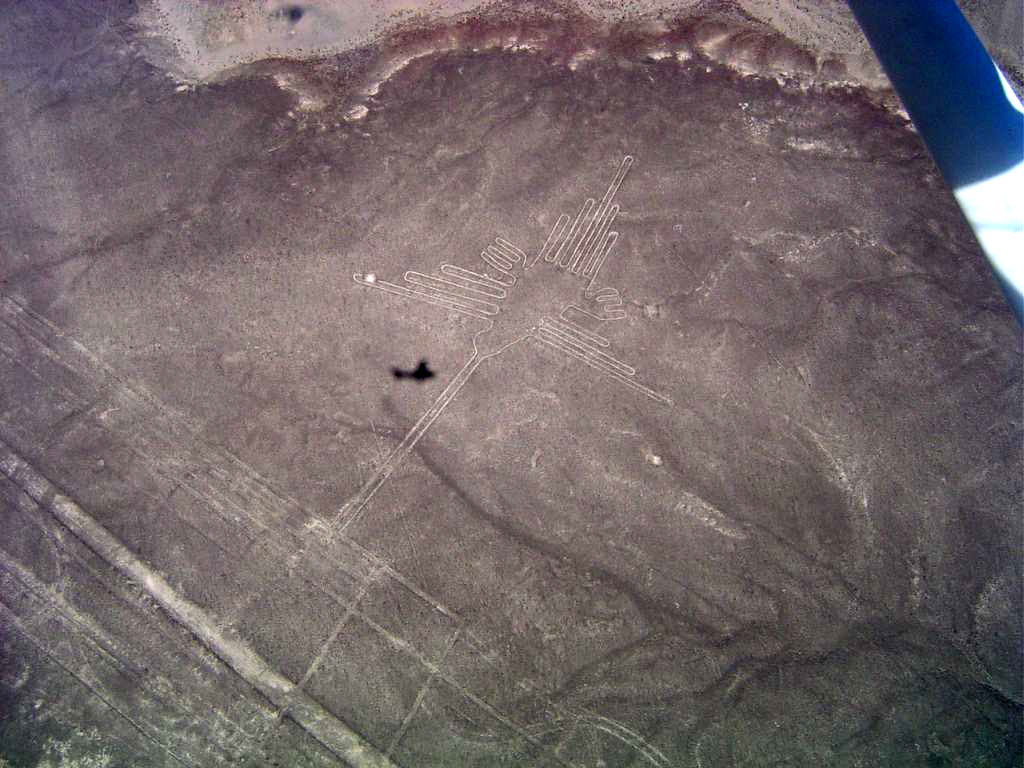
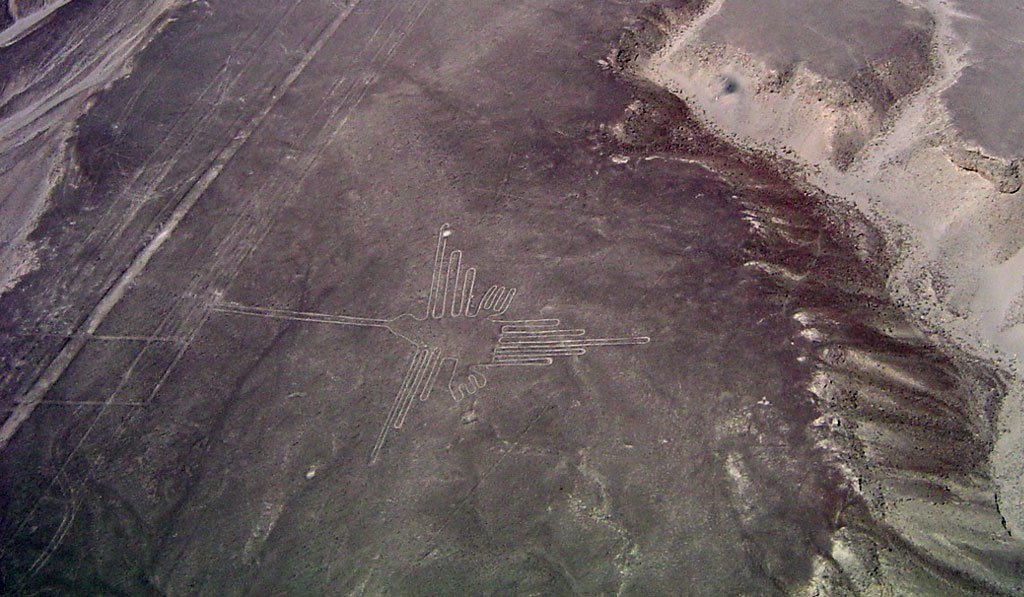
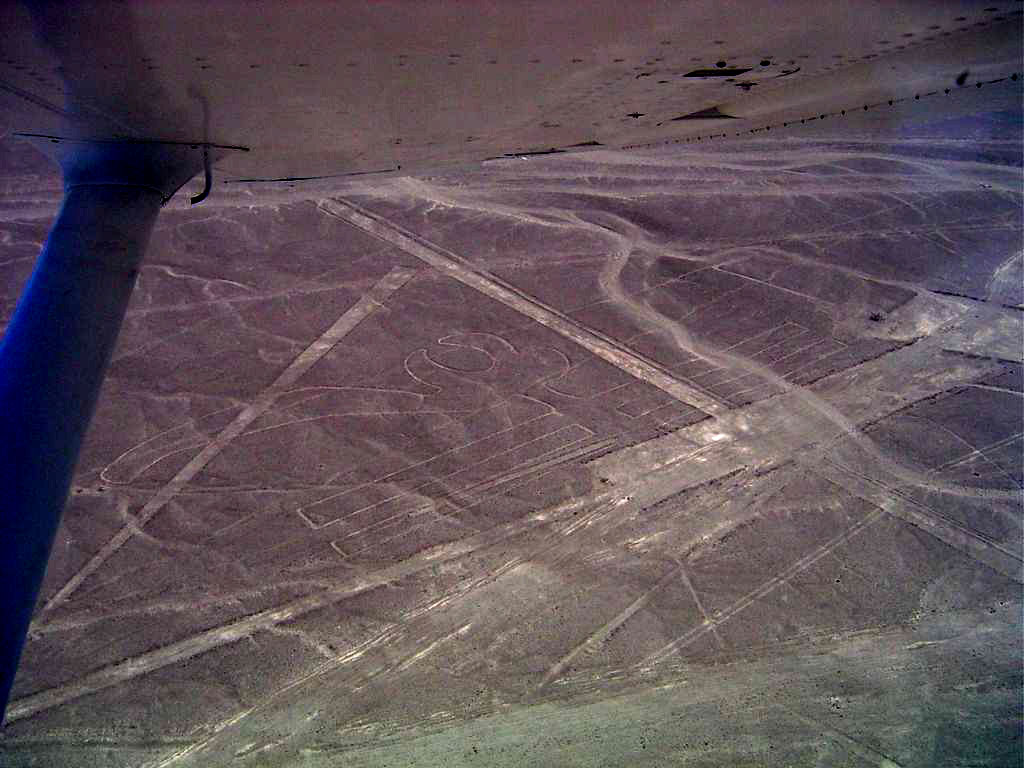
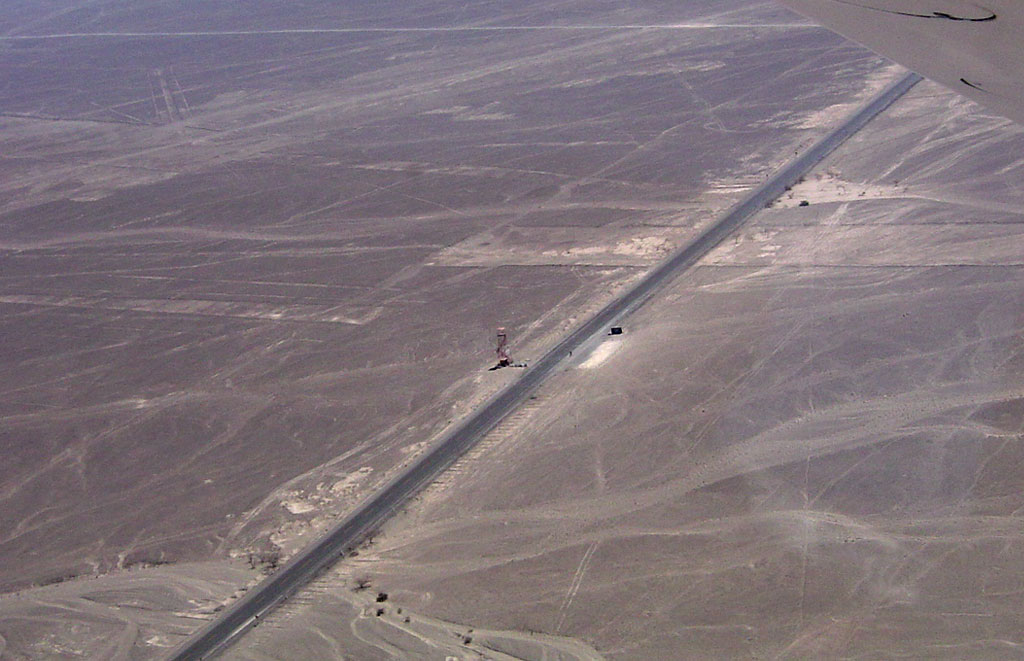
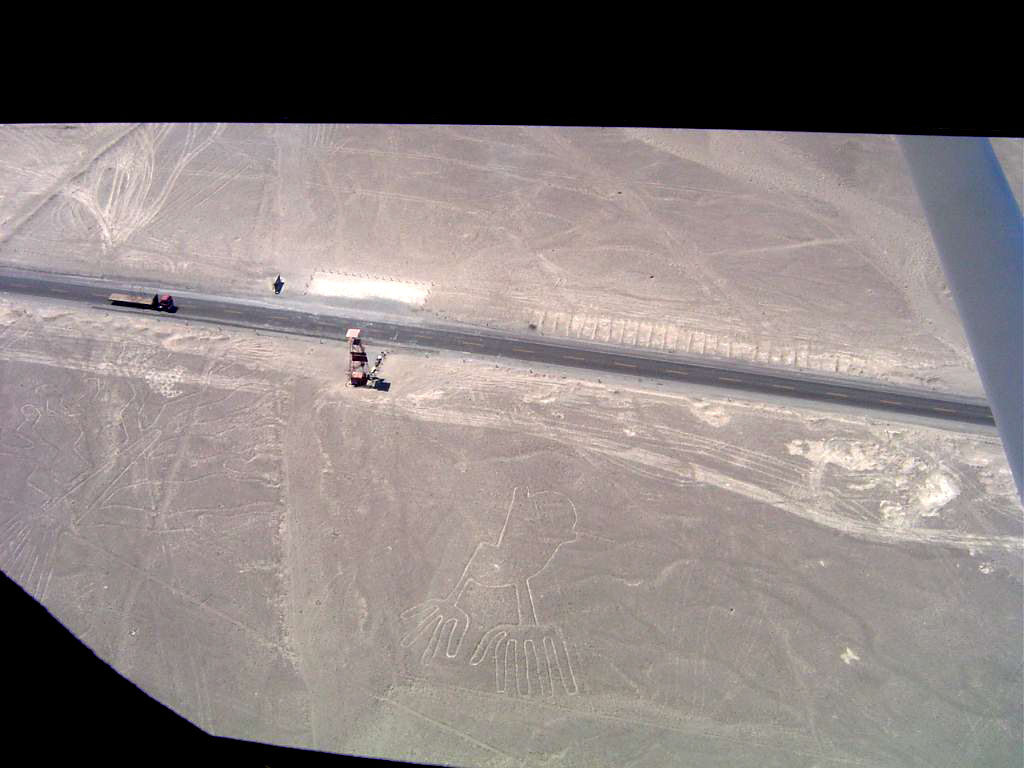
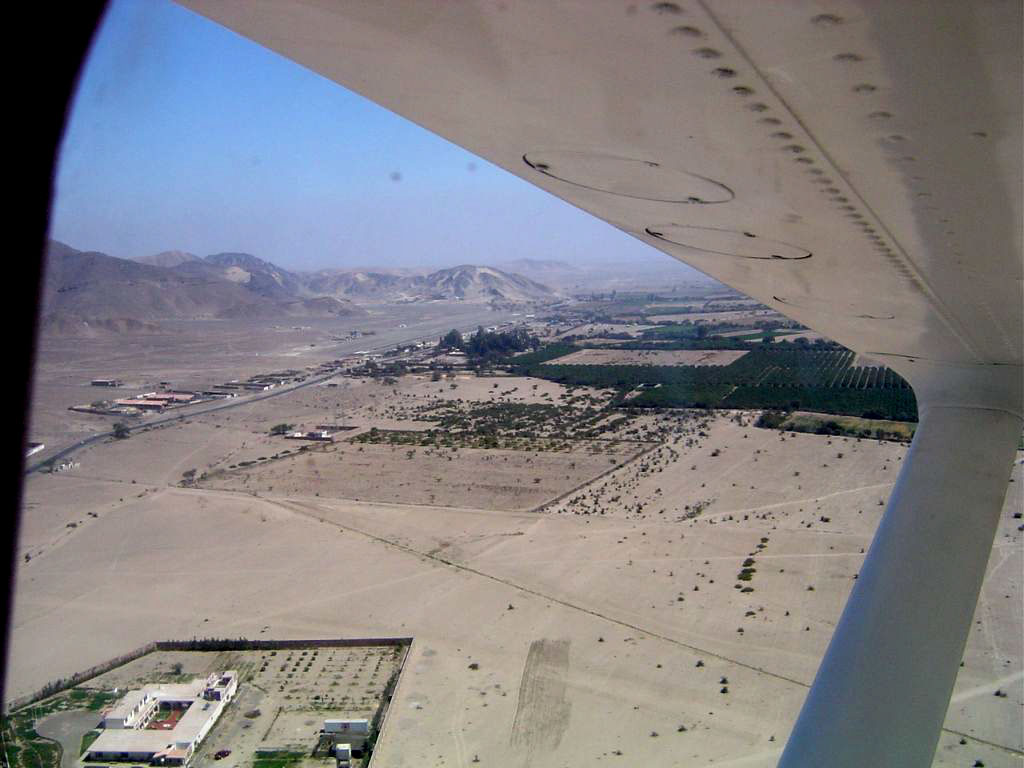
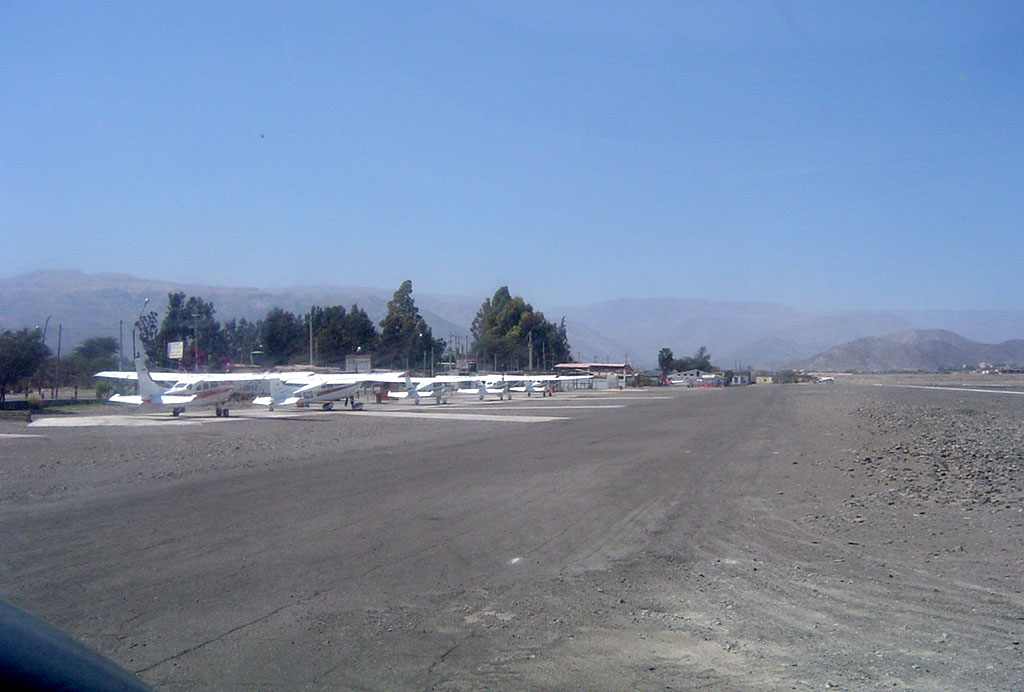
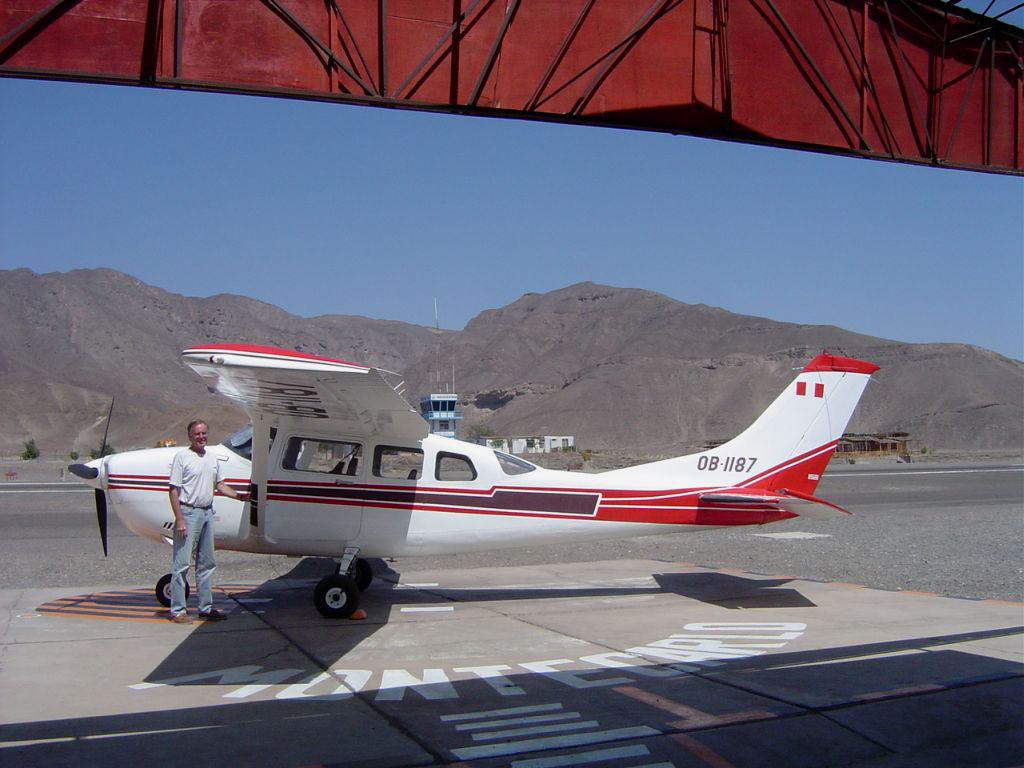
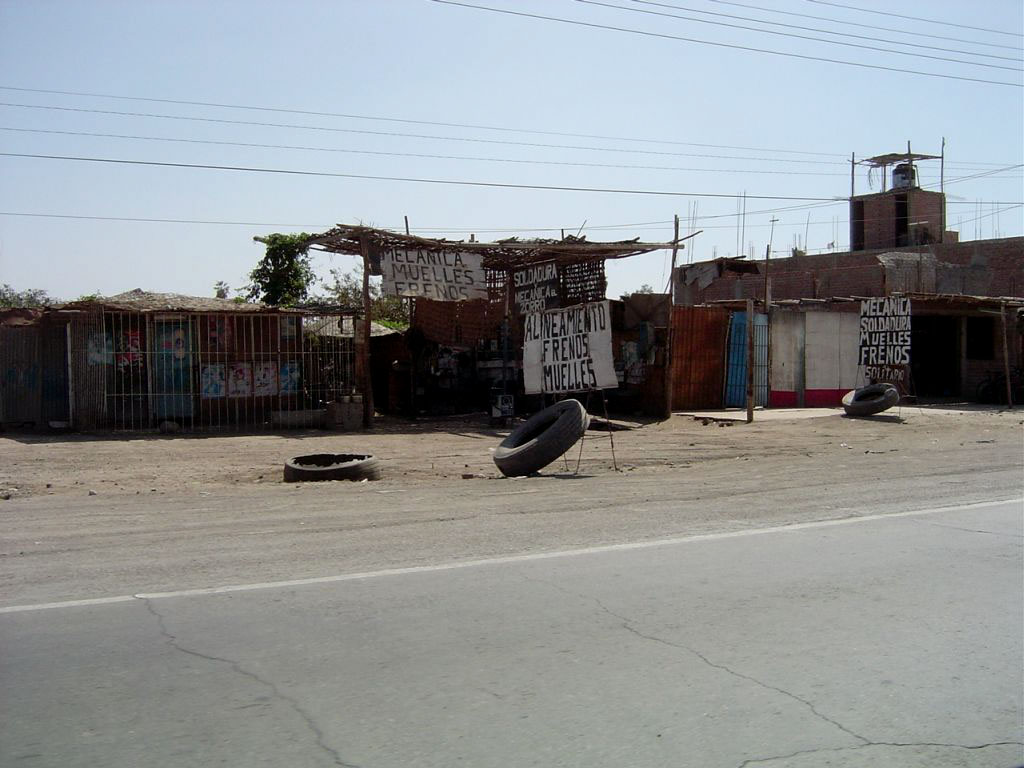
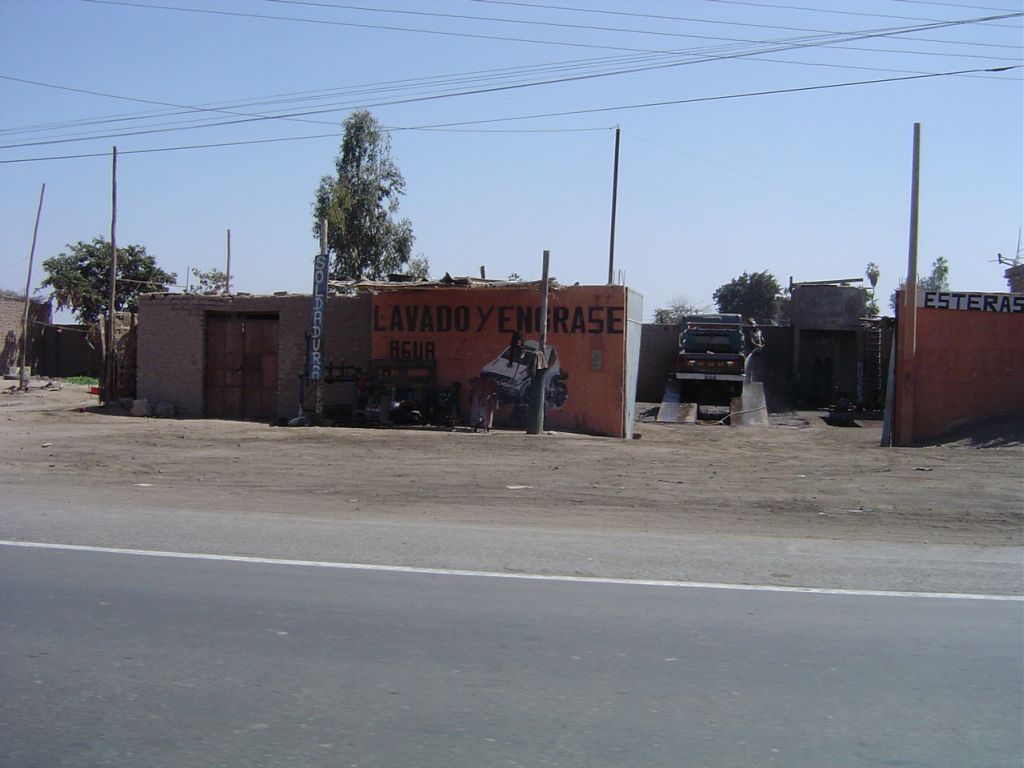
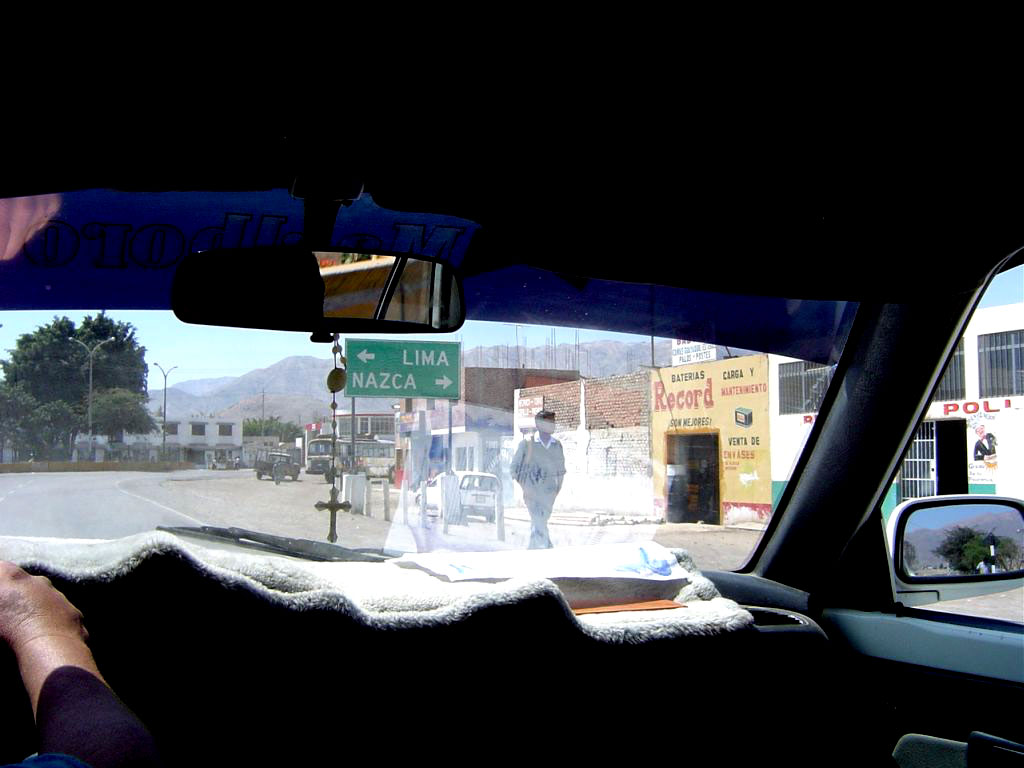
August 27th
The Pan-American Highway, leading east from Nasca starts climbing into the Andes immediately and doesn't stop until it reaches 15,000 feet. Dry as a bone, the terrain offers no sustenance to man or beast. A few cactus struggle to survive. The rocks lock like those from Mars lander photos. Near the top, rain must fall occasionally. Vegetation is sufficient to support cows and goats which are guided on the highway as though it were a mountain path. llamas appear, some with ear tags indicating they belong to someone and others, unmarked, wander on the road. At the highest point the road flattens out and curves around several dark-blue lakes, several of which have flocks of flamingos. The town of Puquio, three hours along the way, appears normal until you enter. The road, smooth, though twisting and winding, disappears. Ruts and rocks slow you to less than 10 miles per hour. Two lanes become one, shared by cars, trucks and busses. The route directly through town is unavailable; the town market stalls keep it closed. You must take the long way, around the periphery, to find the other side. Eventually the Pan-American Highway reappears, two lanes, smooth and fast.
The temperature slowly drops all the way up. Snow appears on the highest peaks and water, appearing in puddles along the side of the road, has a thin cover of ice.
After six hours of driving we arrived in Chalhuanca, half-way to Cusco. With perhaps 10,000 inhabitants, it's a quarter-mile long and three blocks wide, hugging a clear mountain stream. Clearly, the water stays on the east side of the Andes, feeding the tributaries of the Amazon. The next town large enough to support a hotel was another two hours away; we commited to finding lodging here. Initially, our prospects looked bleak. The restaurant where we had lunch offered rooms on the second floor with a shower and toilets on the third floor. The thought of climbing a flight of stairs to brush our teeth with ice-water in the freezing air under the moon-light shining on the un-enclosed sink was the deciding factor. We pressed on. Hotel Zegarra provided a clean, but basic, room with a bath and inside parking for the princely sum of 35 Soles ($10.00 US) so we jumped on it.
Before dinner, we wandered through town, buying fruit and cookies from push-cart vendors. Those we photographed were delighted to be able to see how they looked on the small display on the back of the digital camera, clearly a new item to them. Elsa stepped up to the plate for dinner and tried a local specialty, Cuy, or Guinea pig. They're small and skinny, but the meat is sweet.
An after-dinner walk took us past a store-front where a pig was being prepared for the next days feast. There it was, complete, laid out on it's side, waiting for the roast to begin.
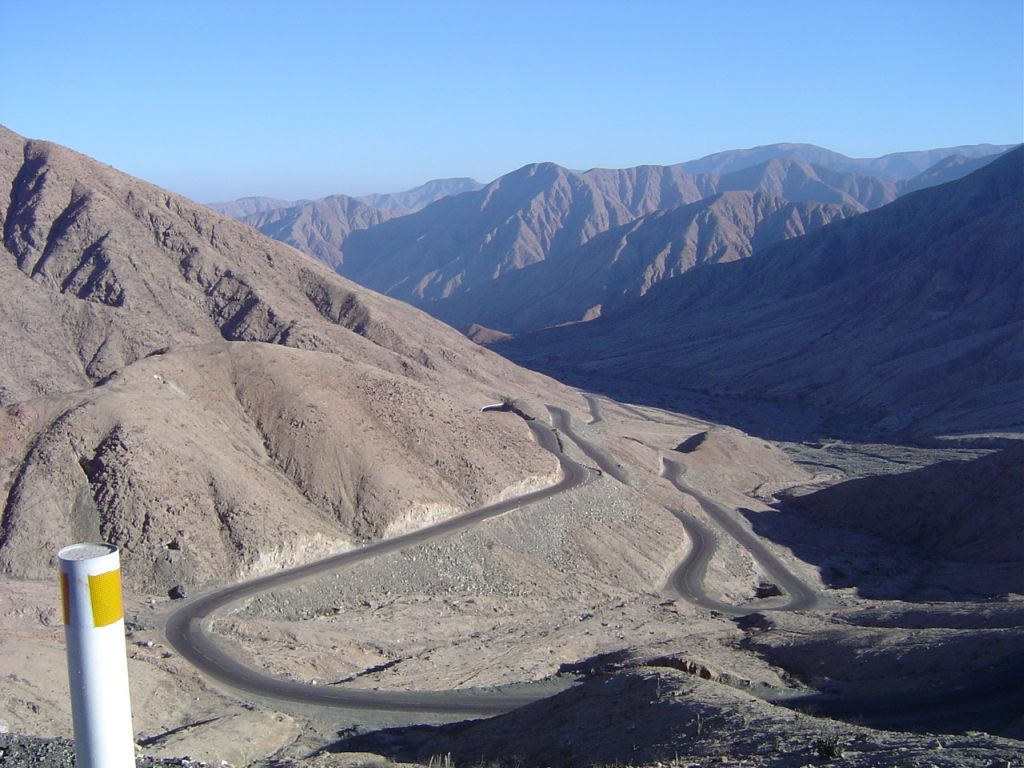
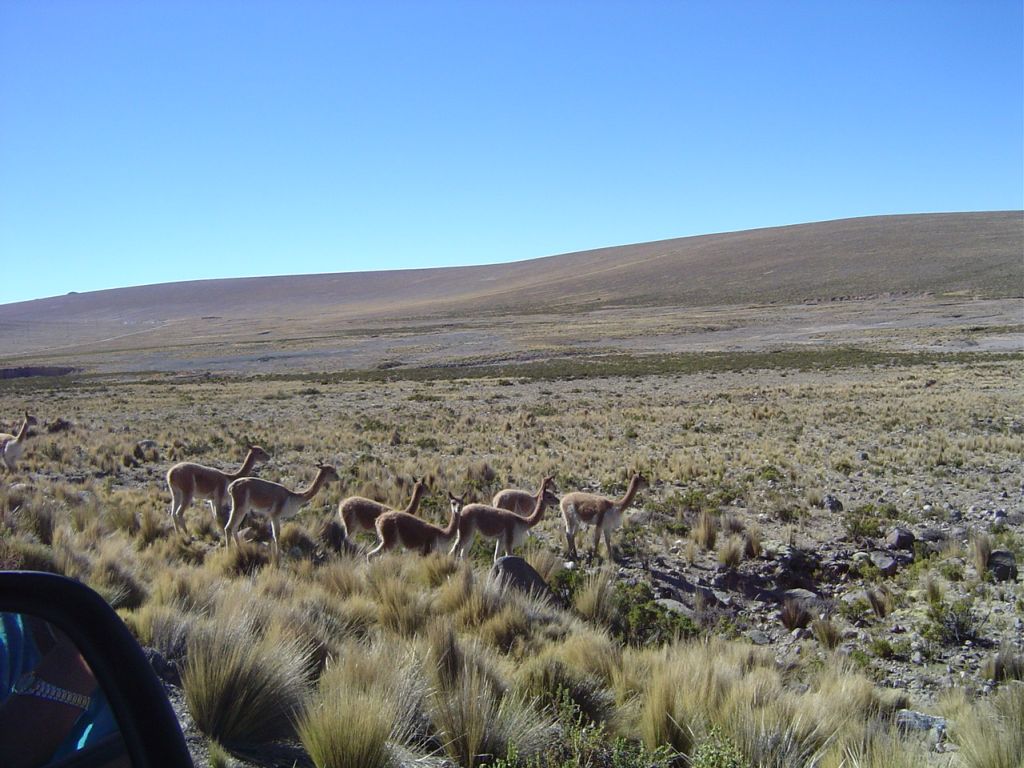
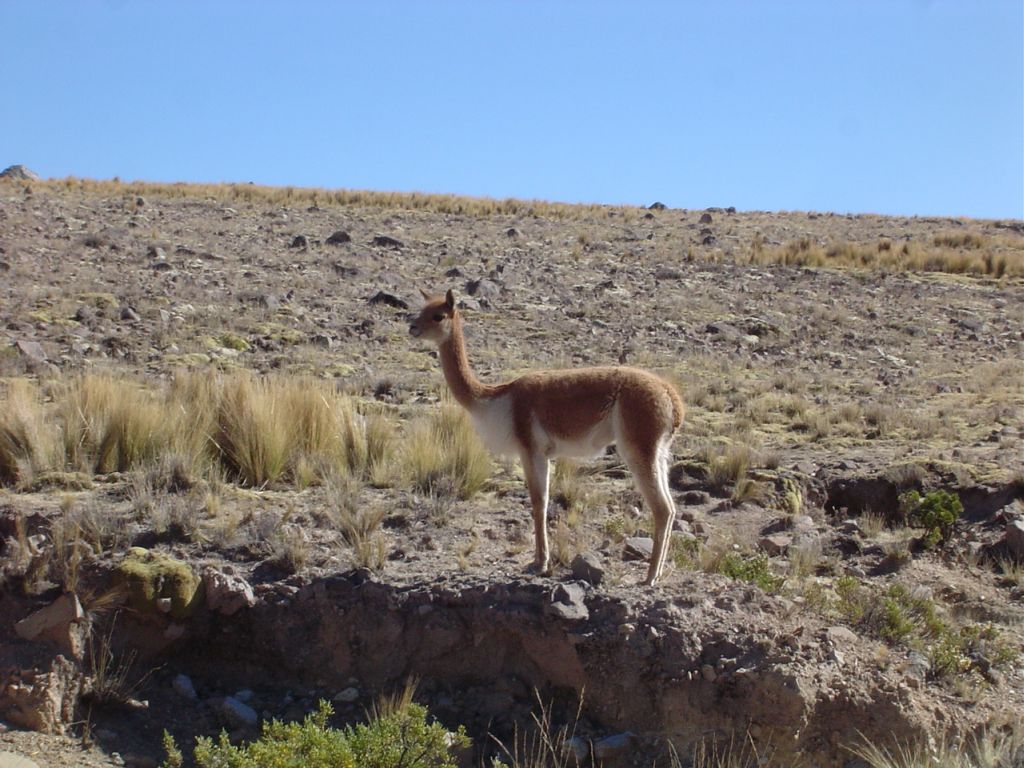
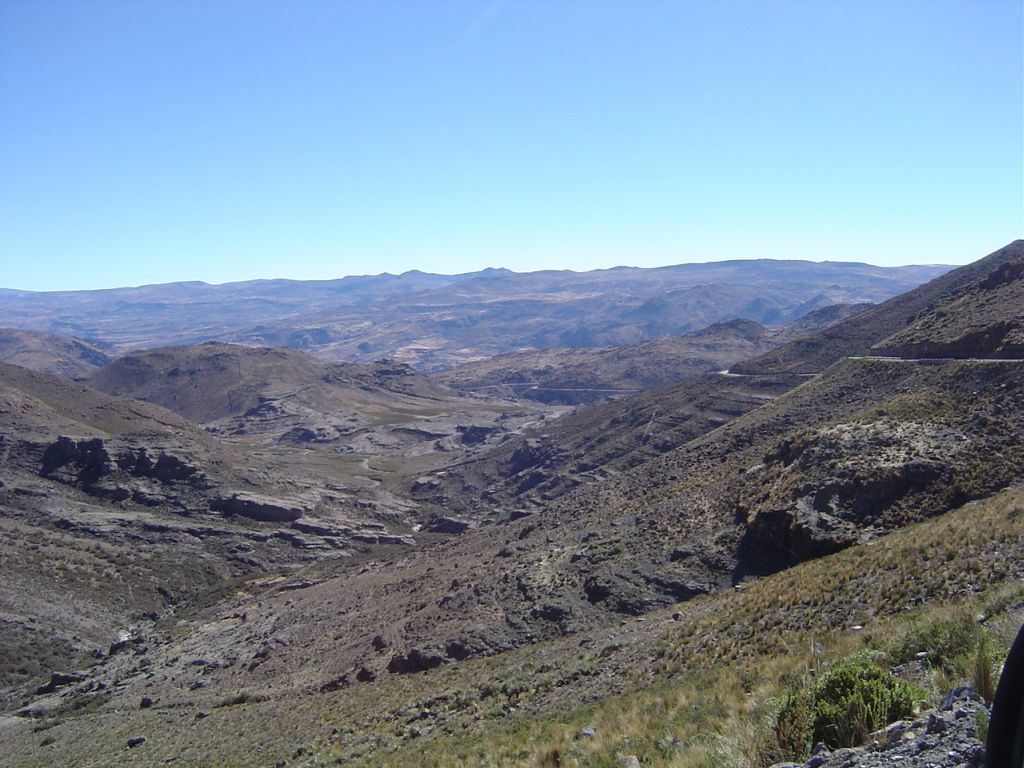
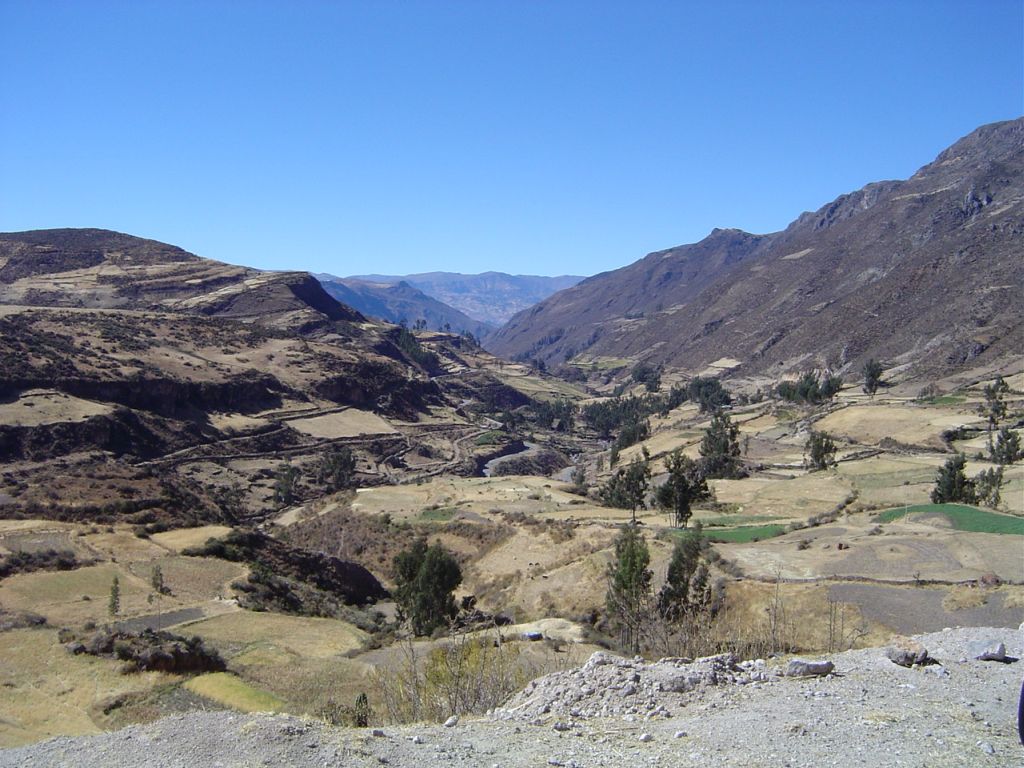
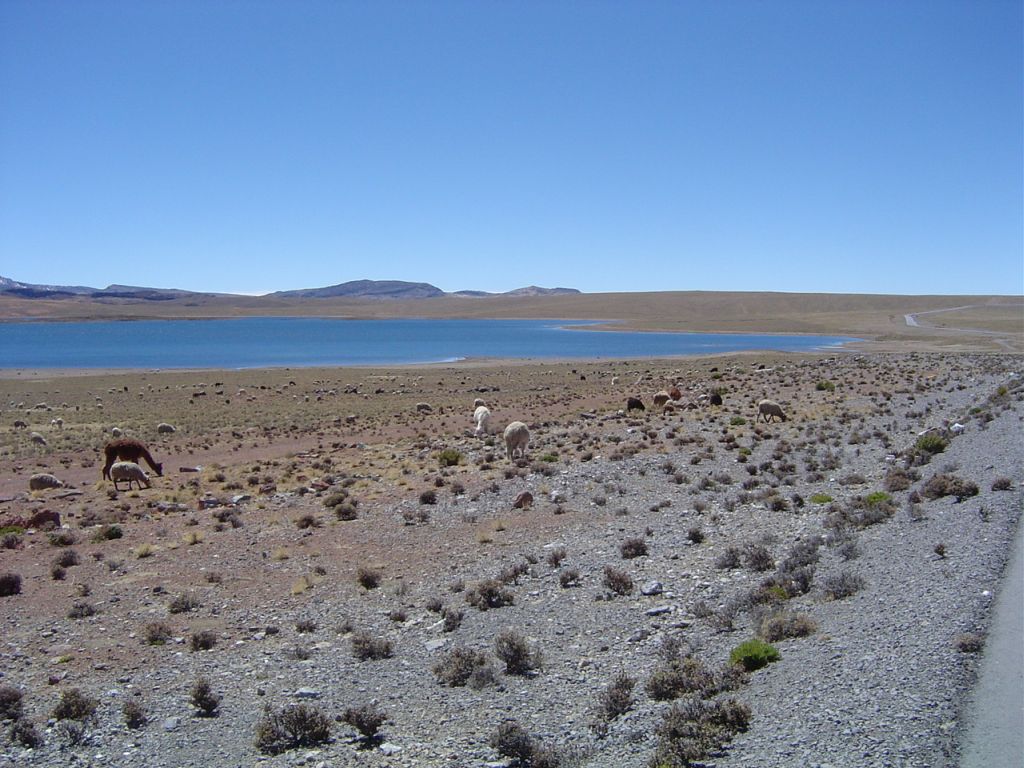
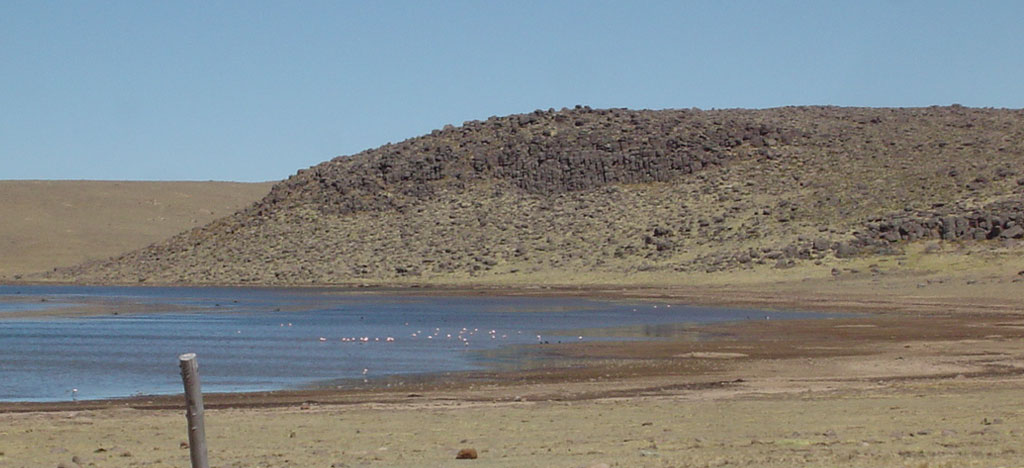
Flamingos
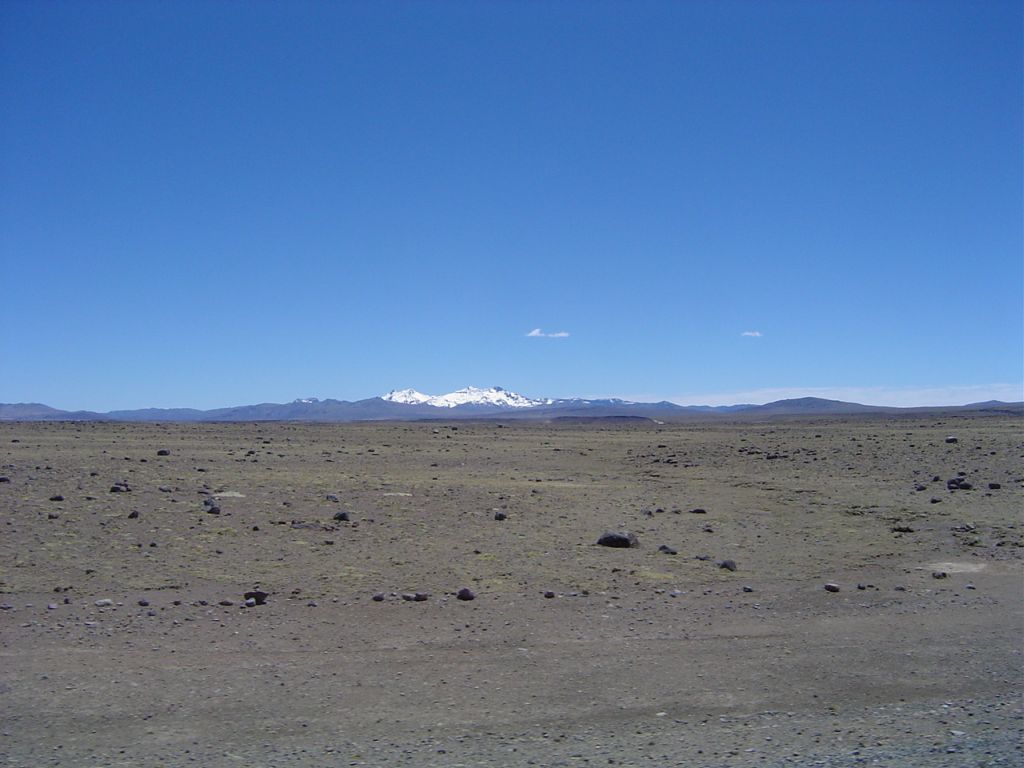
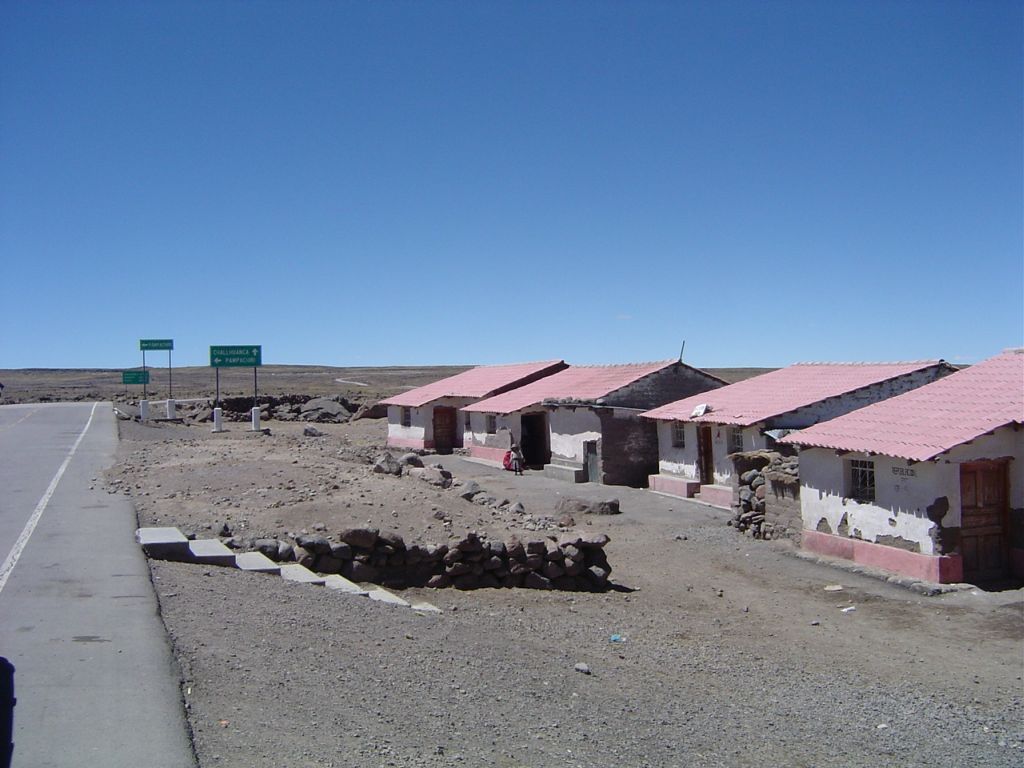
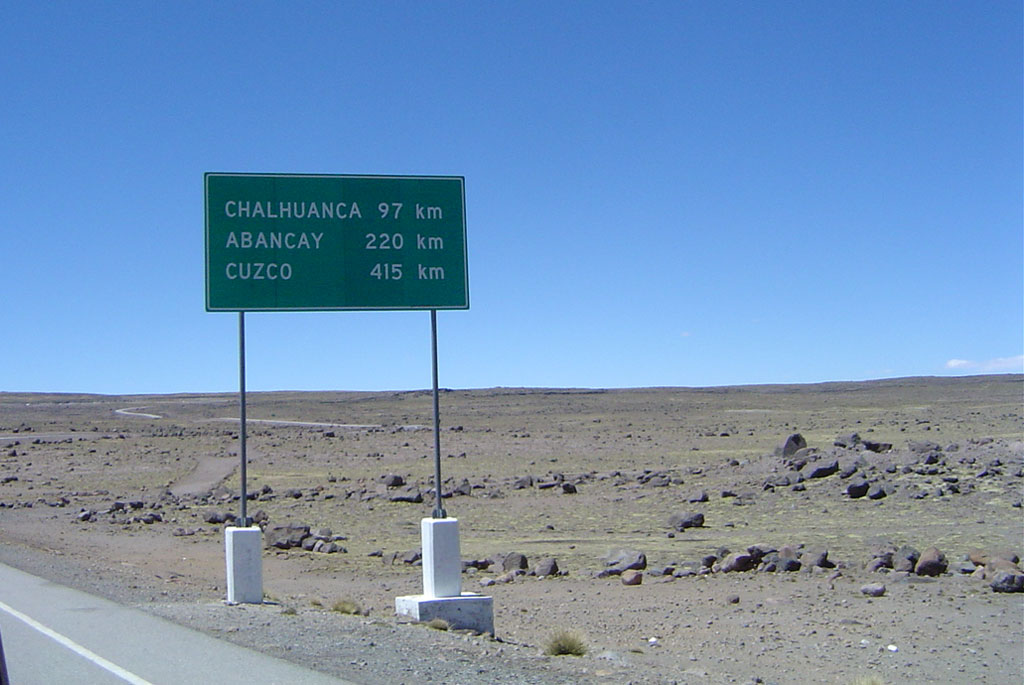
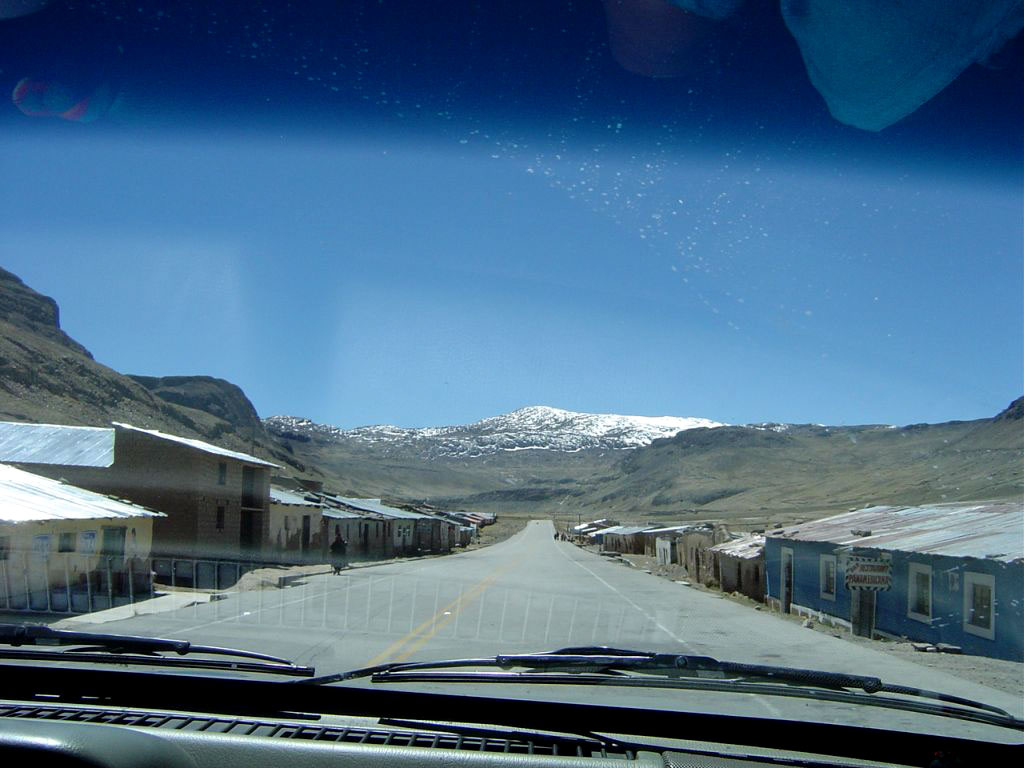
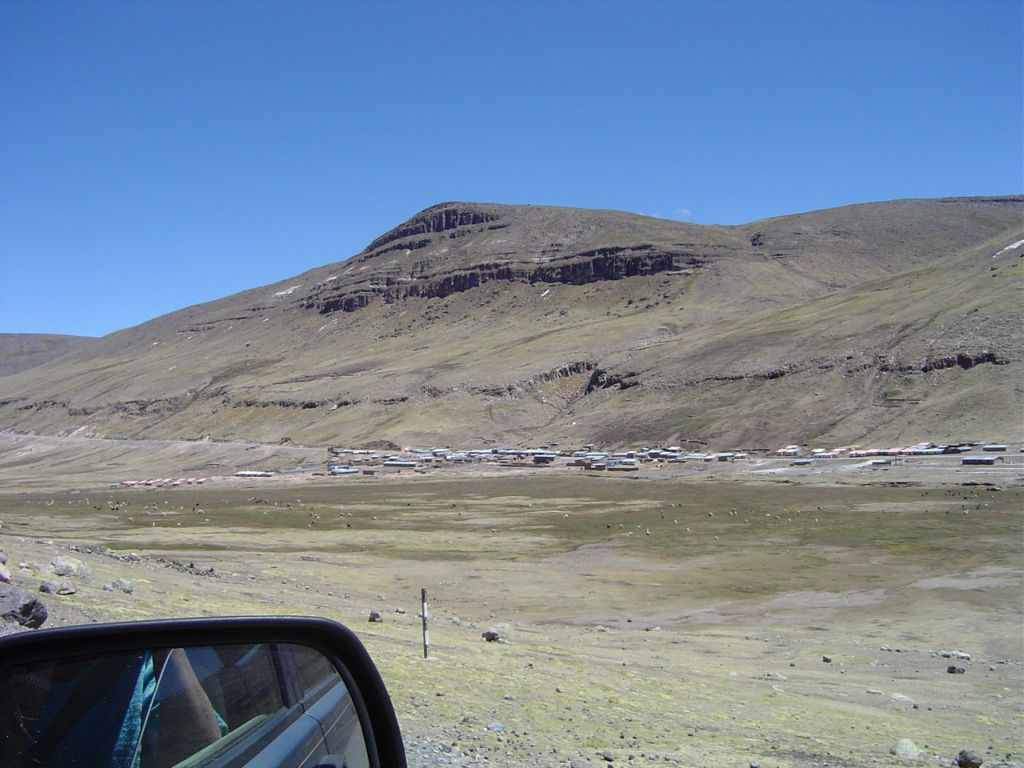
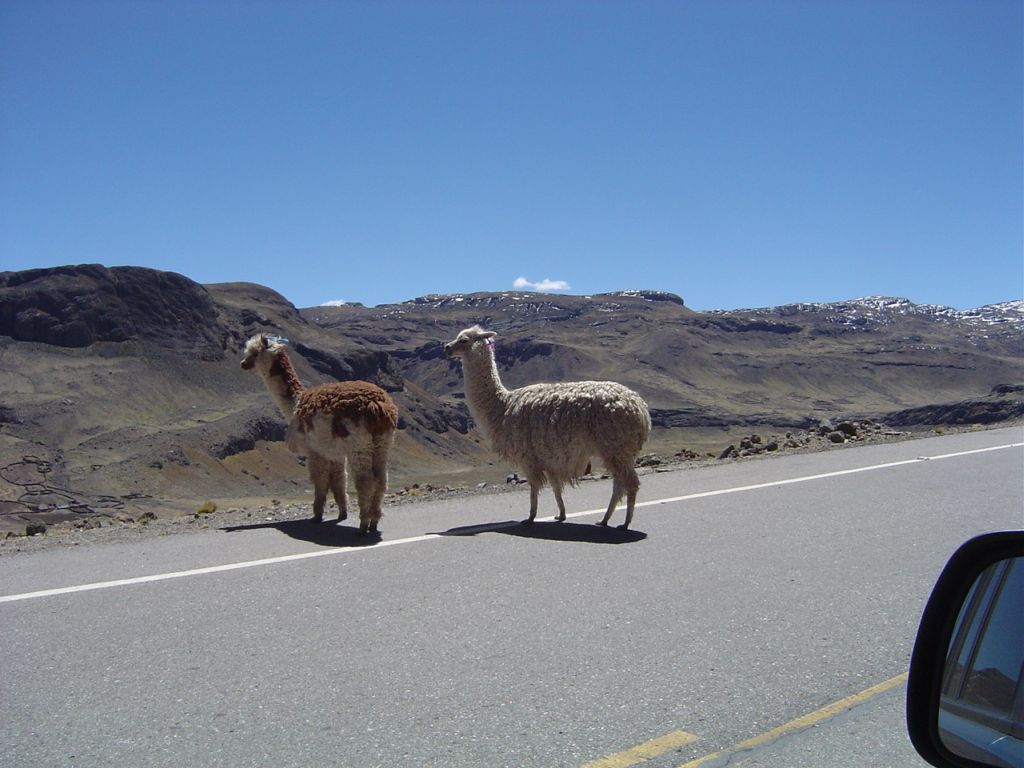
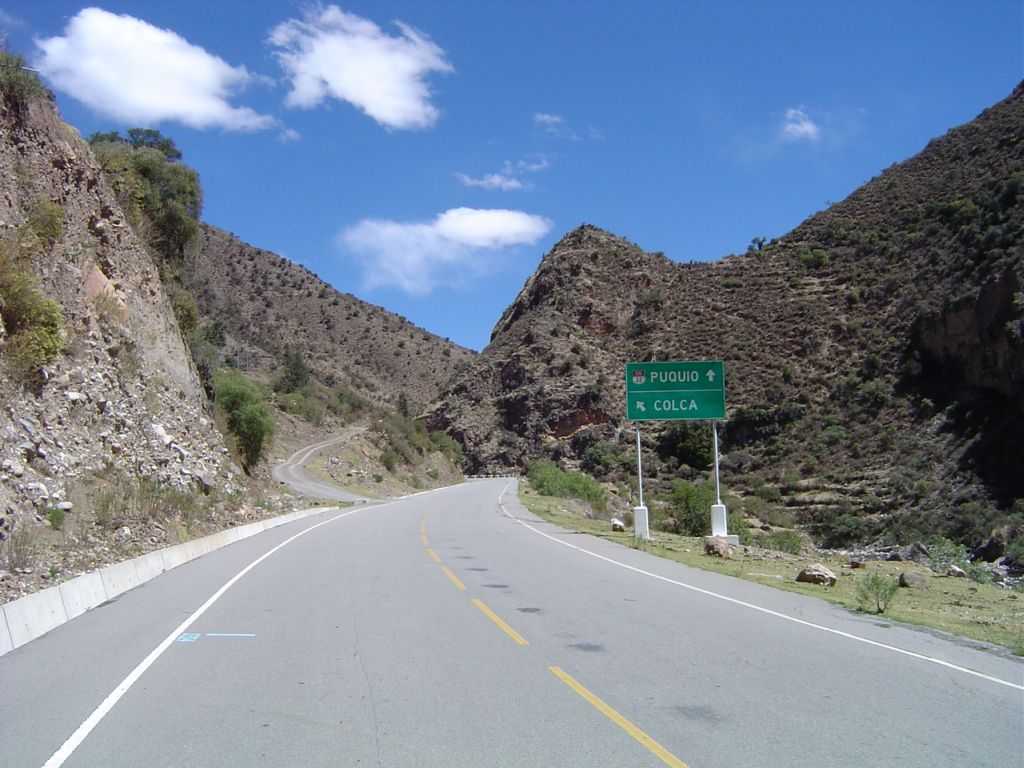
Puquio it is...
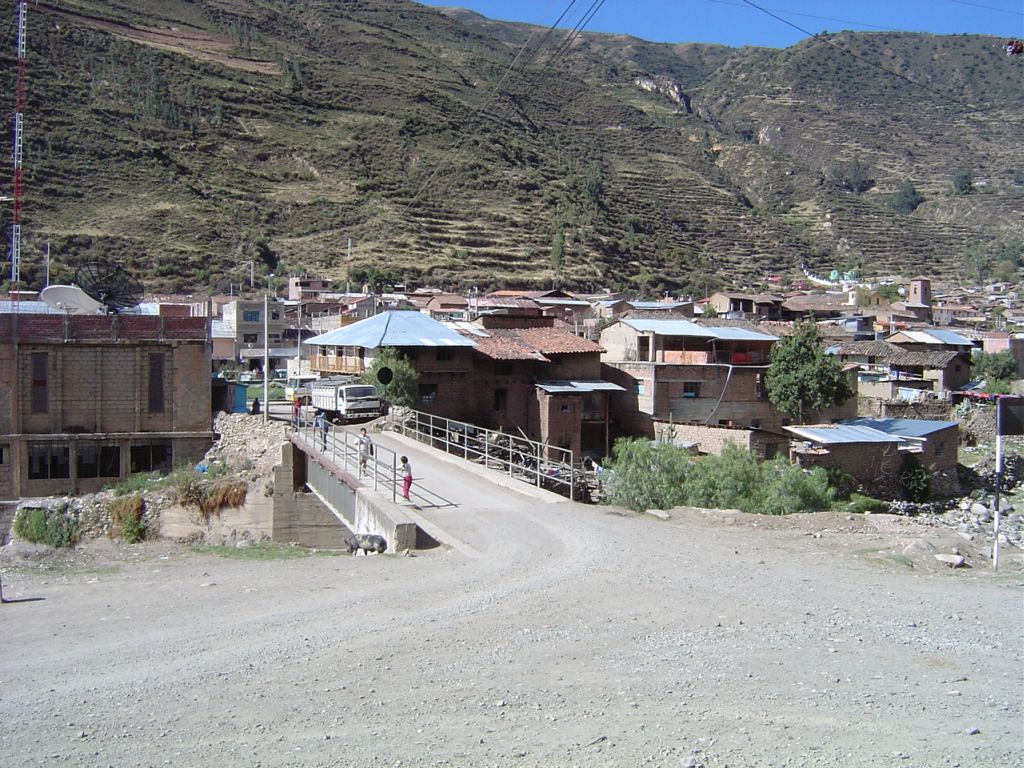
Little did we know that we would be treated
like visiting royalty in Chalhuanca
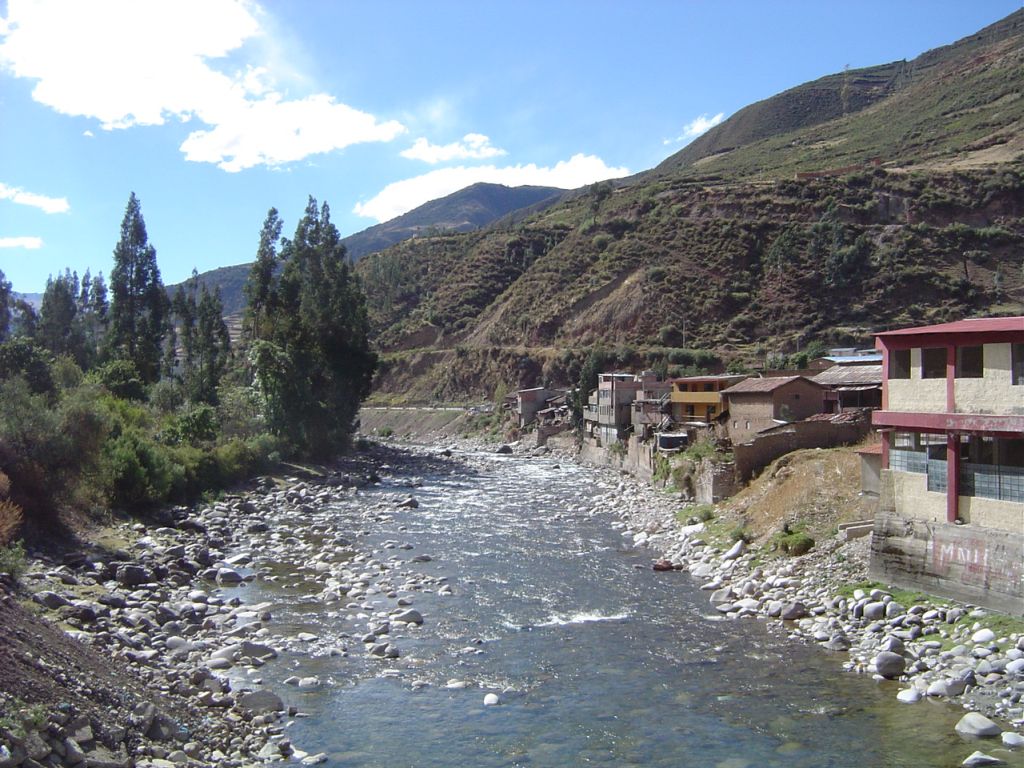
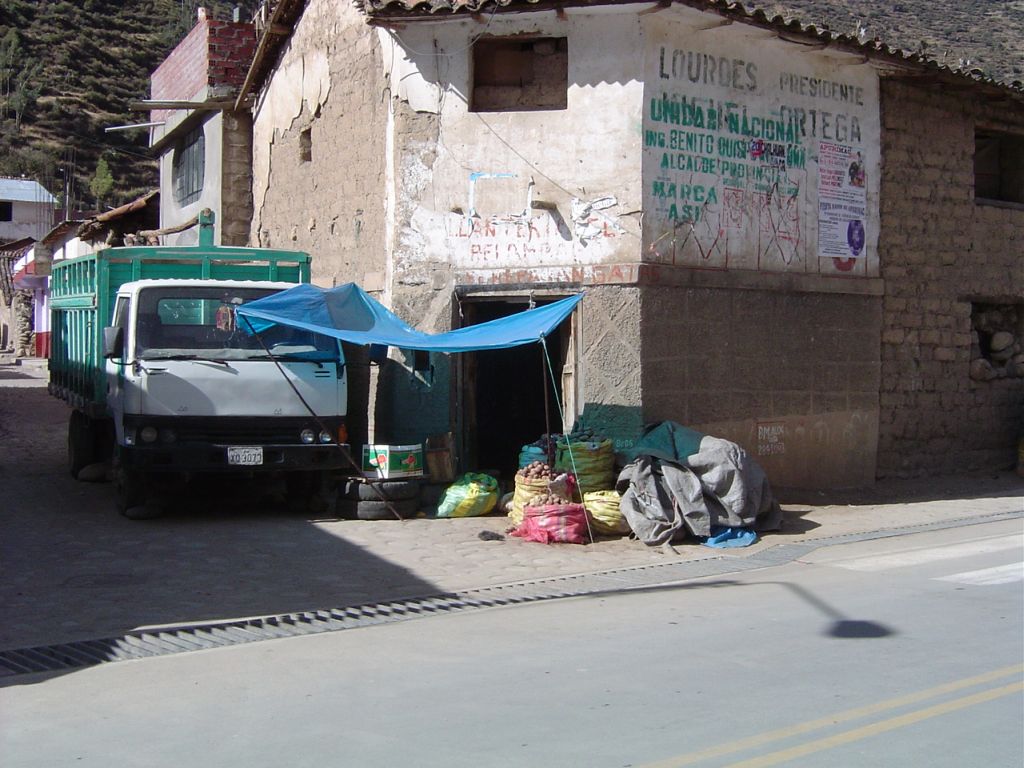
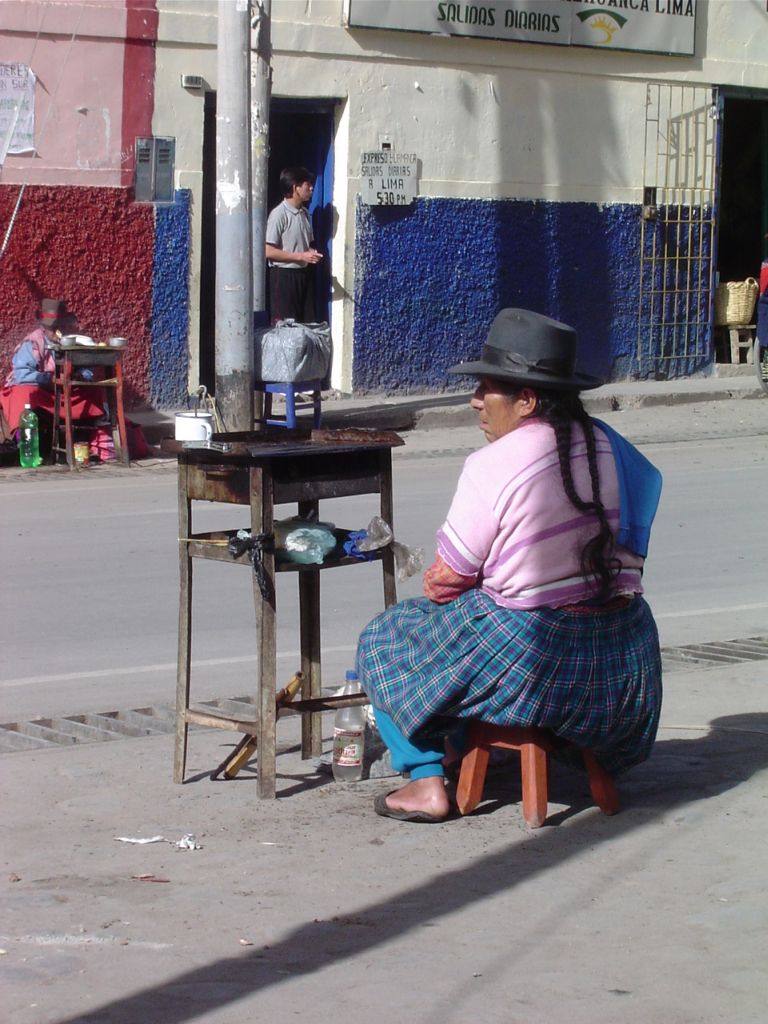
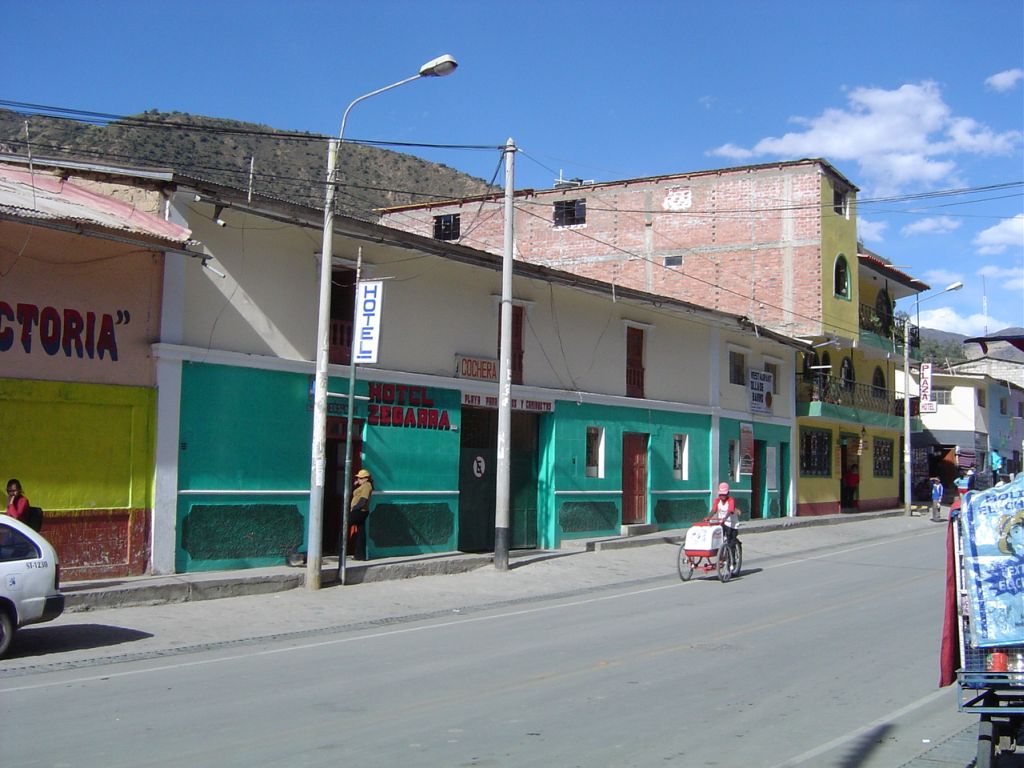
We stayed at this hotel because they let us put
the Jeep in the courtyard behind the dark green door
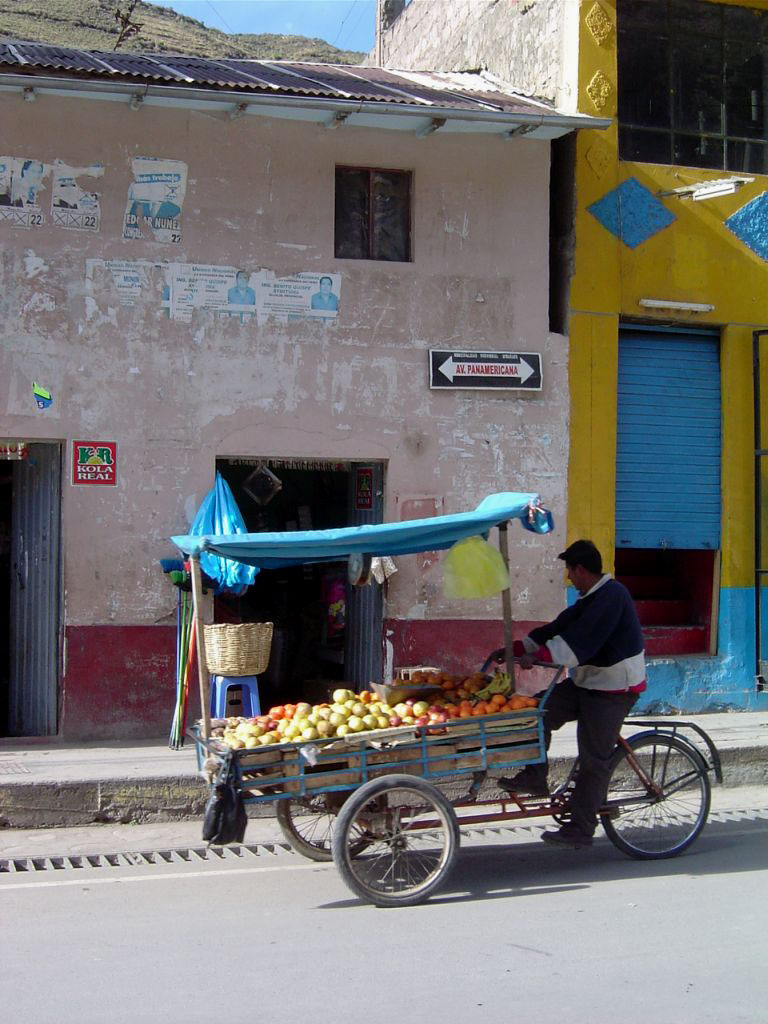
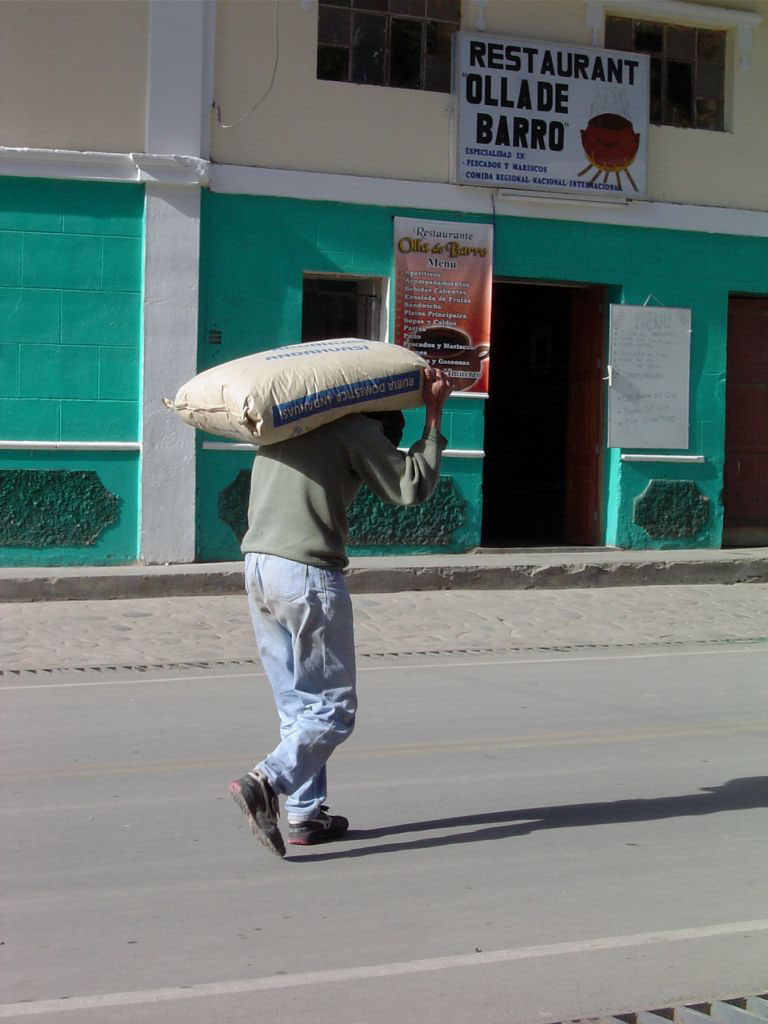
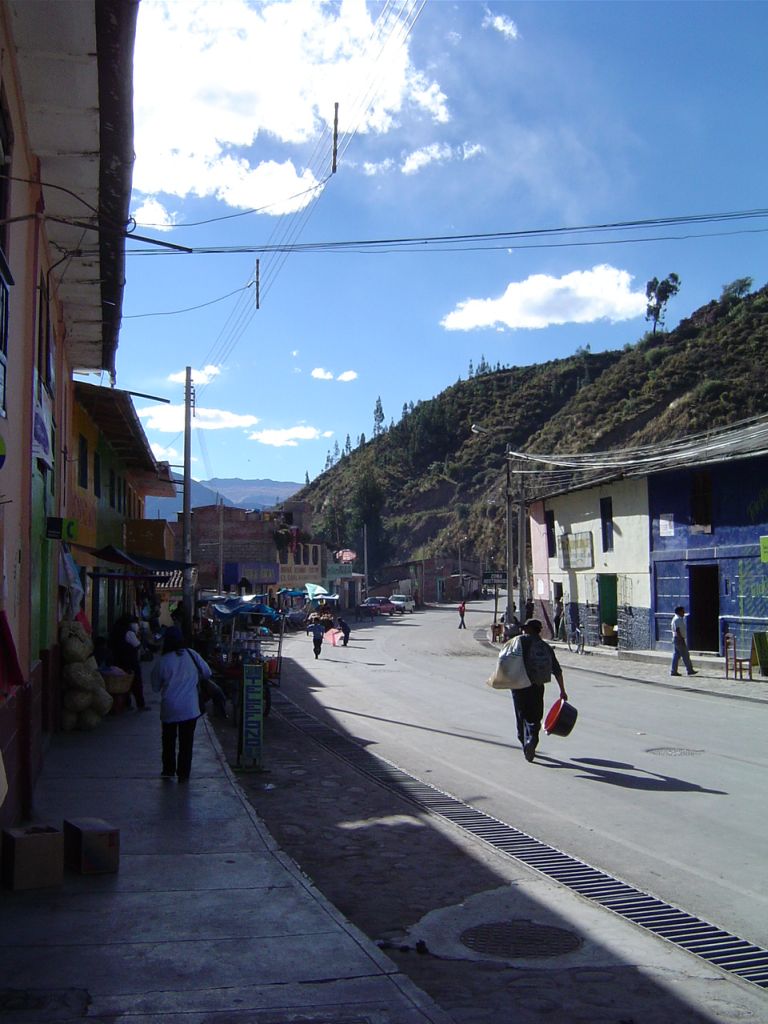
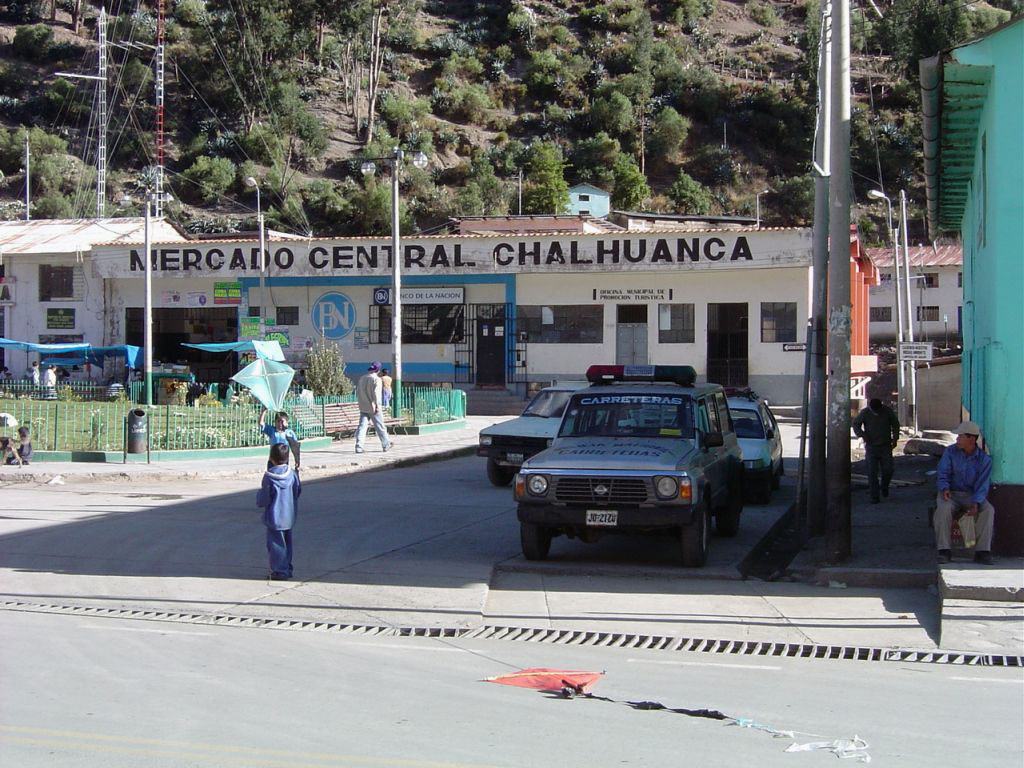
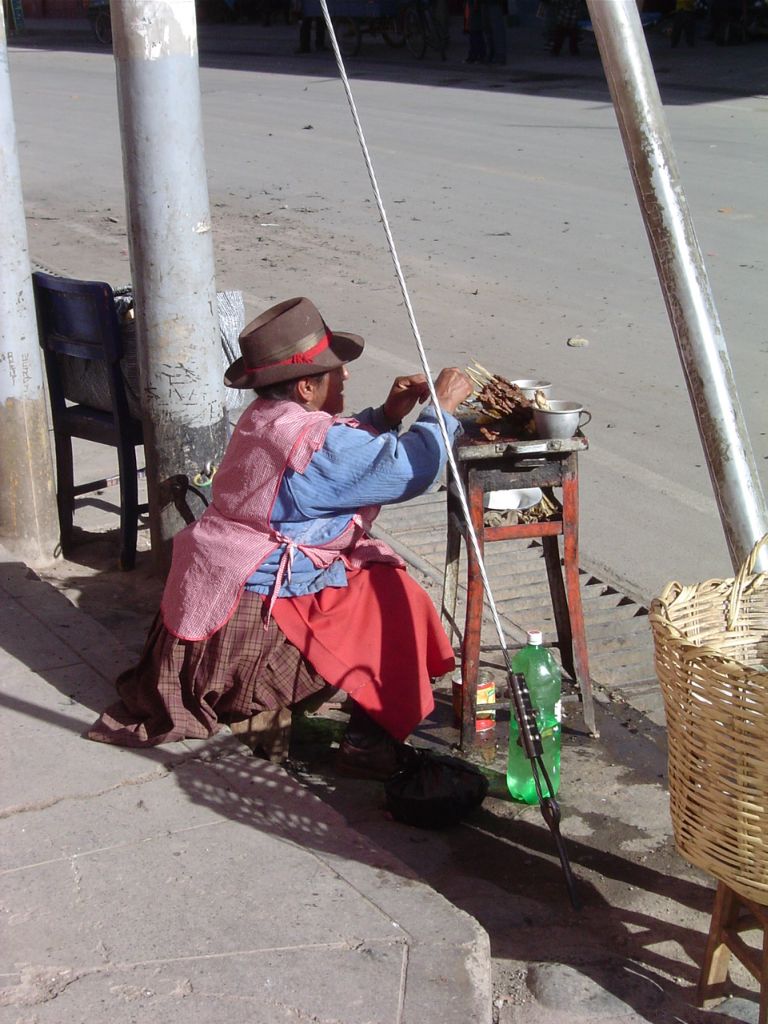
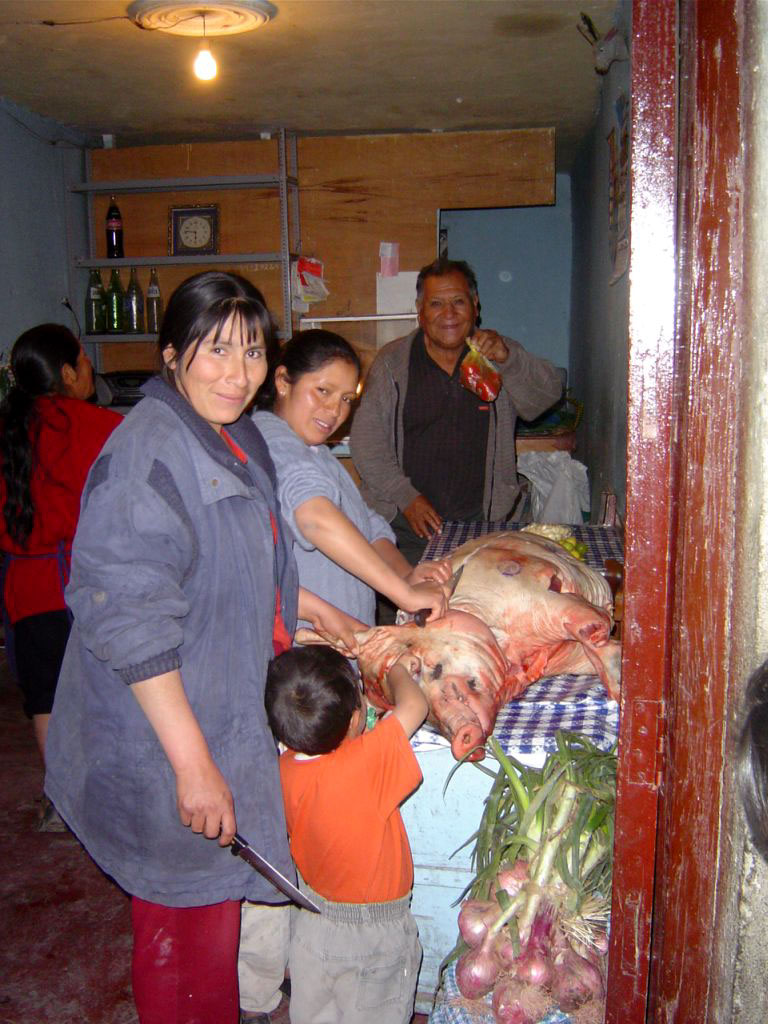
The home was open to the street, so we stopped.
Naturally, we were invited to dinner
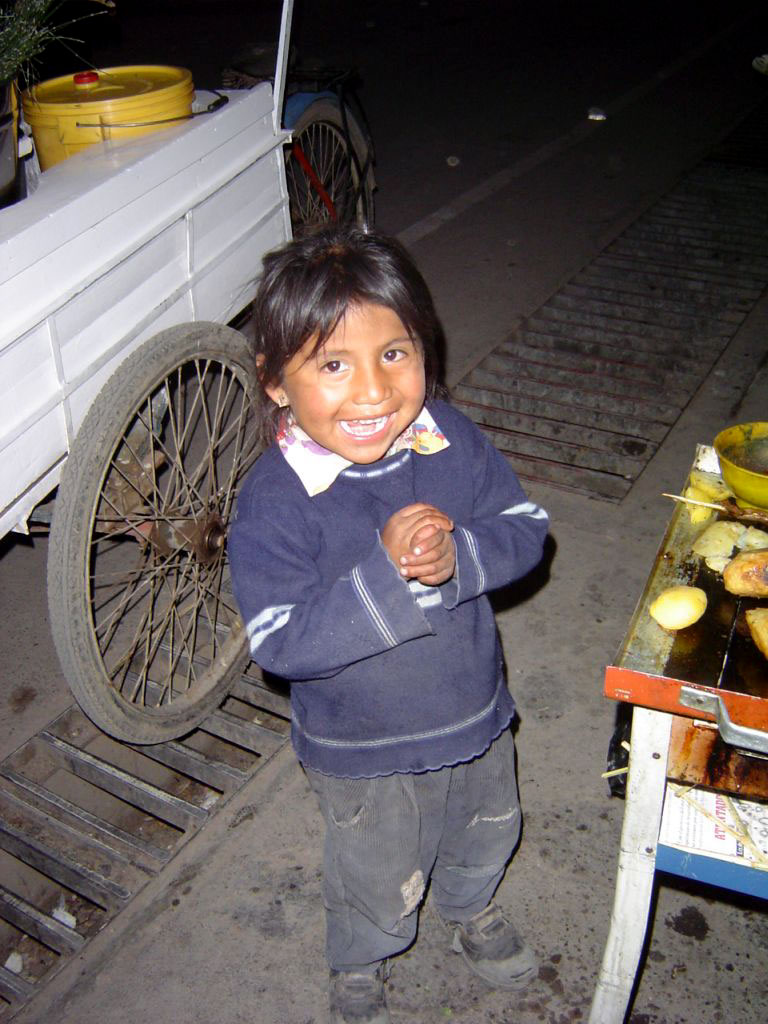
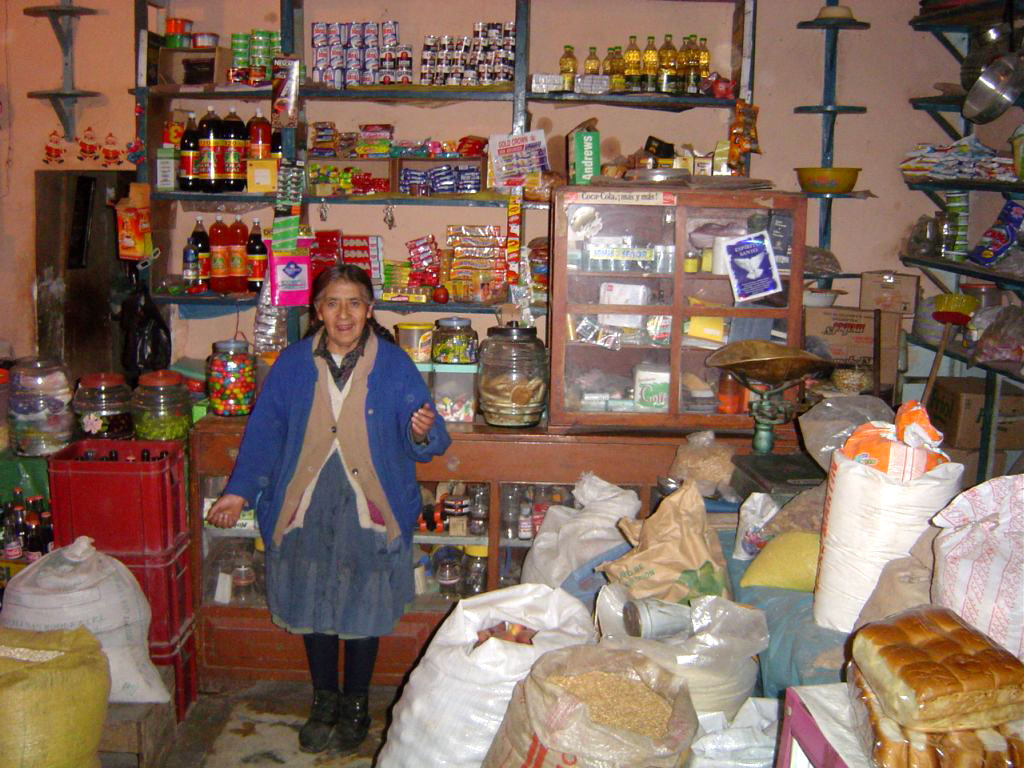
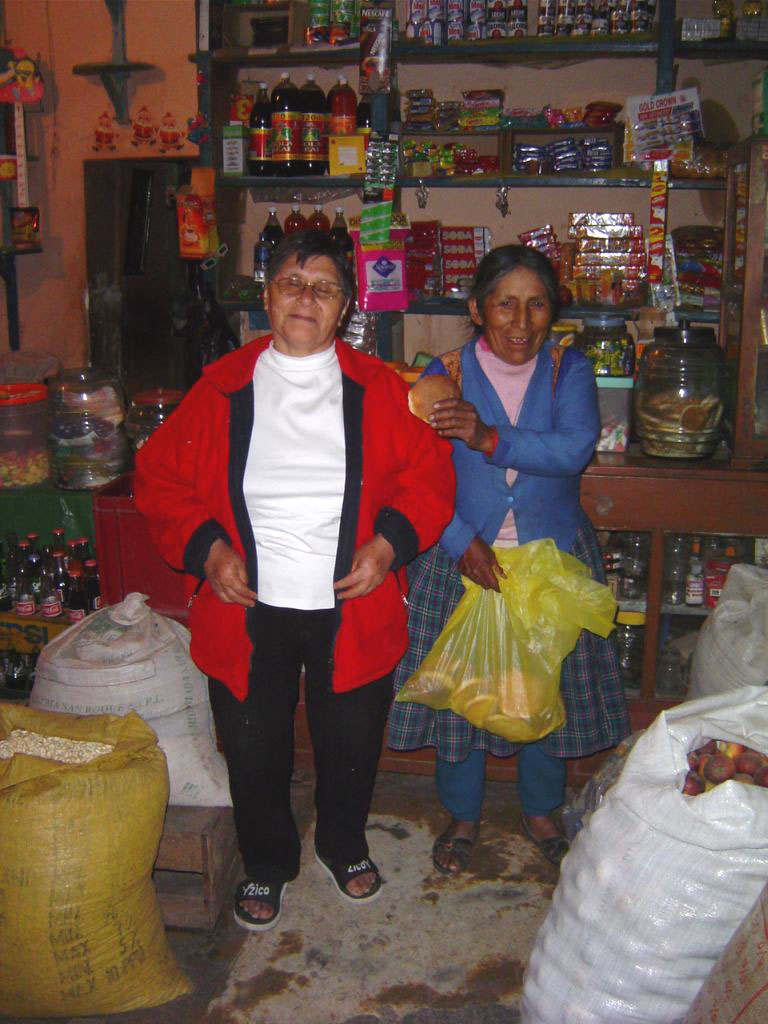
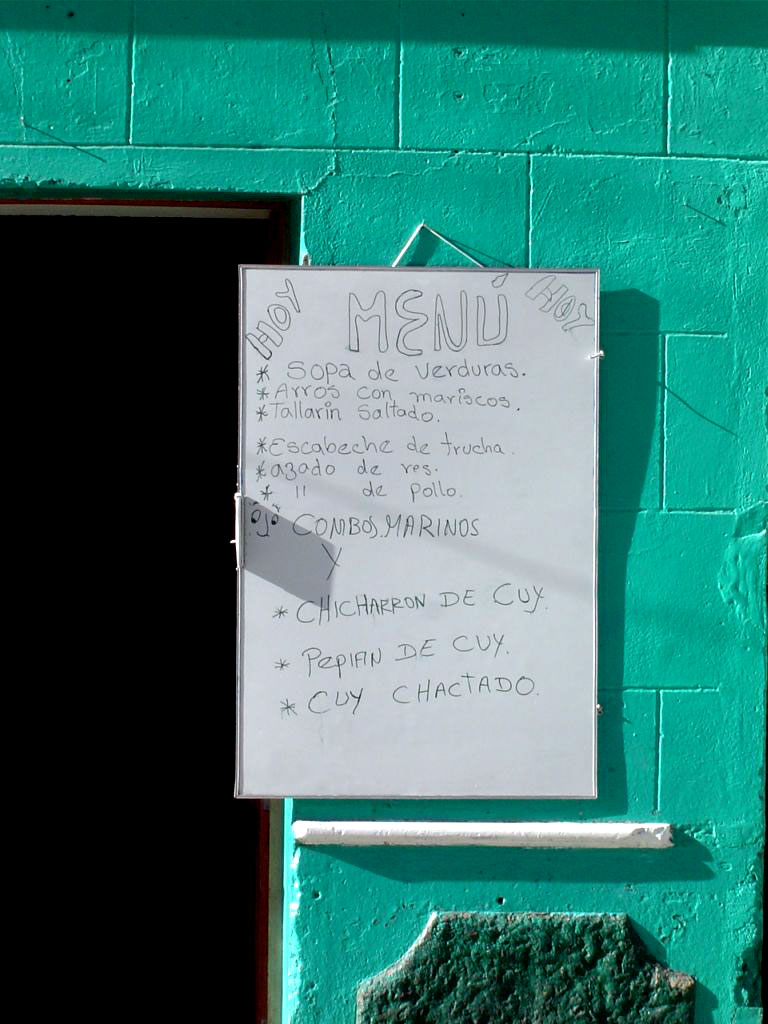
We choose this place for dinner instead
Cuy means Guinea Pig
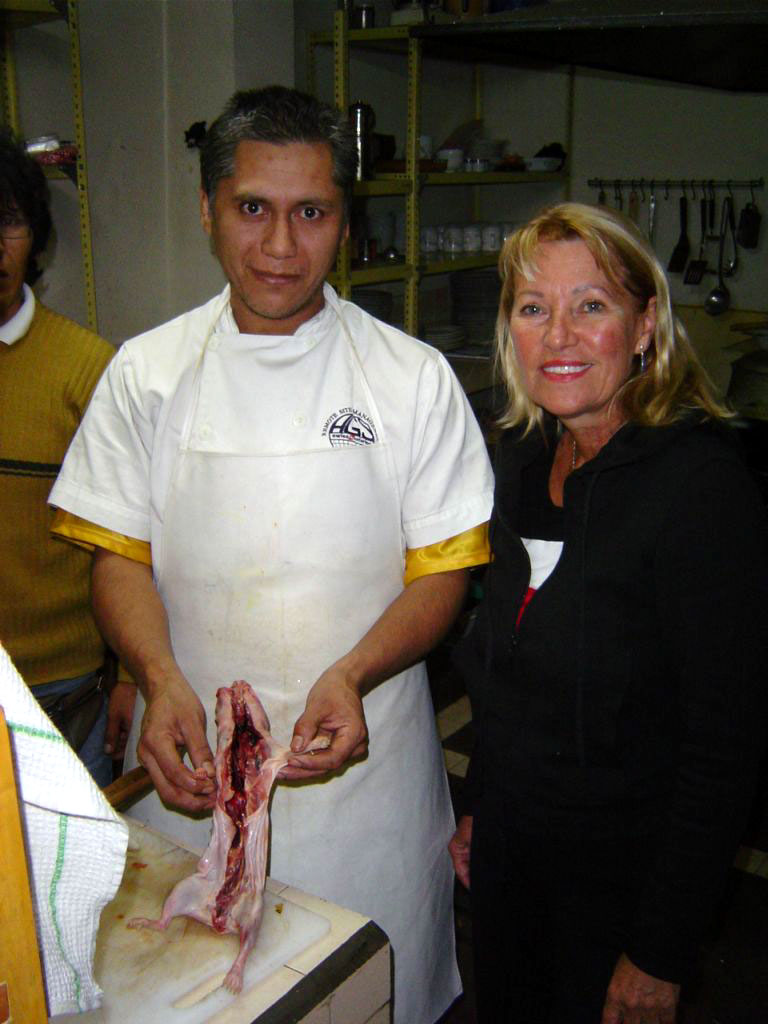
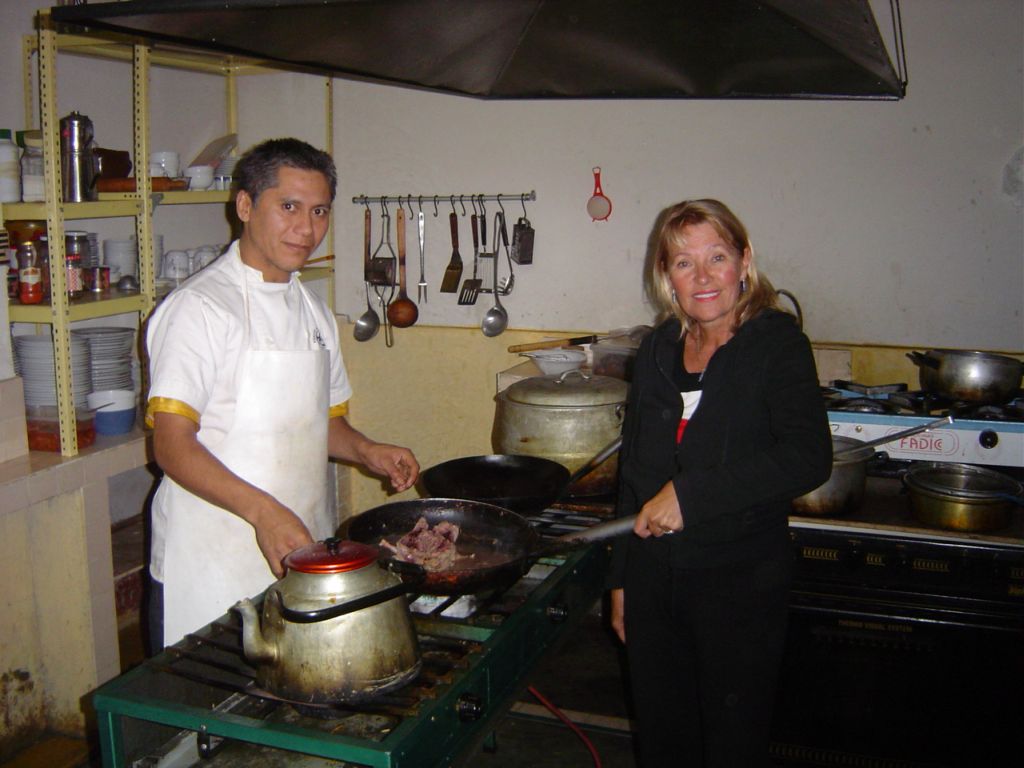
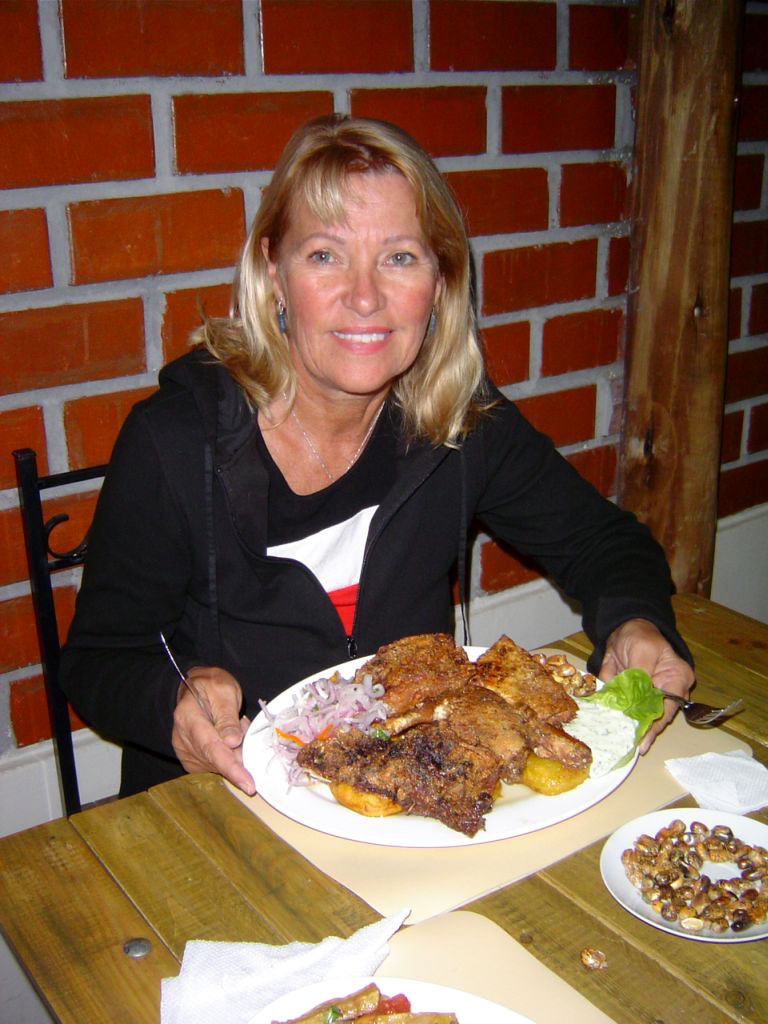
August 28th
On to Cusco, only 200 km, but a six-hour drive due to the climbing, winding road. The road was good, traffic was non-existent and the skies were crystal clear in the mountain air at 13,000 feet. Cusco finally appeared, the city's red-brown adobe buildings with reddish tile roofs, almost blending in with the red soil. The streets were full of people, but cars rule the world here; pedestrians scatter when vehicles approach.
The Hotel Ruinas, a block from the Plaza de Armas, had everything we were looking for, but they wanted $125.00 US per night. Elsa charmed and cajoled them into taking $70.00, so that became our home in Cusco.
